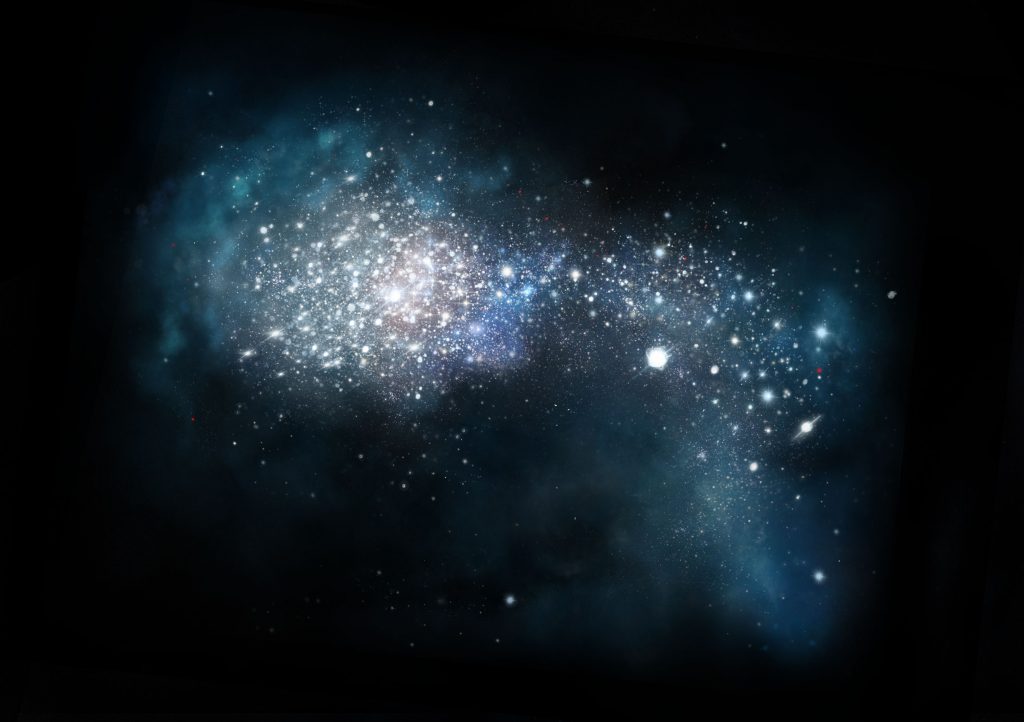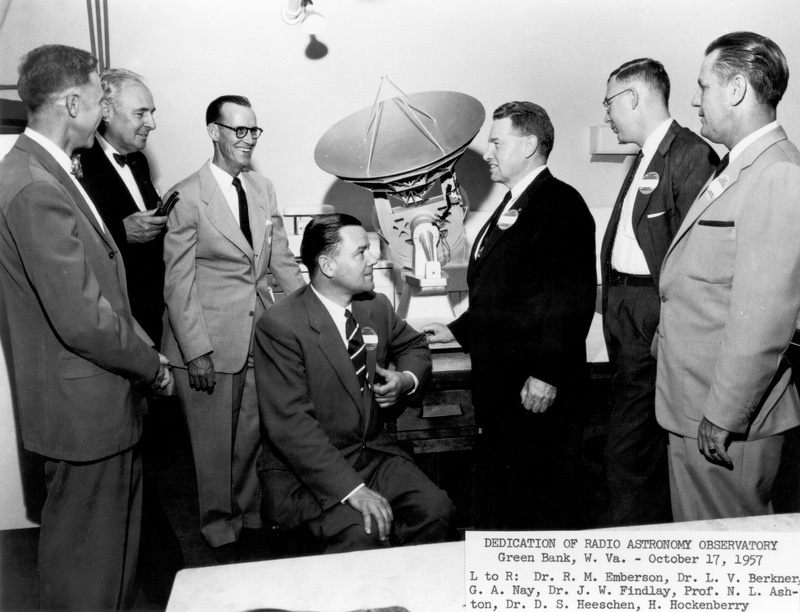
NRAO Dedication, 17 October 1957
Dedication of NRAO, 17 October 1957. From left: Richard M. Emberson, Lloyd V. Berkner, G. A. Nay, John W....
Read more
Gazing Upon Our First Telescope
The newly assembled 85-foot Howard E. Tatel telescope in Green Bank, West Virginia was the first radio telescope of...
Read more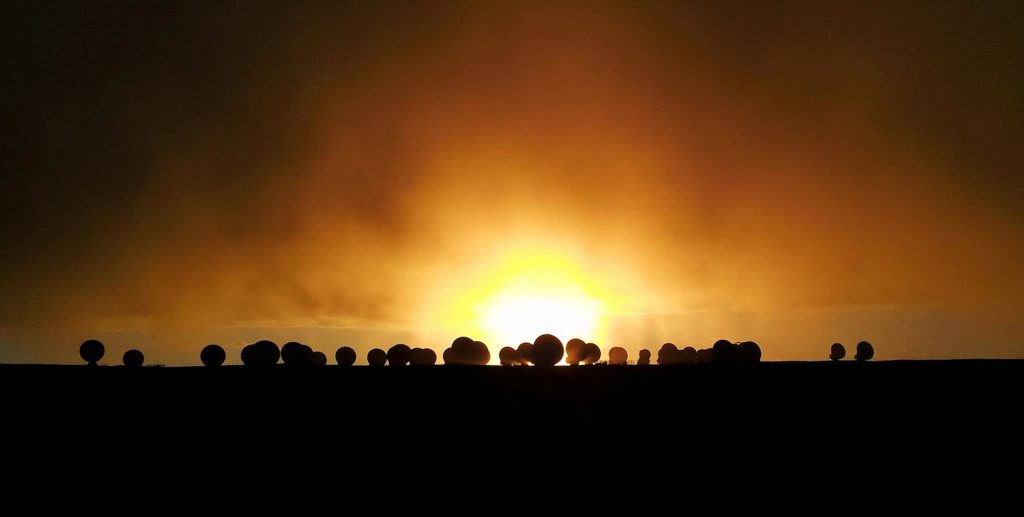
Stormy Sunset Over ALMA
A break in the clouds during a snowstorm creates a dramatic scene at the Atacama Large Millimeter/submillimeter Array in...
Read more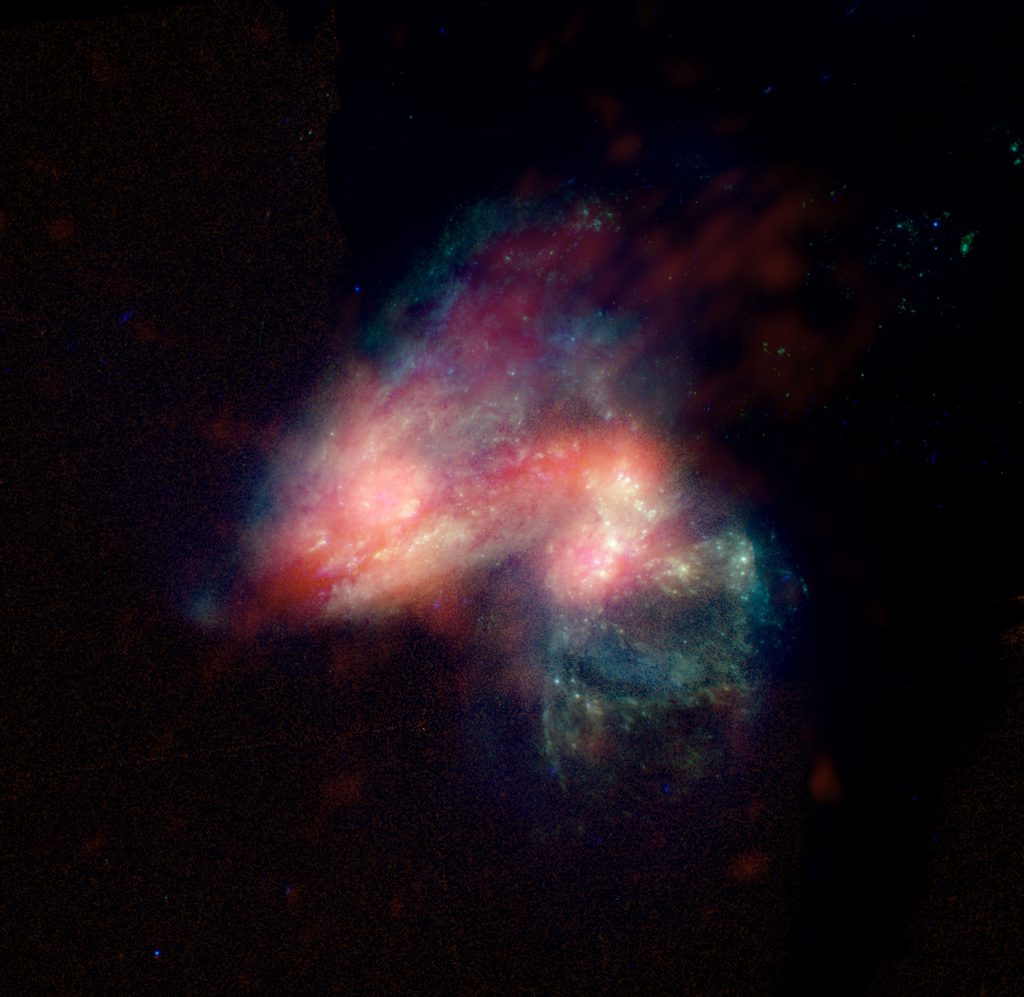
Arp 299
This colliding pair of galaxies is a region of vigorous star formation which has been investigated for many years....
Read more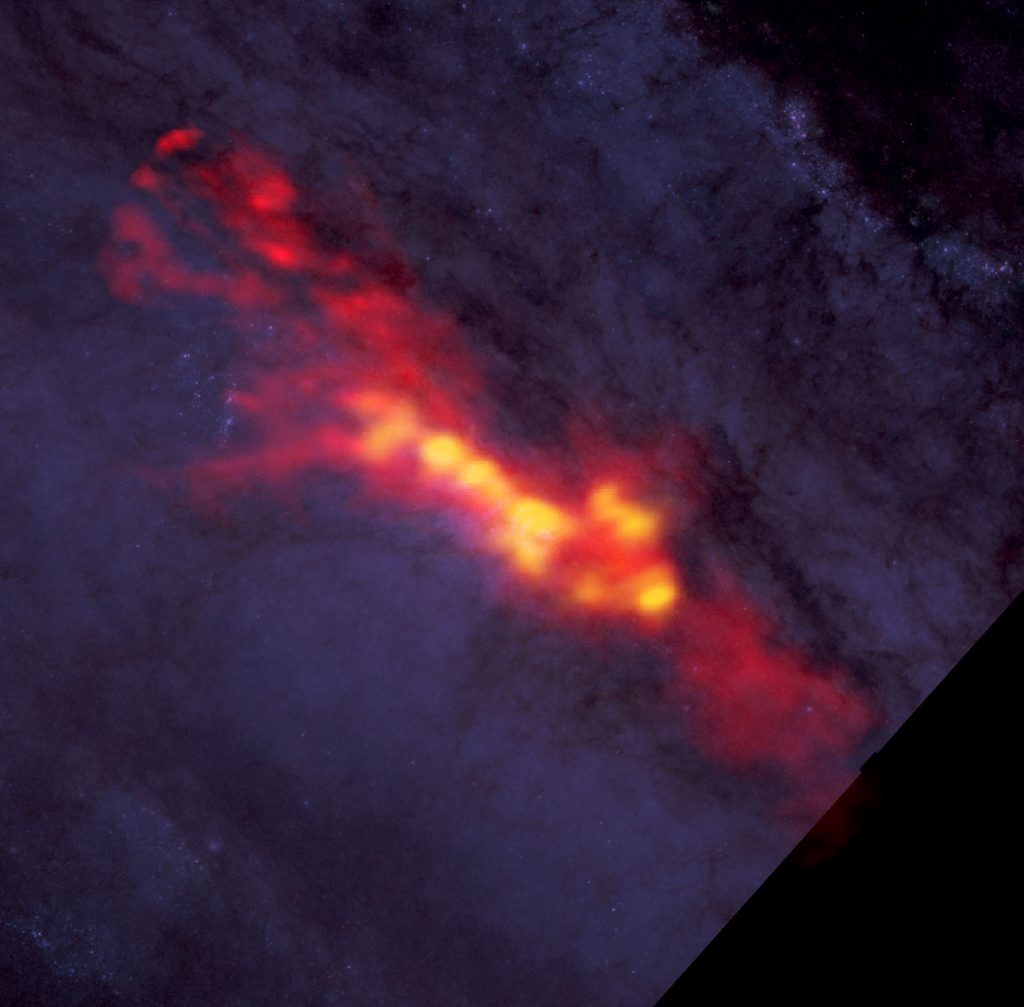
ALMA Sees Super Stellar Nurseries at Heart of Sculptor Galaxy
What is the recipe for starburst? Astronomers studied NGC 253 with ALMA to find out. These new ALMA data...
Read more
Construction of First VLBA Antenna
Construction of the first VLBA antenna in Pie Town, NM. 1986-10-15
Read more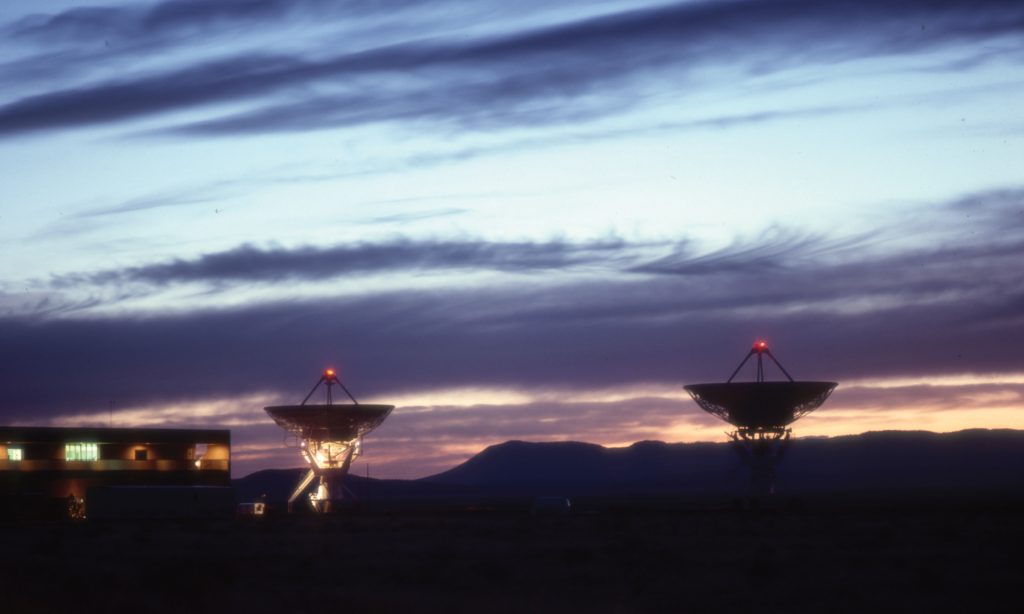
Aircraft Lights Atop the VLA
In the early days of the Very Large Array, each 25-meter antenna had an aircraft warning light set atop...
Read more
VLA Gives New Insight Into Galaxy Cluster’s Spectacular “Mini-Halo”
Astronomers using the National Science Foundation’s Karl G. Jansky Very Large Array (VLA) have discovered new details that are...
Read more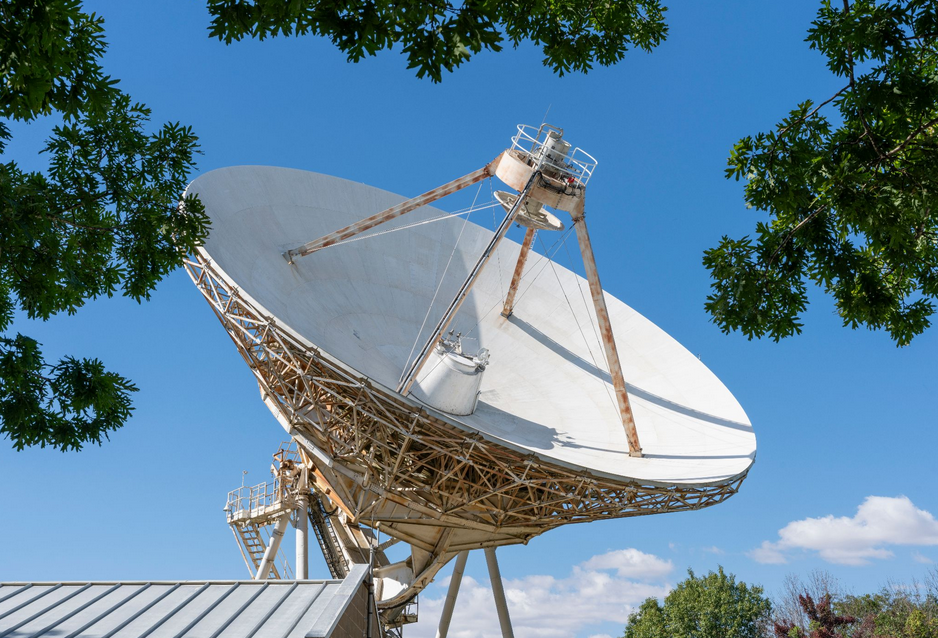
VLBA Antenna in North Liberty, Iowa
This antenna in North Liberty, Iowa is one of 10 radio telescopes that make up the National Science Foundation...
Read more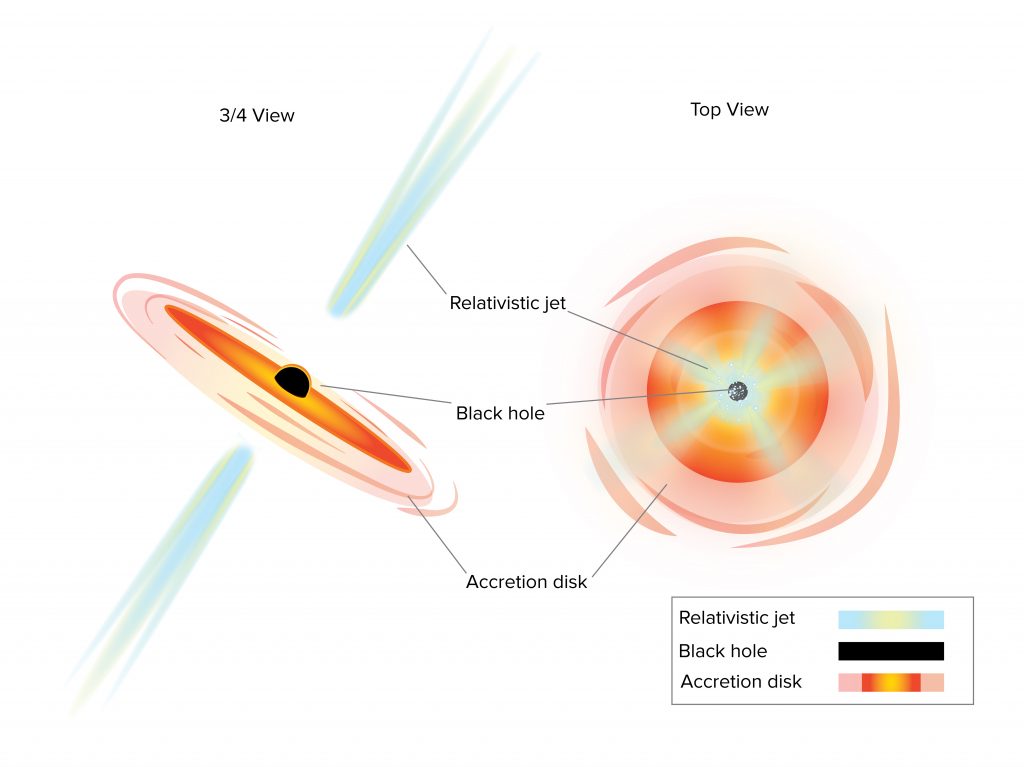
AGNs Seen at Different Angles
One type of active galactic nuclei (AGN) -- a supermassive black hole that is gobbling up gas and dust...
Read more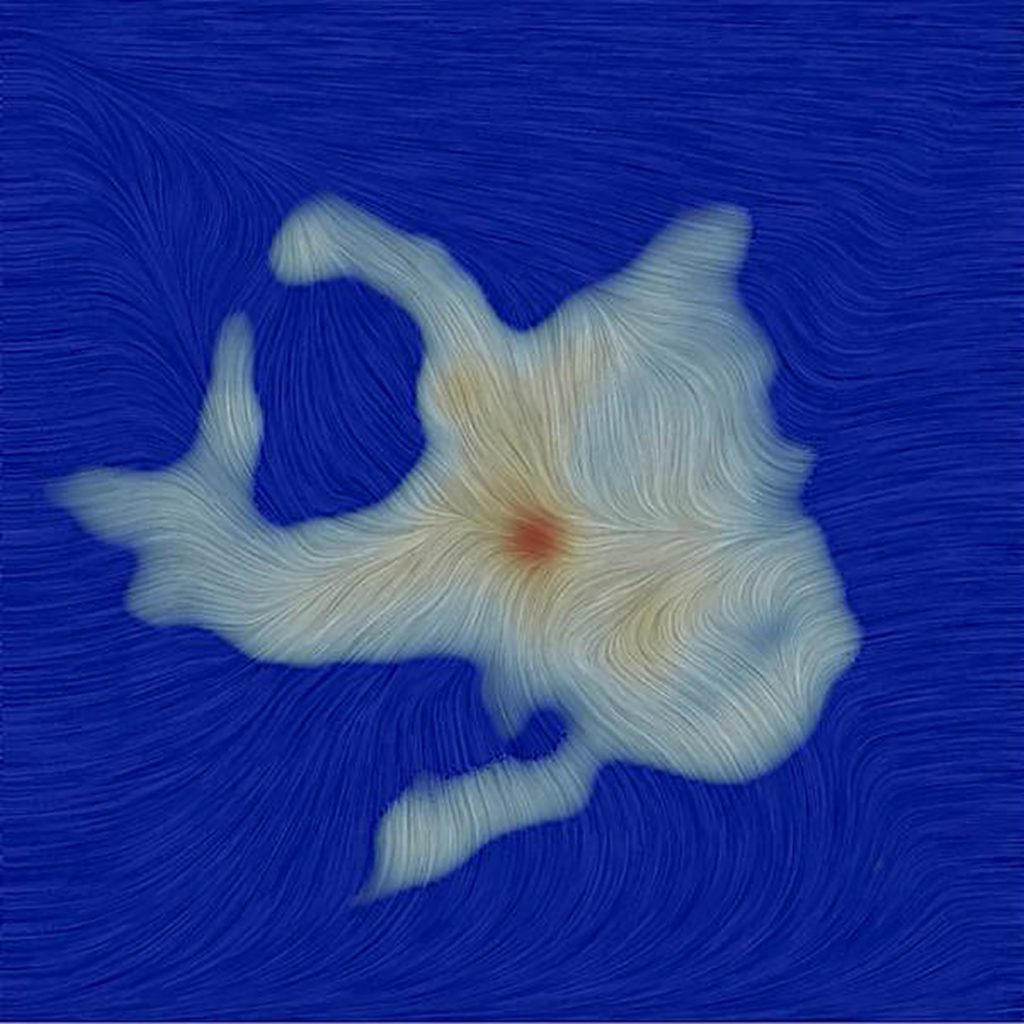
The Magnetic Field of Ser-emb 8
Texture represents the magnetic field orientation in the region surrounding the Ser-emb 8 protostar, as measured by ALMA. The...
Read more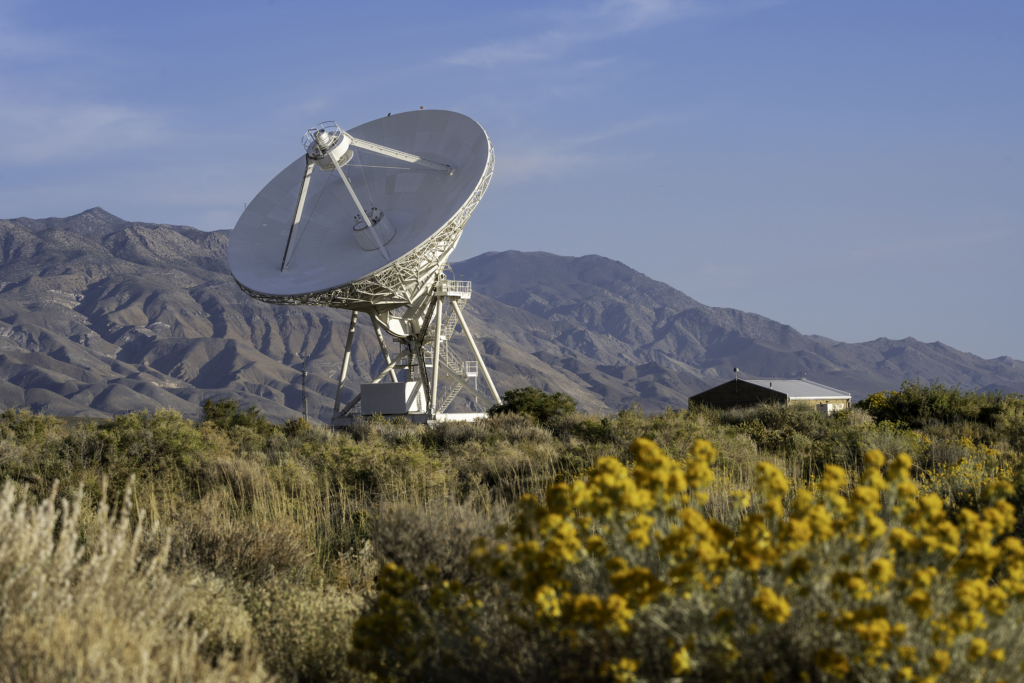
Owens Valley VLBA with Flowers
Desert flowers are abundant around the Owens Valley antenna. Credit: Jeff Hellerman
Read more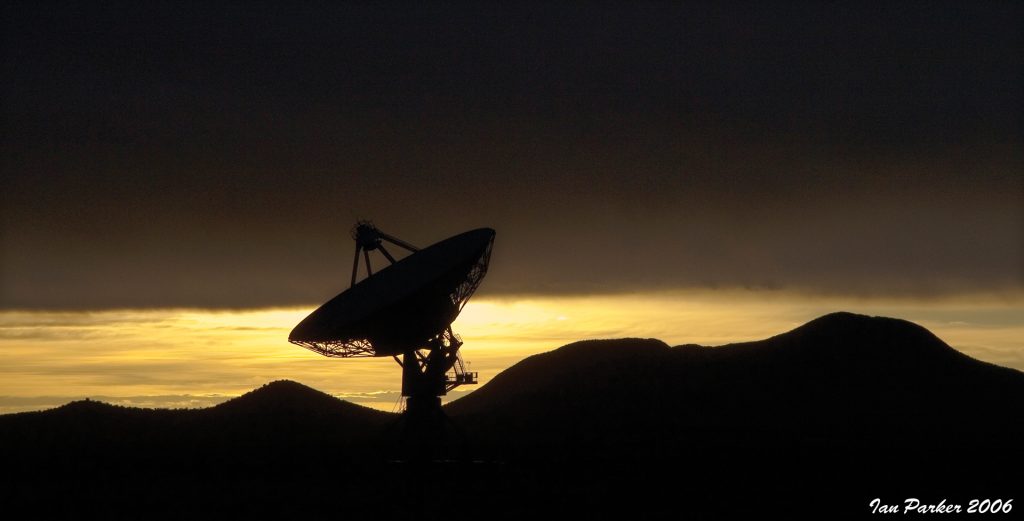
VLBA Pie Town at Sunset
The Sun sets behind the Pie Town, New Mexico telescope of the Very Long Baseline Array. This 25-meter dish...
Read more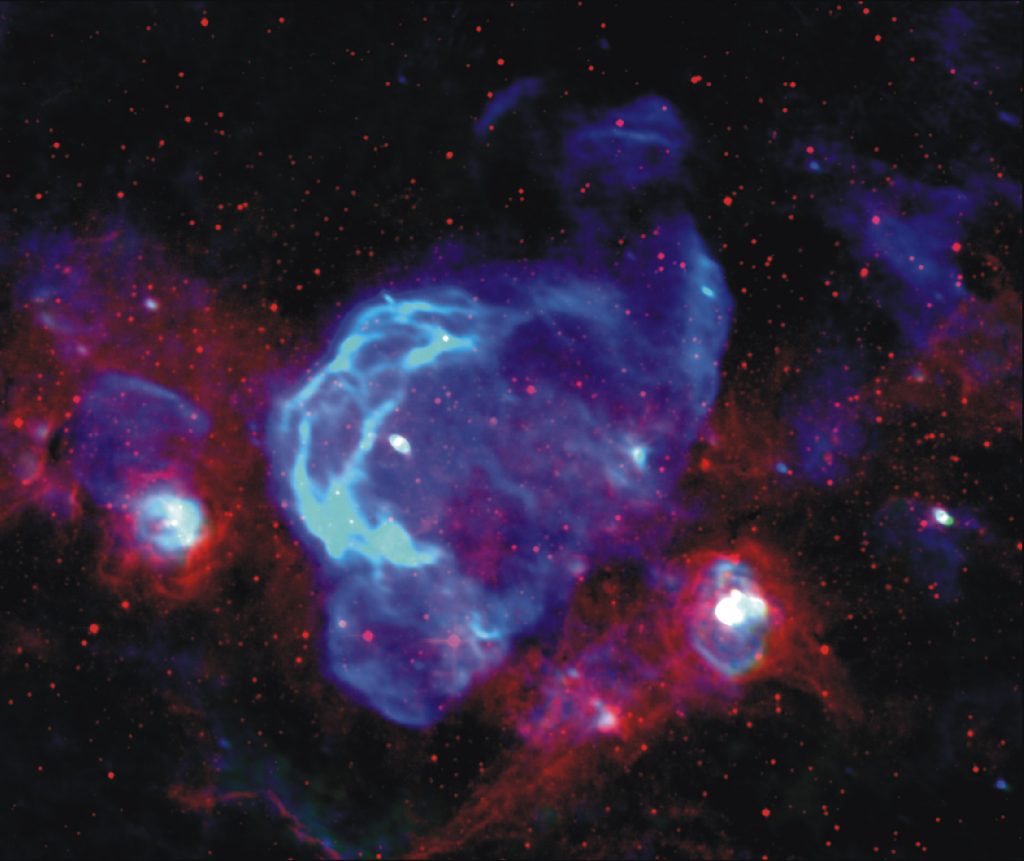
Shells of Exploded Stars
This is a 3-false color image of the region surrounding the W28 supernova remnant (SNR) that is located in...
Read more
New View of the Whirlpool
This is the most detailed radio image of the Whirlpool Galaxy ever captured. The Very Large Array observed this...
Read more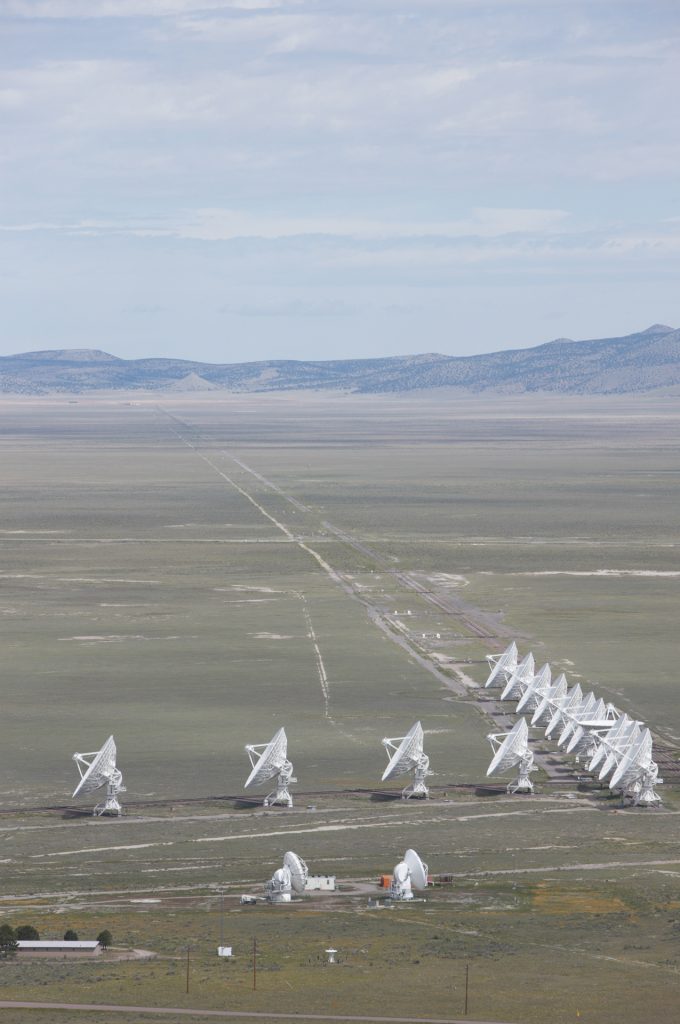
ALMA Test Facility and the VLA
When this aerial shot of the Very Large Array was taken, the ALMA Test Facility was still in place....
Read more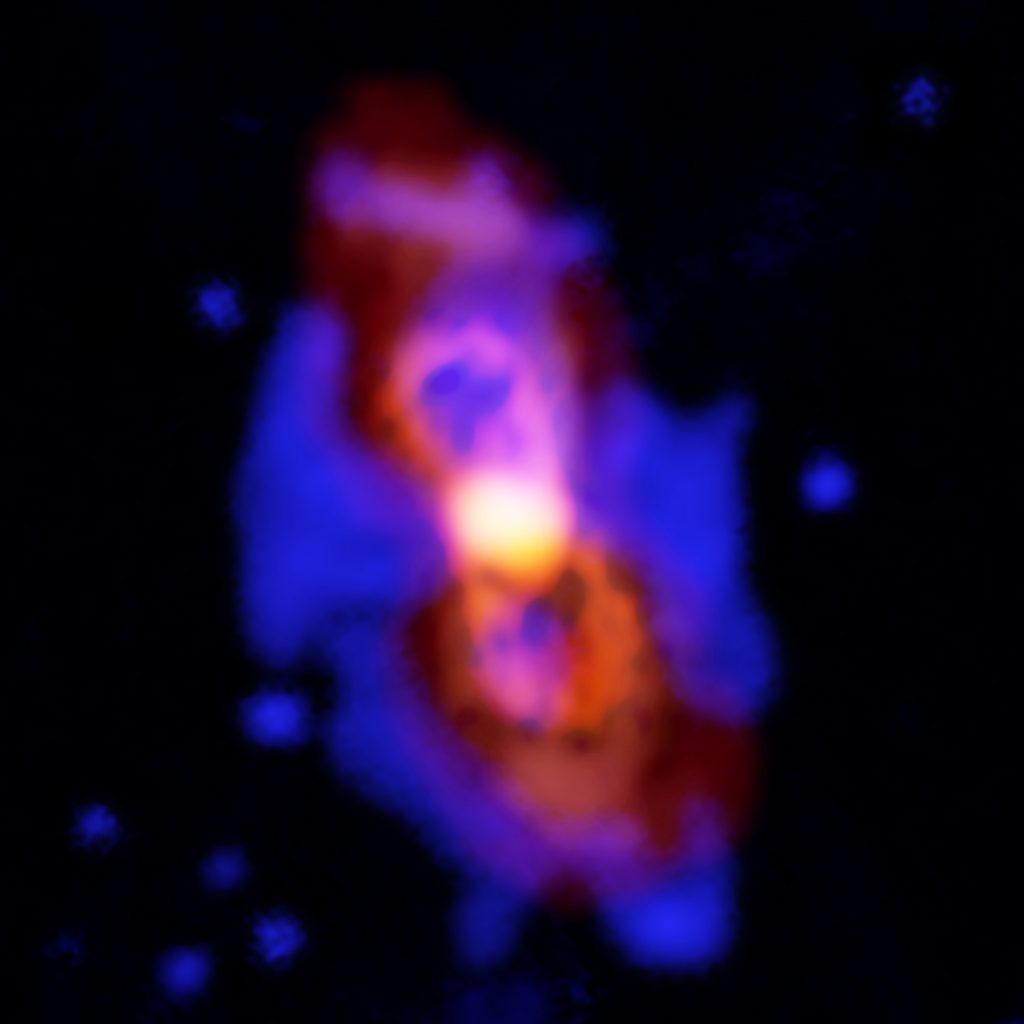
First Detection of Aluminium Nuclear Isotope in Space
Composite image of CK Vul, the remains of a double-star collision. This impact launched radioactive molecules into space, as...
Read more
A VLA Transporter stopped on the tracks
There are only two Antenna Transporters at the Very Large Array that are used to move antennas into new...
Read more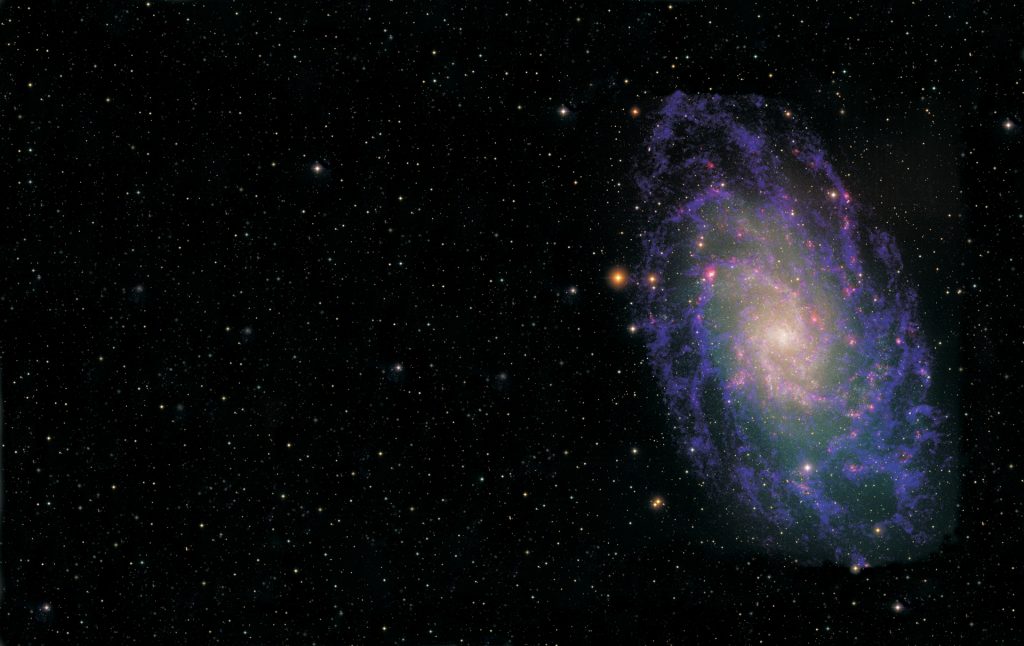
The Triangulum Galaxy in Radio and Optical
Galaxies contain hundreds of billions of stars. They often group together in clusters, with a history of sharing and...
Read more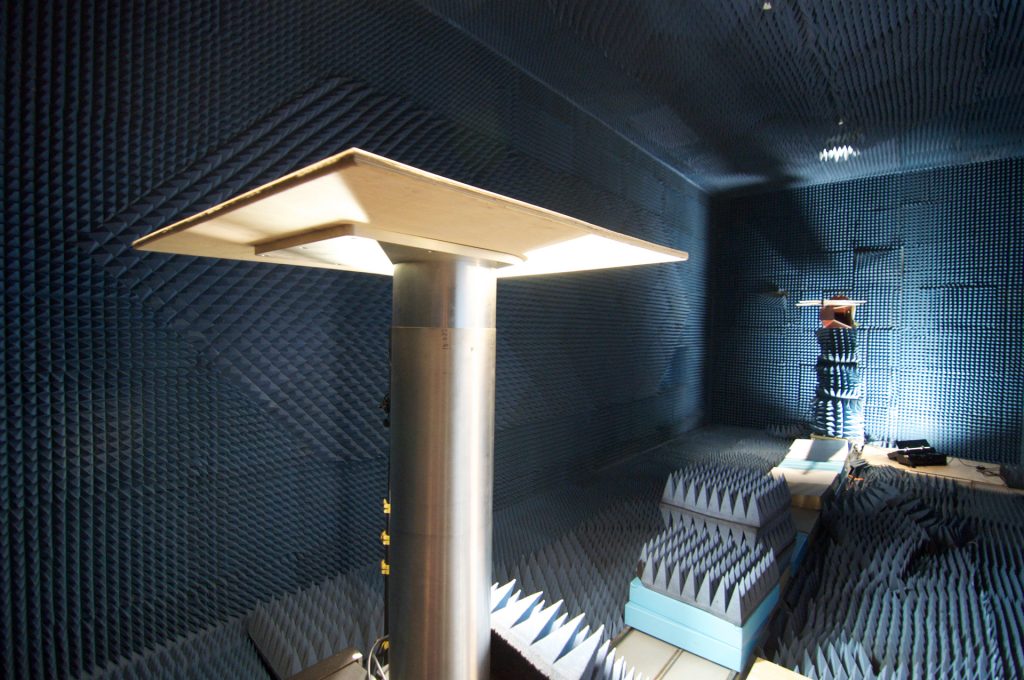
Anechoic Chamber
Manmade radio signals (from wireless devices, orbiting satellites, spark plugs, microwave ovens, etc.) swamp the weak waves we detect...
Read more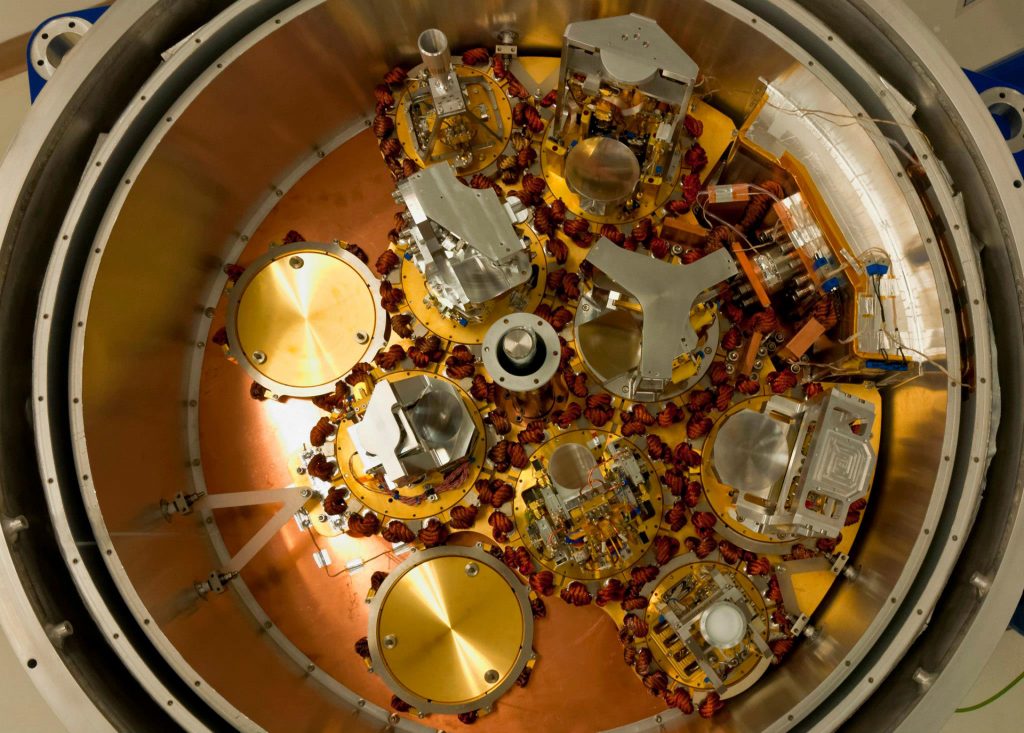
The Artistry of an ALMA Front End
Behind the dish of each ALMA antenna sits one of these Front Ends, the chilled coolers that hold the...
Read more
A Molecular Fountain In Abell 2597
Composite image of the Abell 2597 galaxy cluster showing the fountain-like flow of gas powered by the supermassive black...
Read more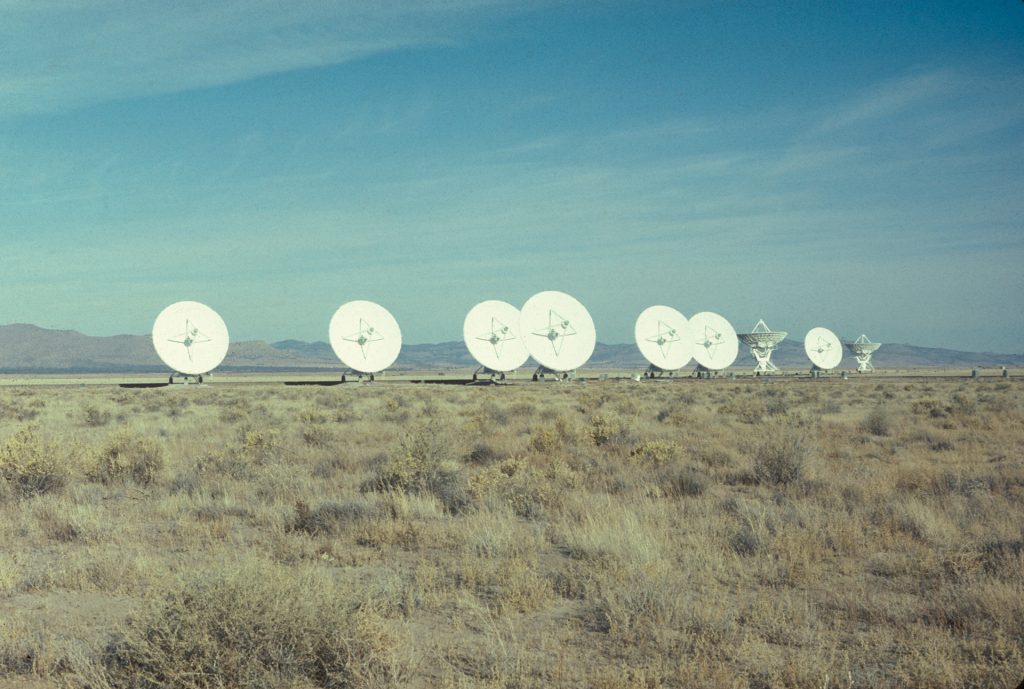
A Young VLA
The Very Large Array in December of 1979, one month after the final and 28th antenna had been delivered.
Read more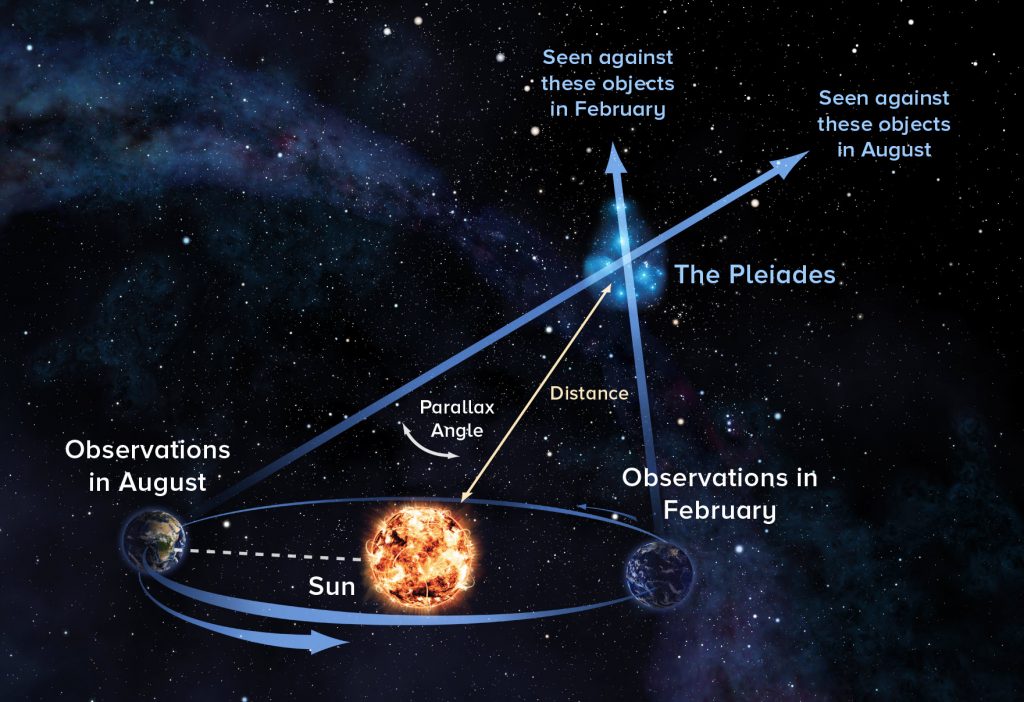
Measuring the Distance to the Pleiades
Using the parallax technique, astronomers observe object at opposite ends of Earth's orbit around the Sun to precisely measure...
Read more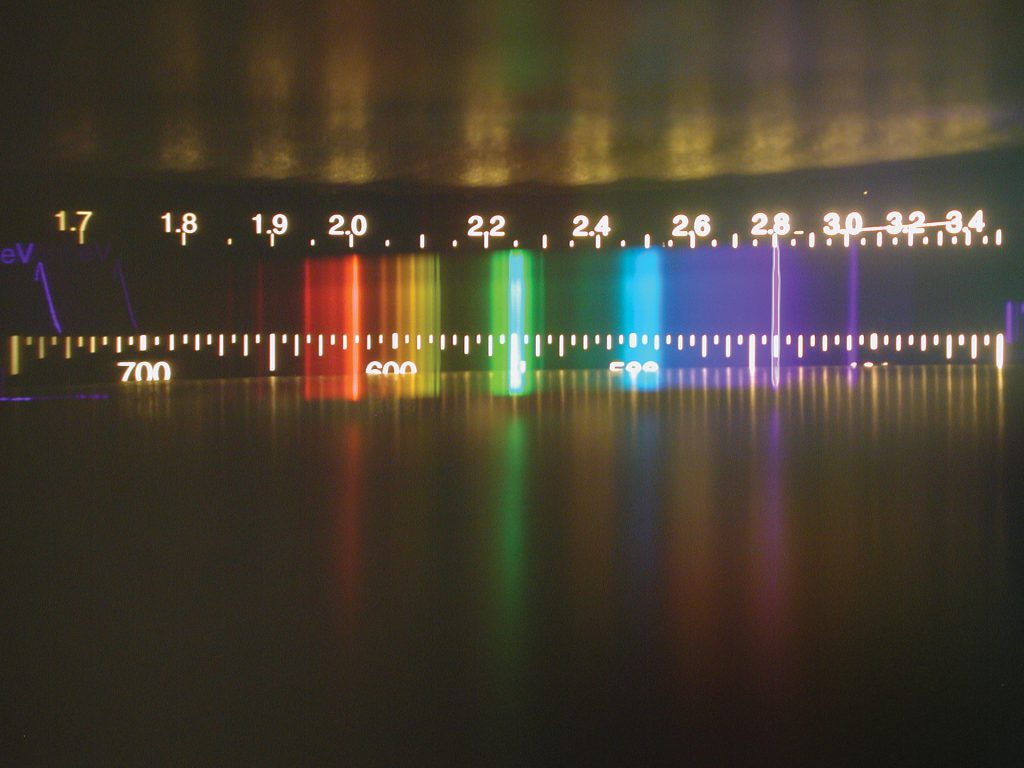
What are Emission Lines?
Inside a spectrometer, a beam of white light (typical incandescent light bulb, sunlight, etc.) is broken into its actual...
Read more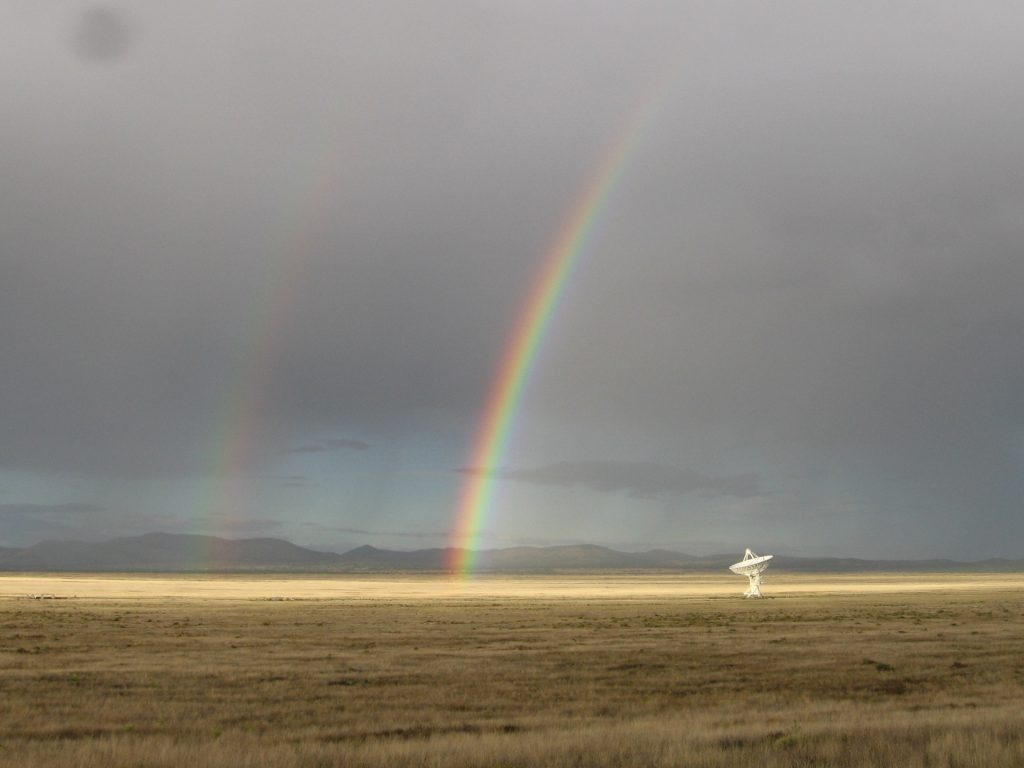
Double Rainbow over the VLA
The Very Large Array may sit in the New Mexico desert, but it's not always dry. Summer monsoons bring...
Read more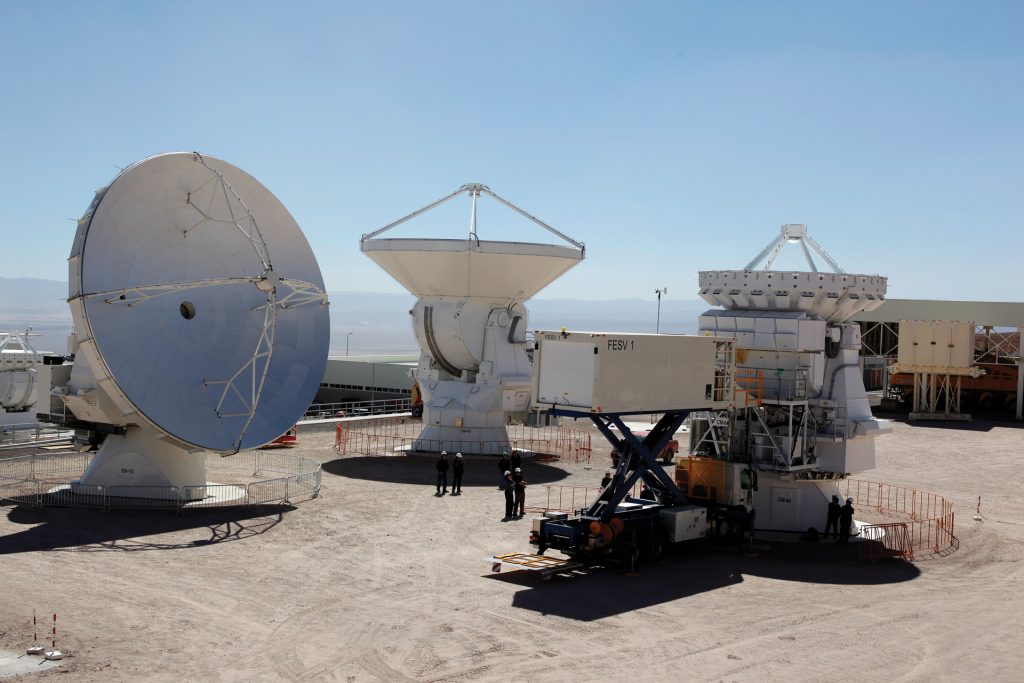
Maintenance Vehicle that caters to all antenna sizes
The Front End Service Vehicle raises 20 feet high to service a 7-meter Japanese ALMA telescope. The FESV is...
Read more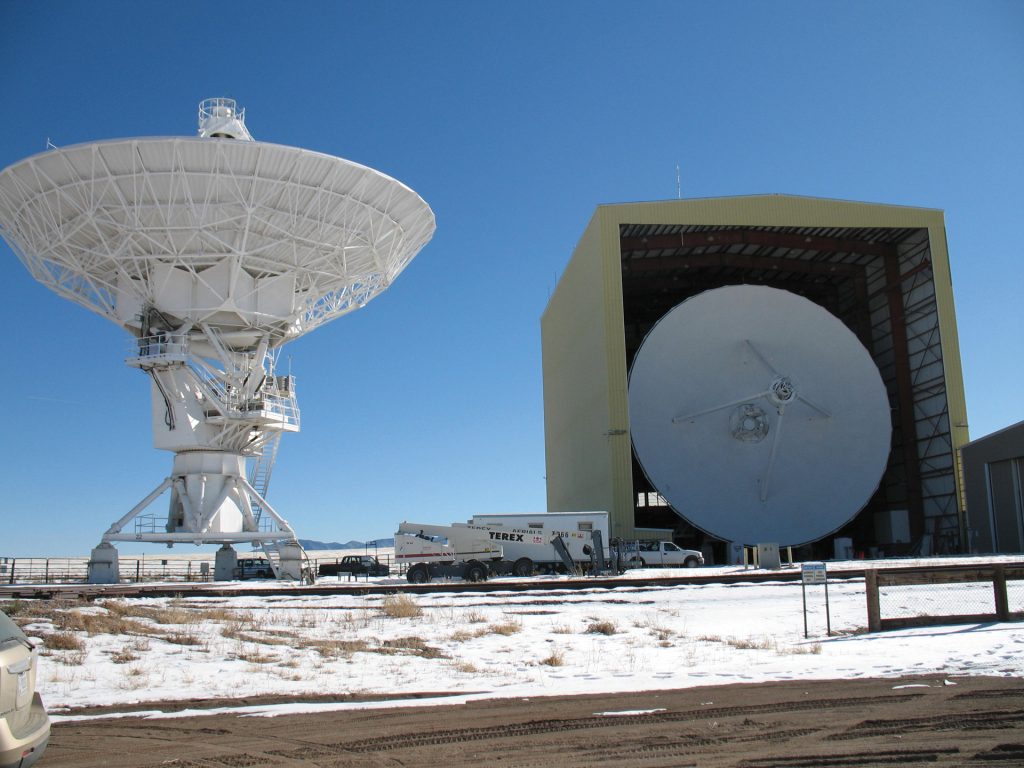
VLA Dish Dipped in the Barn
A rare view of a dipped 25-meter dish antenna of the Very Large Array undergoing maintenance inside the Antenna...
Read more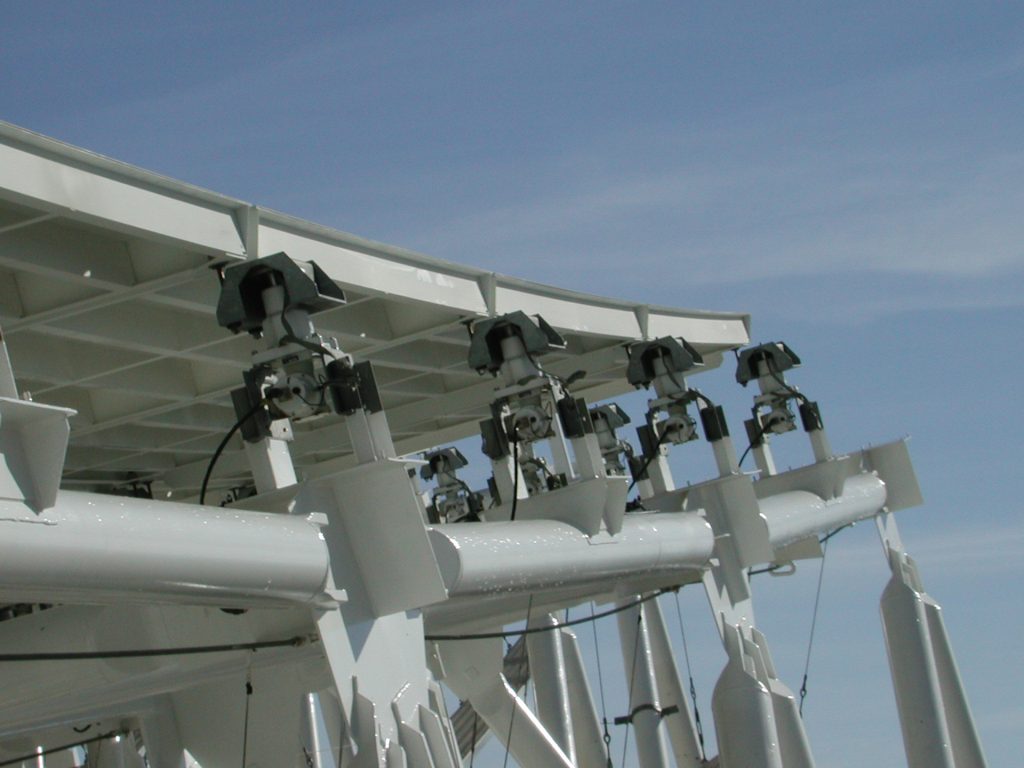
Busy Little Robots
Each of the Green Bank Telescope's 2004 surface panels is adjusted by a small, computer-controlled motor called an actuator,...
Read more
Ants on a Plate
From over 200 feet above them, painters look like ants on the 2.3 acre dish of the Green Bank...
Read more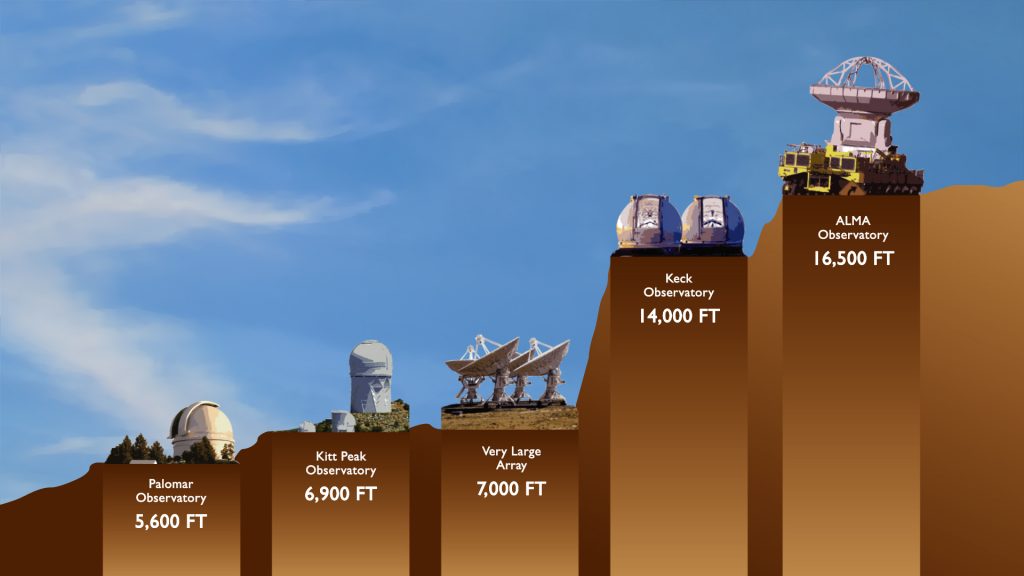
Telescope Comparison
Sited at 16,500 ft above sea level, ALMA is the highest array of telescopes in the world. This diagram...
Read more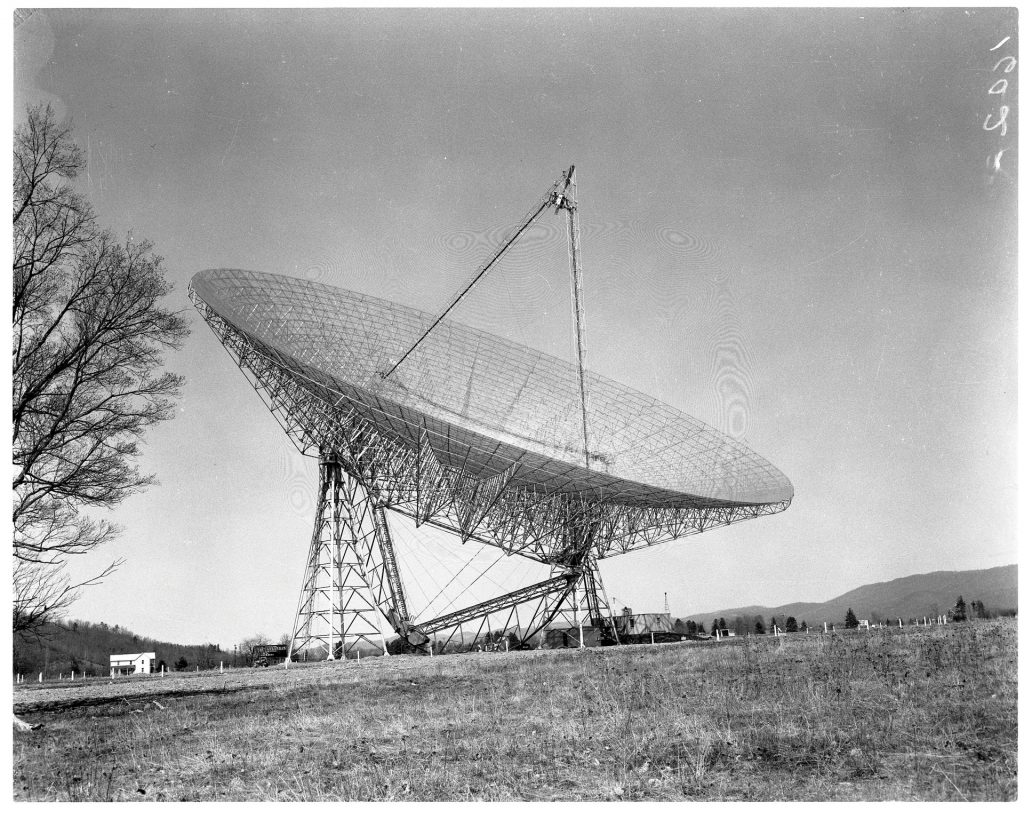
300-foot Masterpiece
The 300-foot telescope in Green Bank, West Virginia after its completion in September 1962.
Read more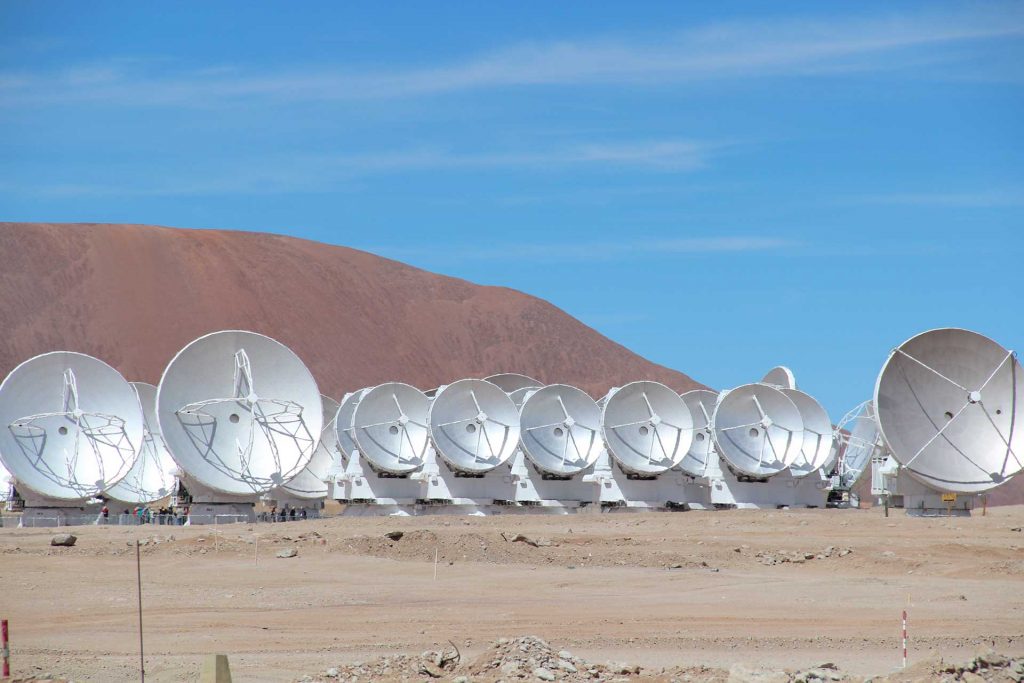
ALMA in its Compact Formation
ALMA's antennas can be rearranged to simulate a single, big telescope or a very widespread array. In this smaller...
Read more
VLA / Orion at Blue Hour
Photo taken by Bettymaya Foott as part of an astrophotography project with the National Radio Astronomy Observatory and the...
Read more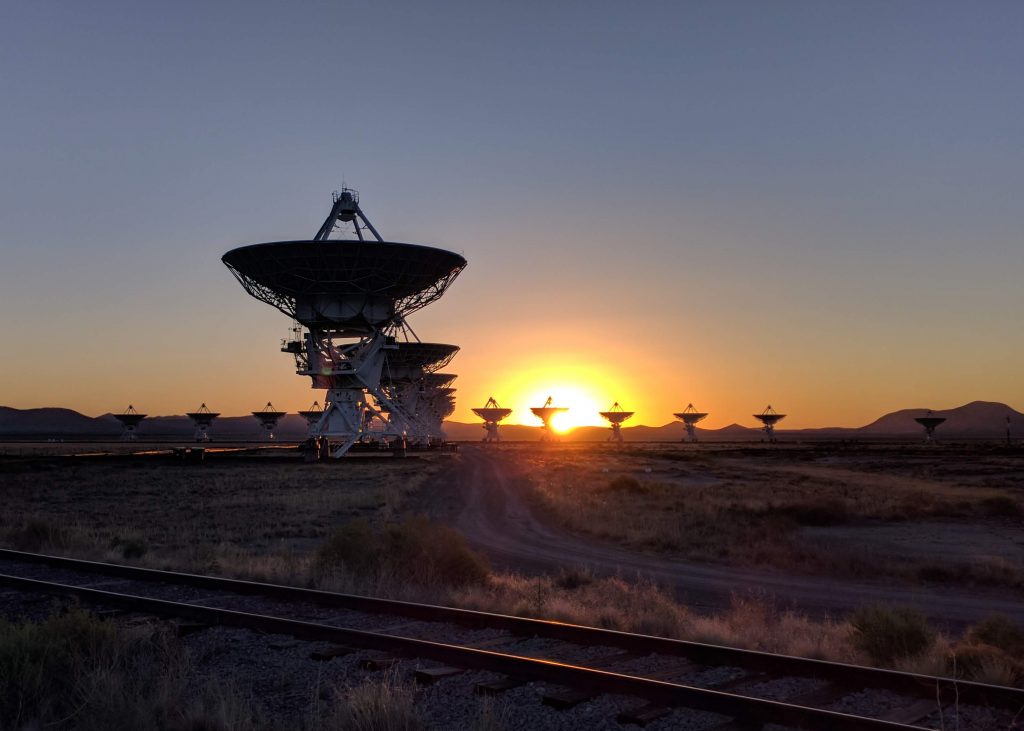
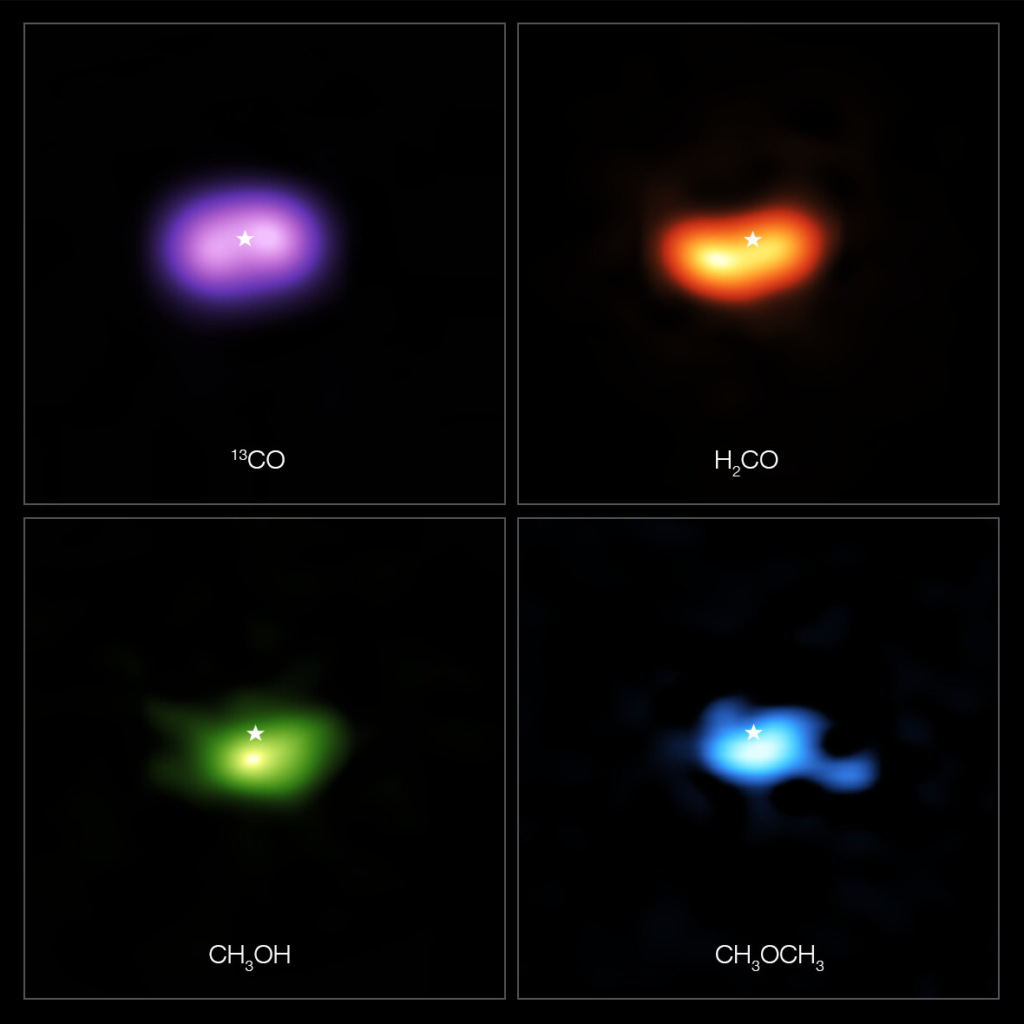
Molecules in the disc around the star IRS 48
These images from the Atacama Large Millimeter/submillimeter Array (ALMA) show where various gas molecules were found in the disc...
Read more
Virgo’s NGC 4567 and NGC 4568
NGC 4567 and NGC 4568 are two of the thousands of galaxies in the Virgo Cluster, located roughly 65...
Read more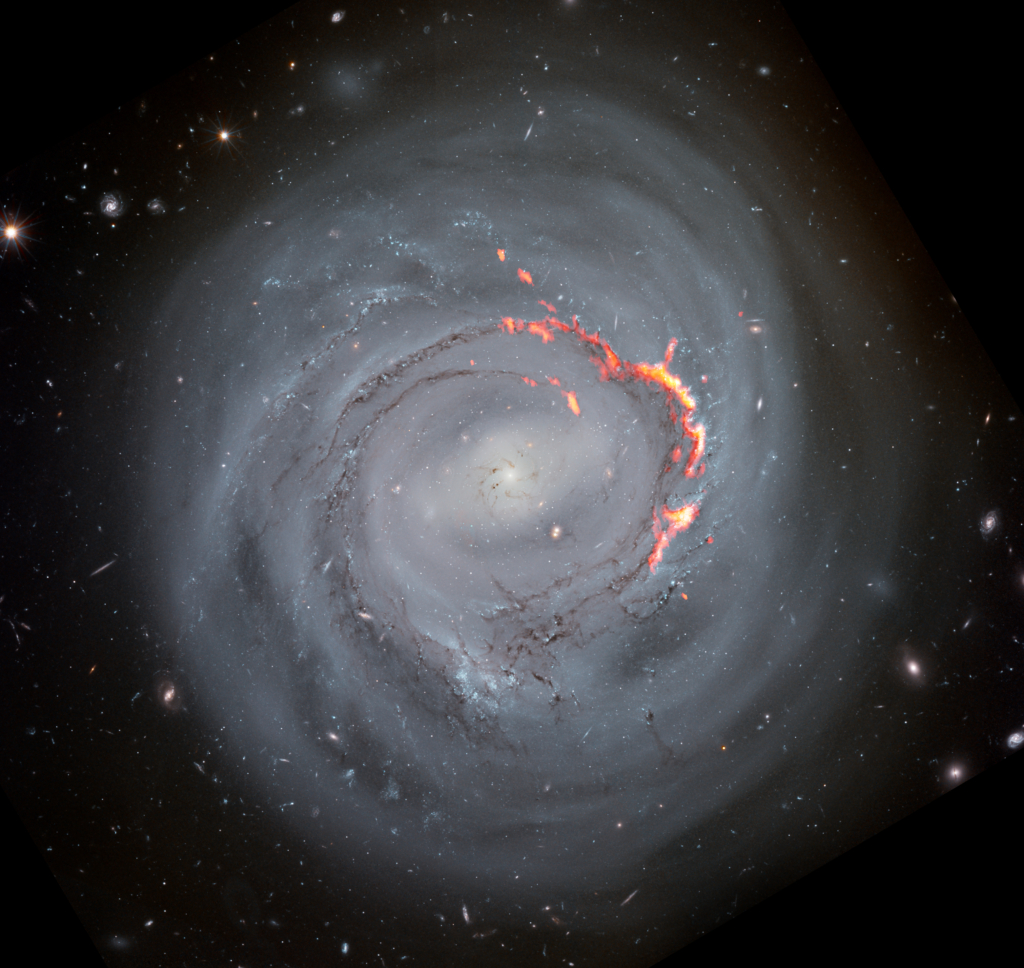
Ram Pressure Stripped Galaxy NGC4921
Shown here in composite view, ALMA data (red/orange) reveals filament structures left behind by ram pressure stripping in a...
Read more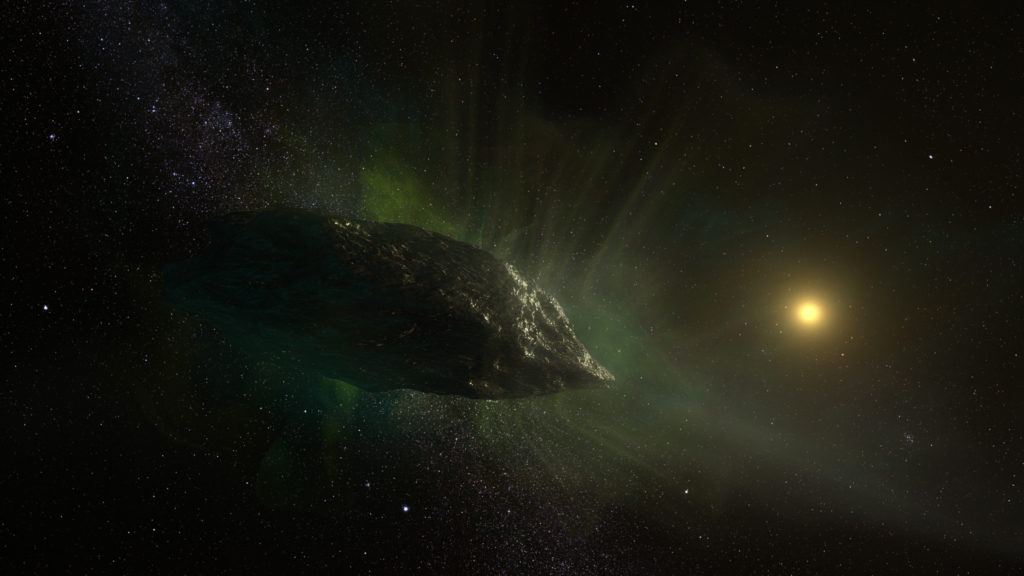
Interstellar Comet 2I/Borisov
Artist impression of the interstellar comet 2I/Borisov as it travels through our solar system. This mysterious visitor from the...
Read more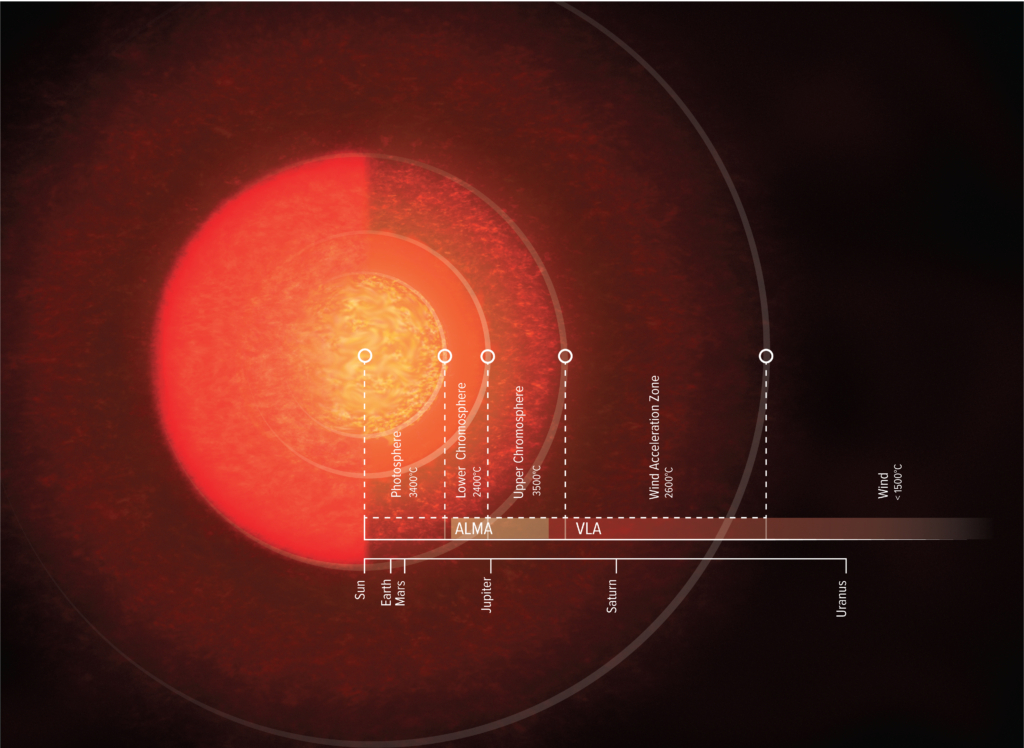
Artist illustration of Antares’ Atmosphere
Artist impression of the atmosphere of Antares. As seen with the naked eye (up until the photosphere), Antares is...
Read more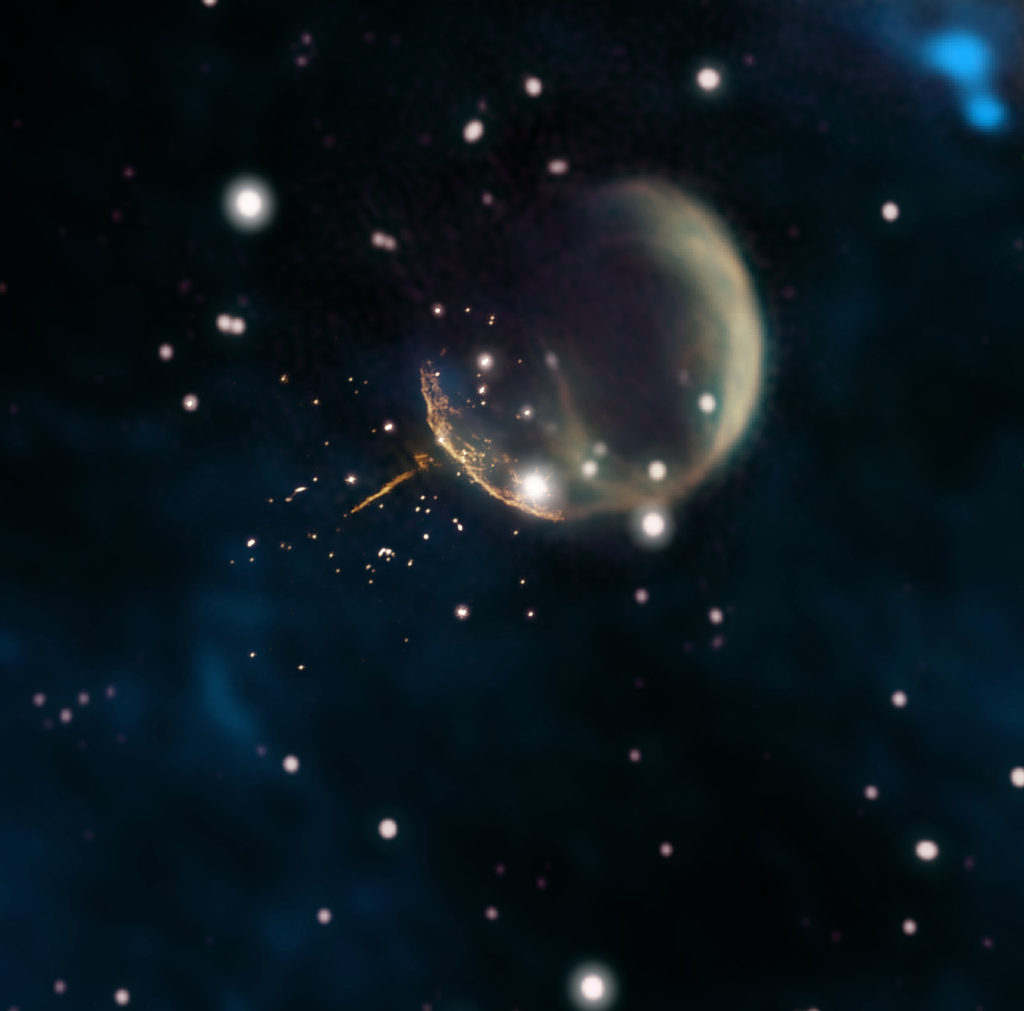
Cannonball Pulsar
Observations using the Very Large Array (orange) reveal the needle-like trail of pulsar J0002+6216 outside the shell of its...
Read more
ALMA’s Highest-Frequency Capabilities
A team of scientists using the highest-frequency capabilities of the Atacama Large Millimeter/submillimeter Array (ALMA) has uncovered jets of...
Read more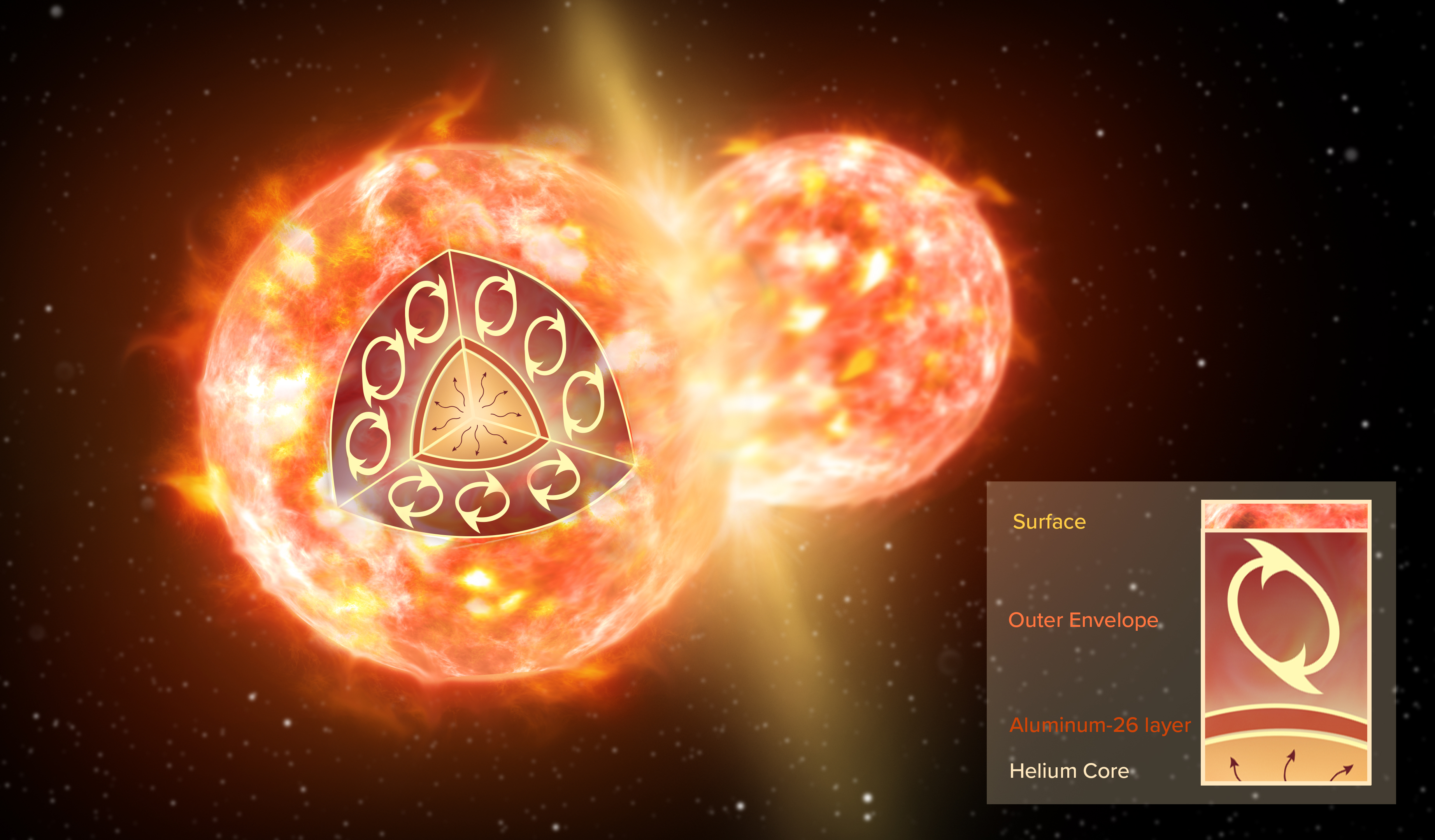
Artist Impression of CK Vul
Artist impression of the collision of two stars, like the ones that formed CK Vul. The inset illustrates the...
Read more
Aging Star Blows Off Smoky Bubble
This ALMA image reveals much finer structure in the U Antliae shell than has previously been possible. Around 2700...
Read more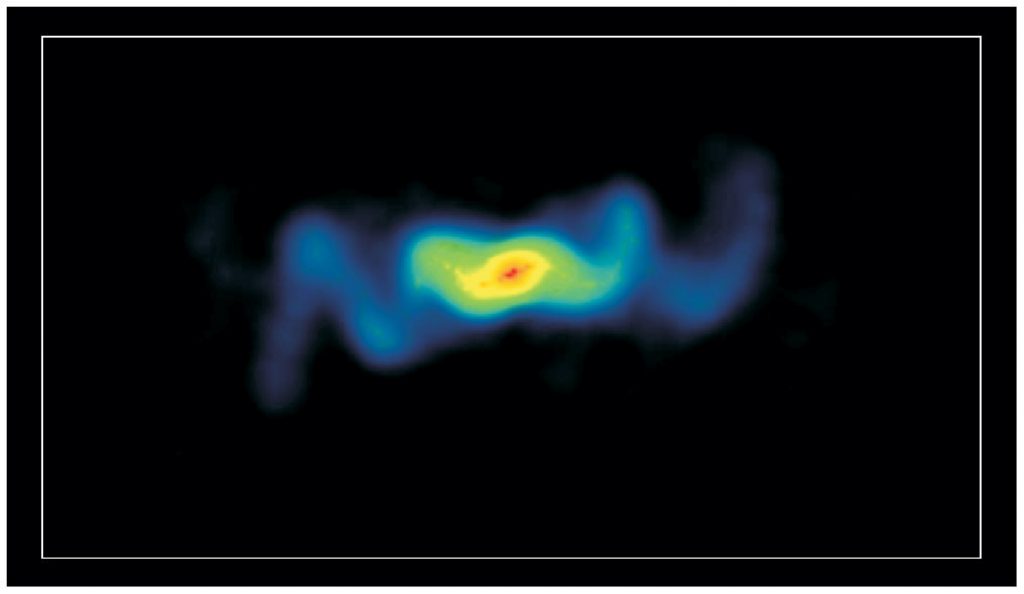
A Wobbling Jet
Inside the famous Manatee Nebula (W50) lies the black hole remnant of the supernova that formed it, called SS...
Read more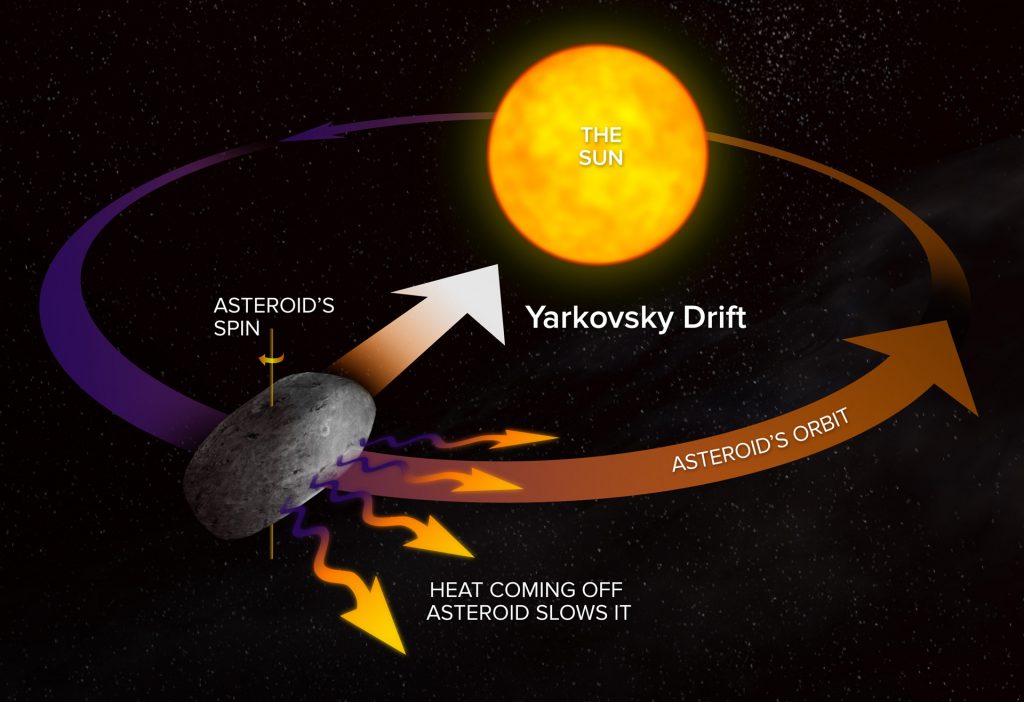
Yarkovsky Effect
Just as the afternoon is the warmest part of the day on Earth, the space rock develops a warm...
Read more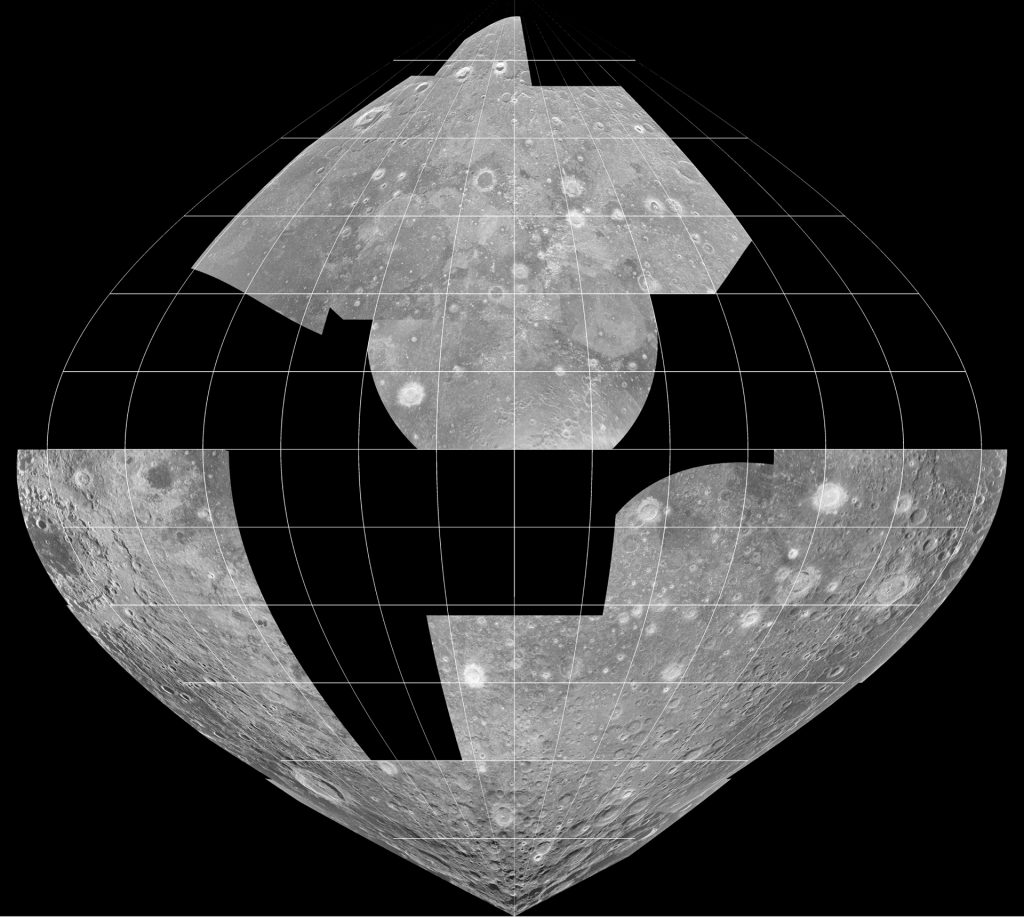
Craters in Radar
Partial mosaic of 70 cm radar images of nearside of the moon taken by the Green Bank Telescope (GBT)...
Read more
The Parallax Technique
The parallax technique determines distance by measuring the angle of apparent shift in an object's position, as seen from...
Read more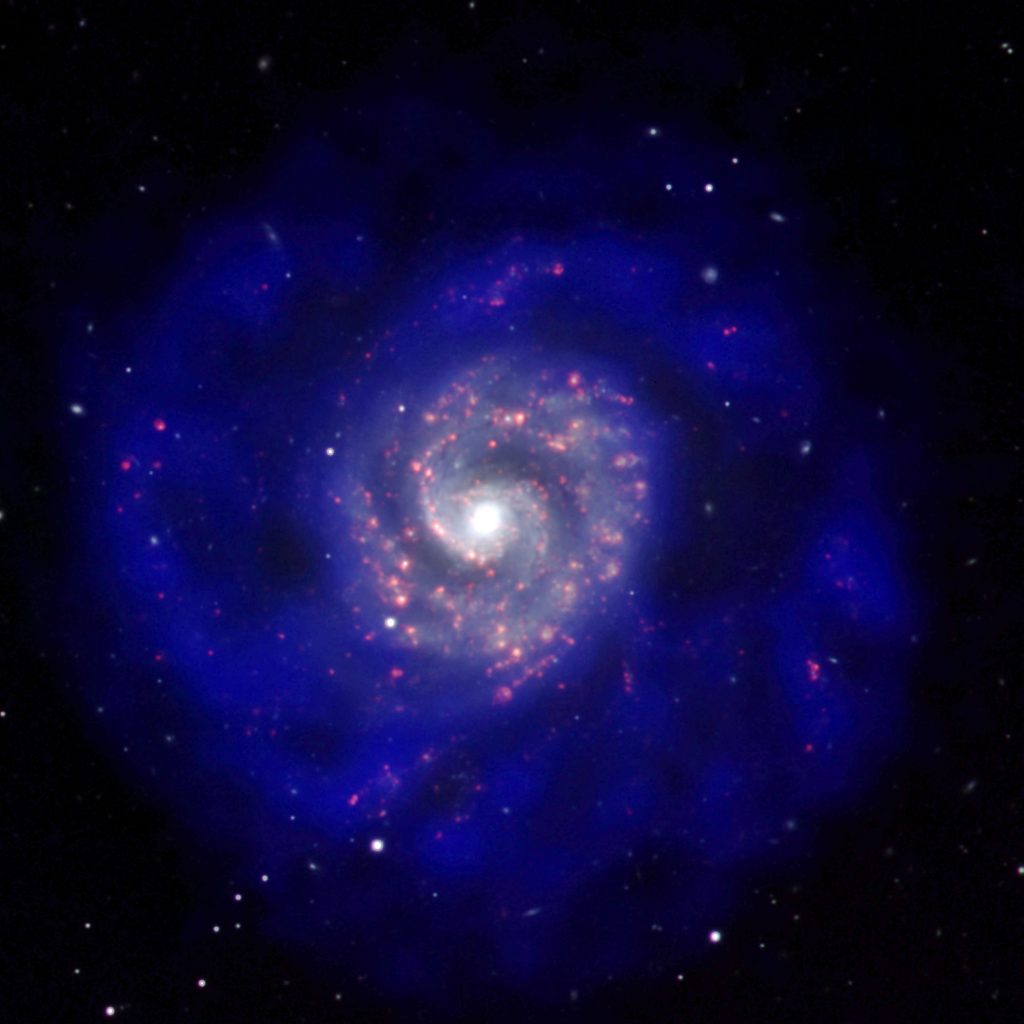
Old, New, and Future Stars in NGC 3596
This gorgeous face-on spiral galaxy is called NGC 3596. This image combines Hydrogen-alpha emission (red), visible light in the...
Read more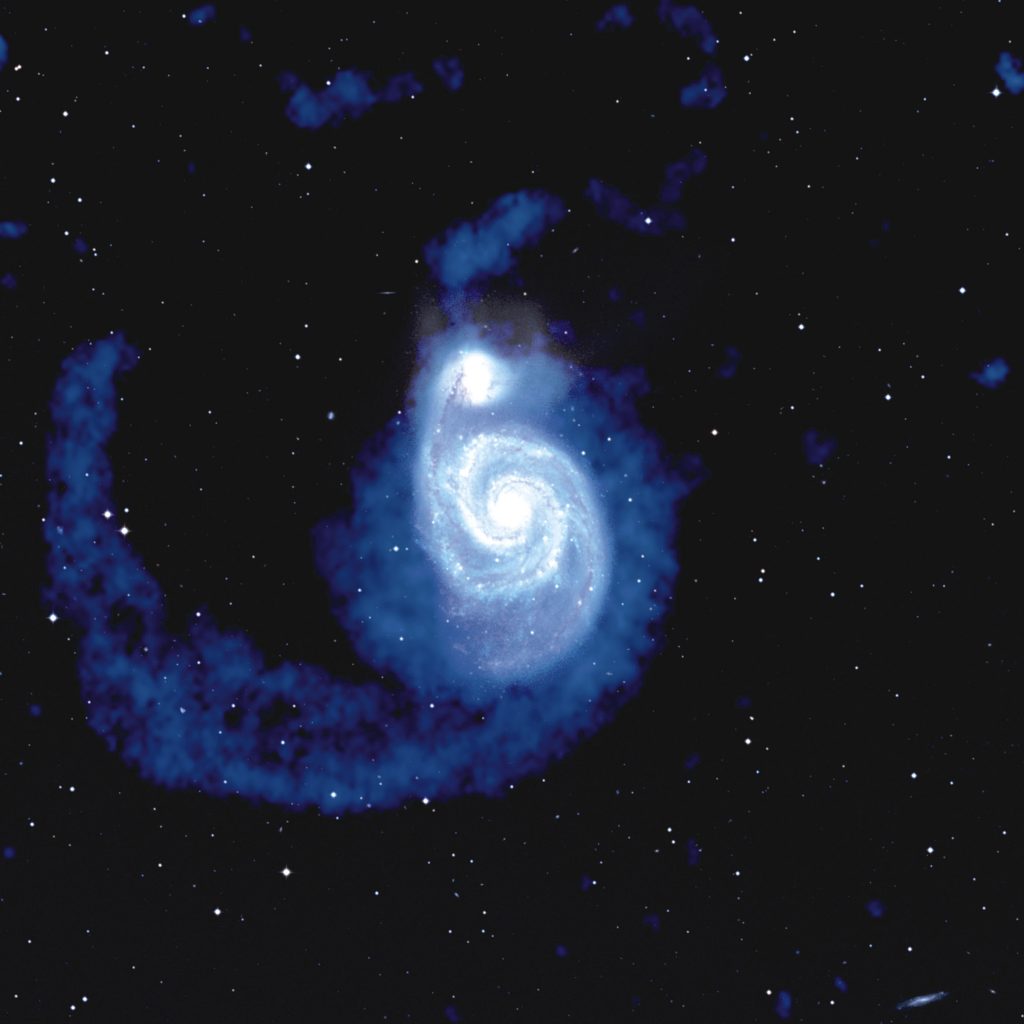
The Collision of M51
In this composite image of the Whirlpool Galaxy, the Very Large Array has captured the vastness of this colliding...
Read more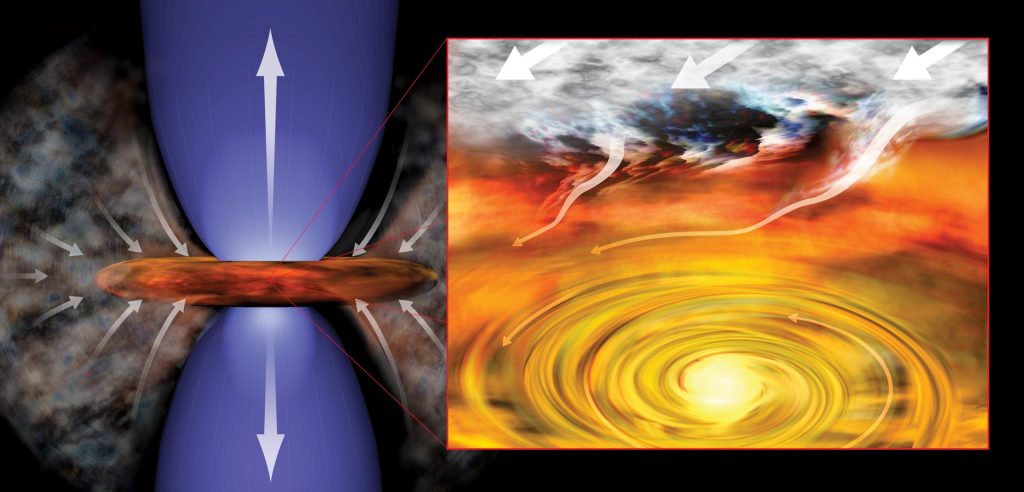
Outflows from a Young Solar System
Astronomers have found the youngest still-forming solar system yet seen, an infant star surrounded by a swirling disk of...
Read more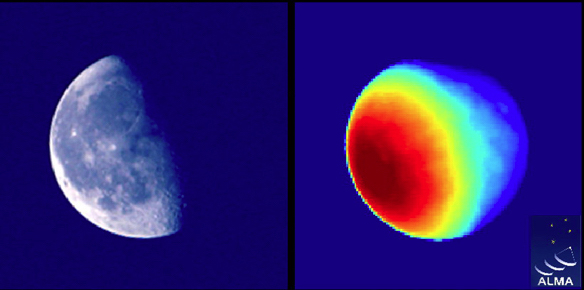
Moon as seen by ALMA
First radio image of the Moon taken with a 12-meter ALMA antenna. The optical image at left shows the...
Read more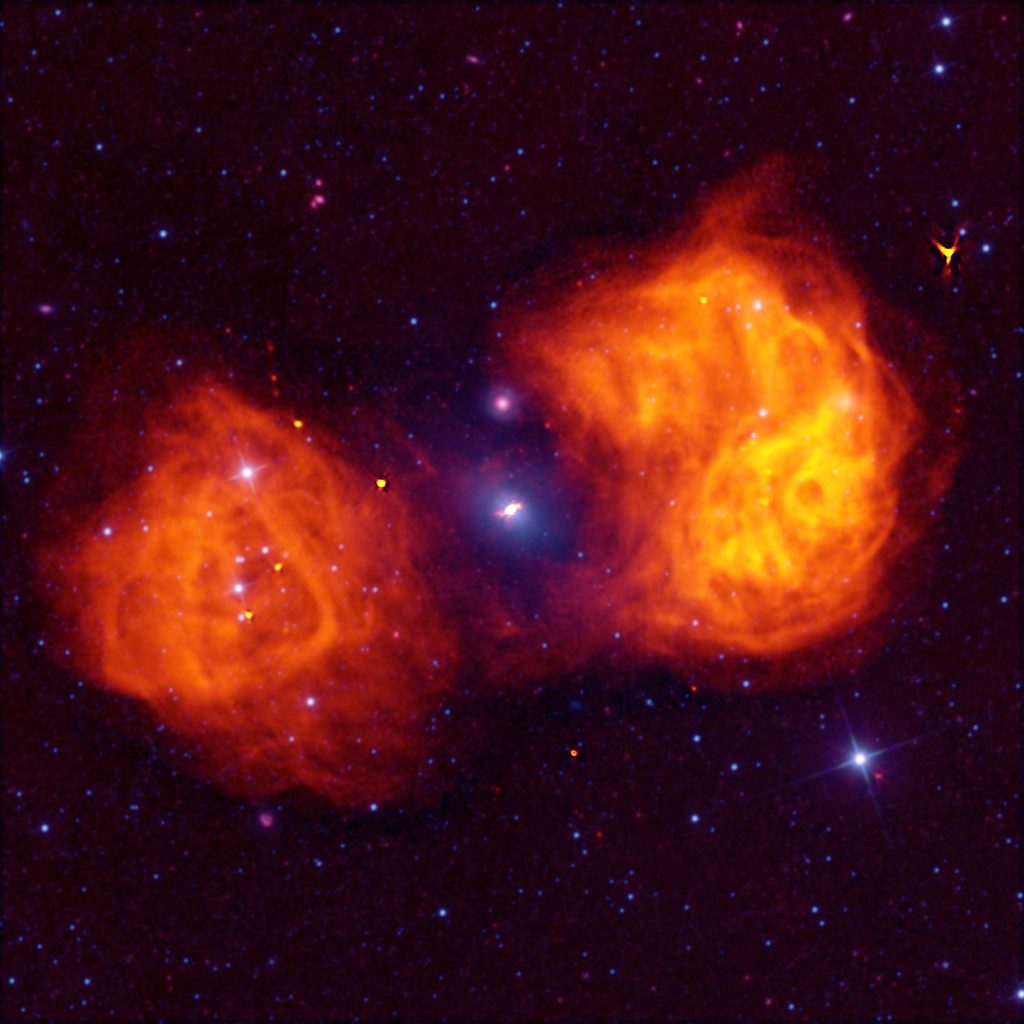
Flaming Fornax Galaxy
Radio waves are invisible to our eyes, therefore, they do not arrive in any "color" that we've ever known....
Read more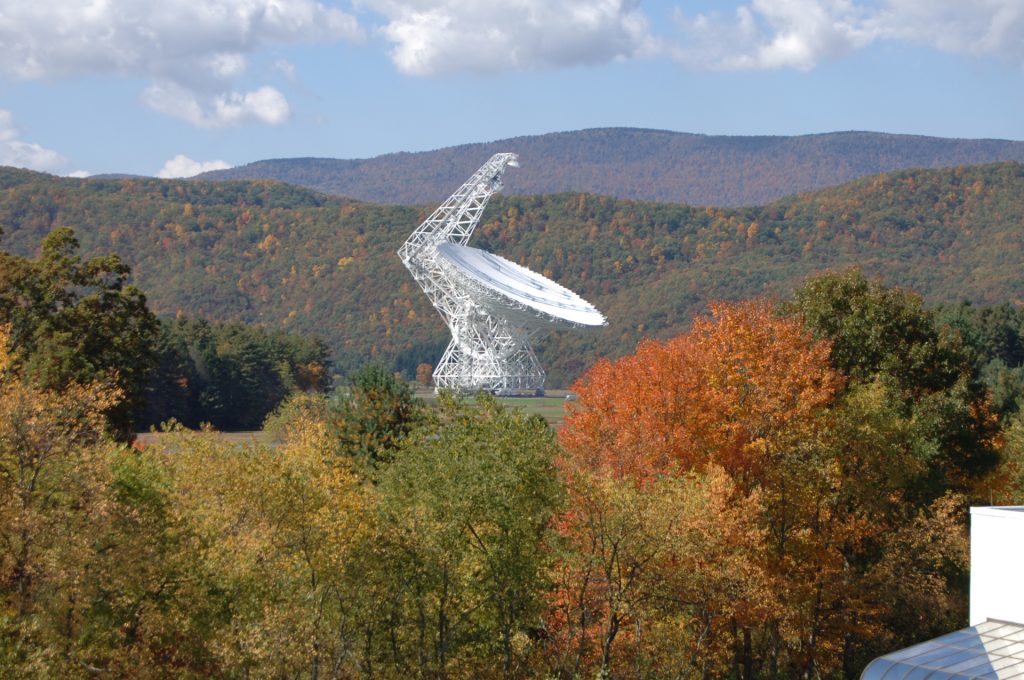
In a Frame of Color
The Green Bank Telescope (GBT) is always picture-perfect when autumn comes to its gorgeous West Virginia home.
Read more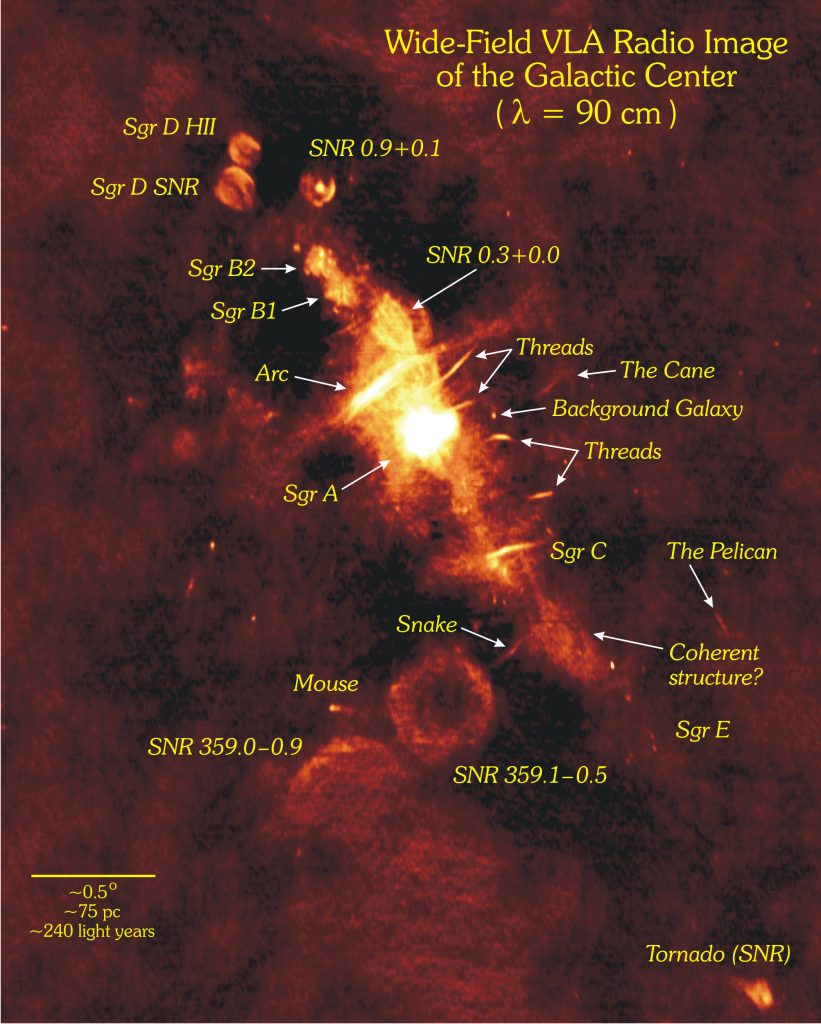
Labeled Map of Our Galaxy’s Center
The diagonal line of bright objects in this image of the heart of our Milky Way Galaxy are all...
Read more
Hercules A
The Very Large Array sees fountains of hot gas erupting from a beastly black hole in the heart of...
Read more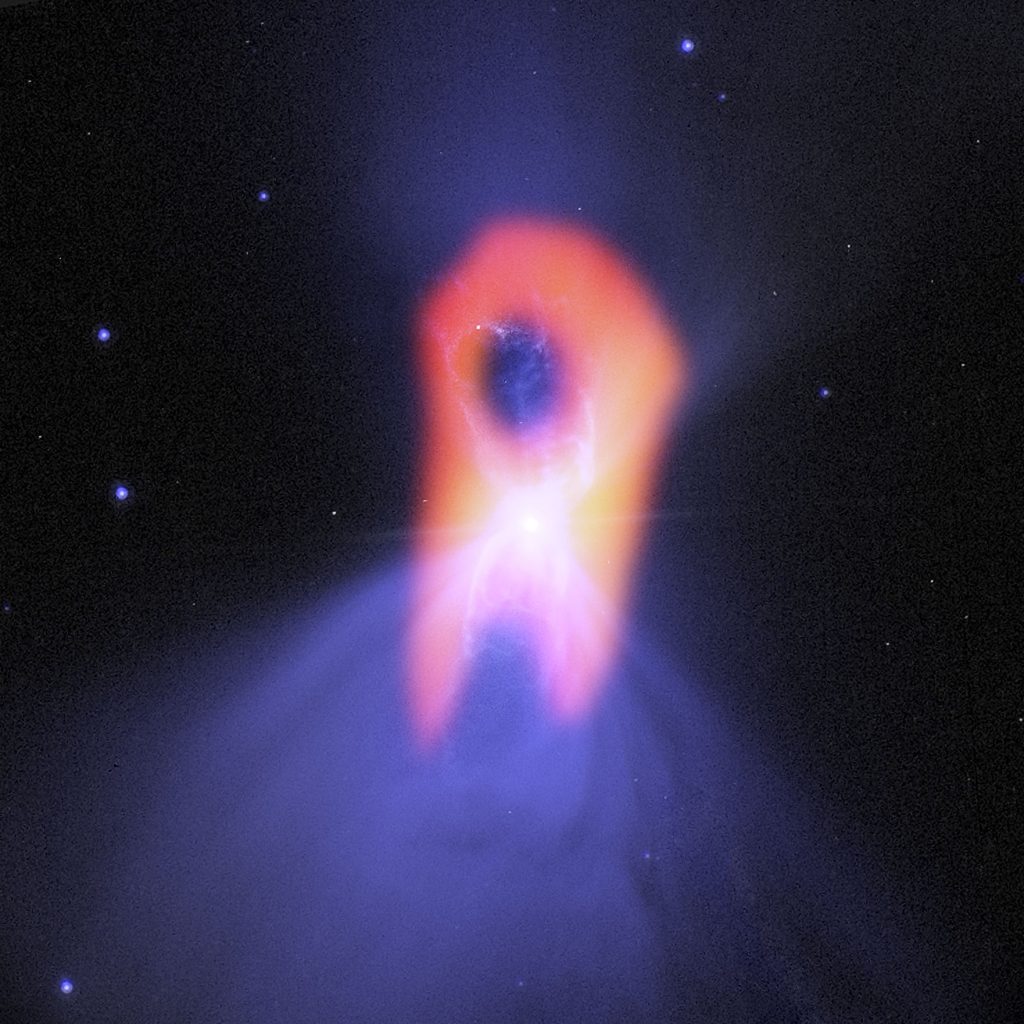
Boomerang Nebula
The Boomerang Nebula reveals its true shape with ALMA. The background purple structure, as seen in visible light (HST),...
Read more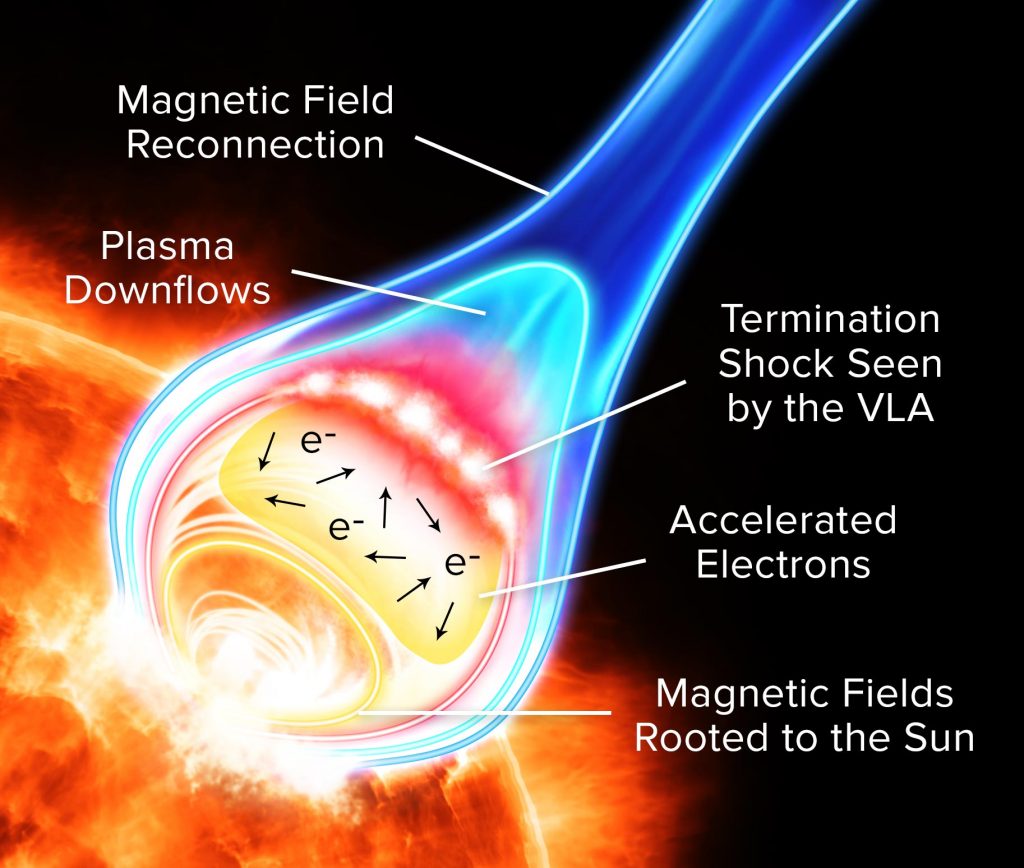
VLA Yields New Insights on Solar Flares
Artist's conception of particle acceleration in a solar flare.
Read more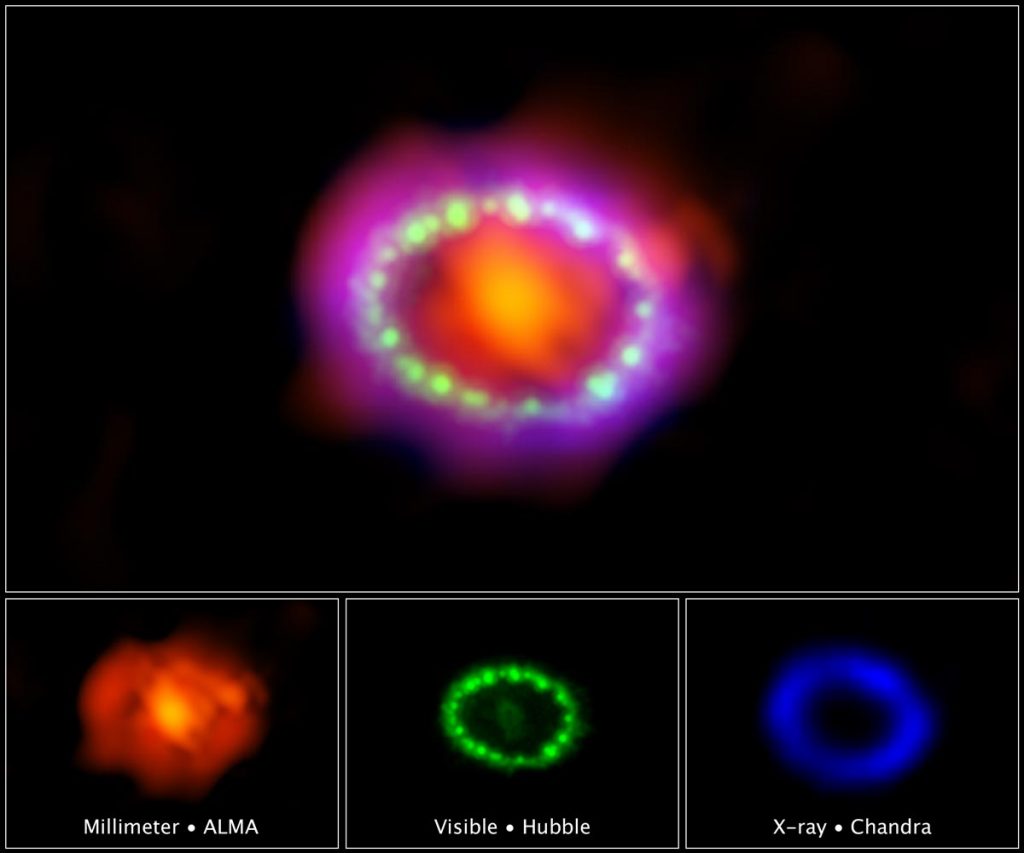
The Dawn of a New Era for Supernova 1987A
Astronomers combined observations from three different observatories to produce this colorful, multiwavelength image of the intricate remains of Supernova...
Read more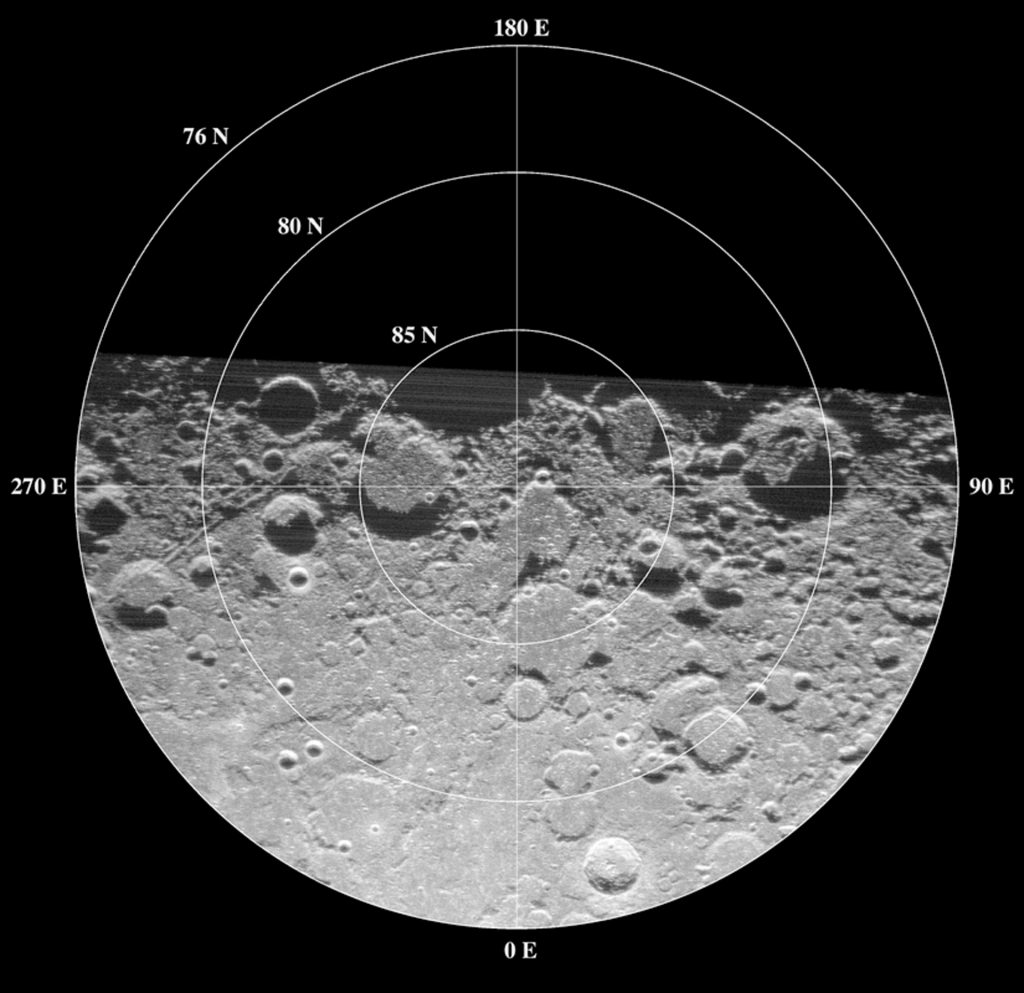
North Pole of the Moon
Radar maps can look like optical images, but they represent the amount of energy reflected back toward the transmitter...
Read more
WMAP Amplifiers
Centimeter-wave radio astronomy receivers (under 50 GHz) now almost universally use cooled HFET (heterostructure field-effect transistor) amplifiers as the...
Read more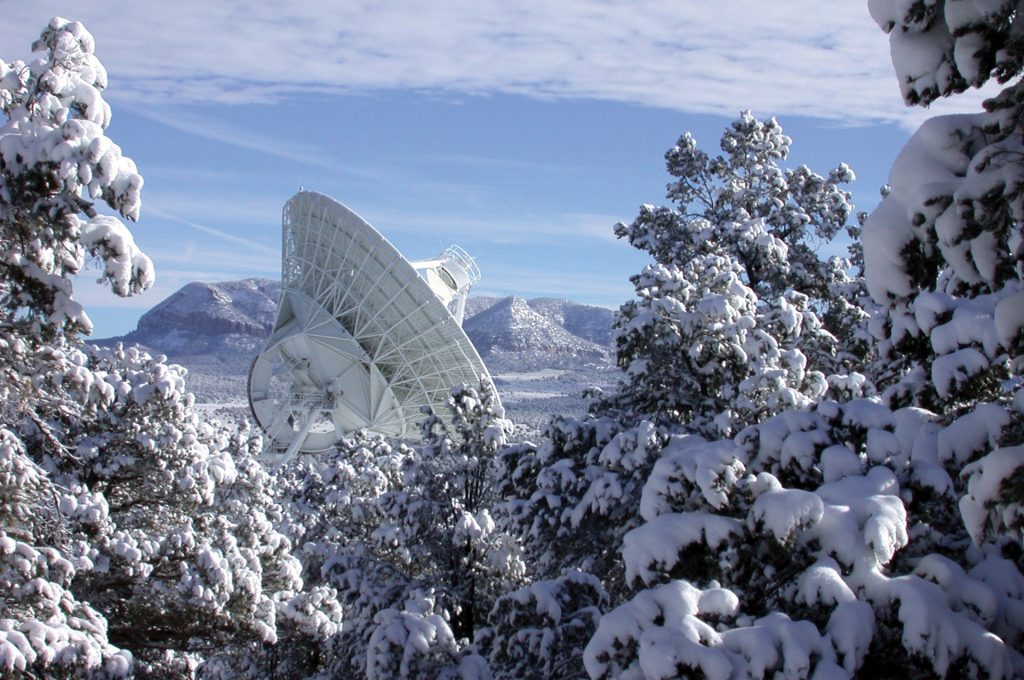
VLBA Pie Town antenna surrounded by snow-covered landscape
The Pie Town, New Mexico antenna is one of ten identical antennas, which are located throughout the northern hemisphere,...
Read more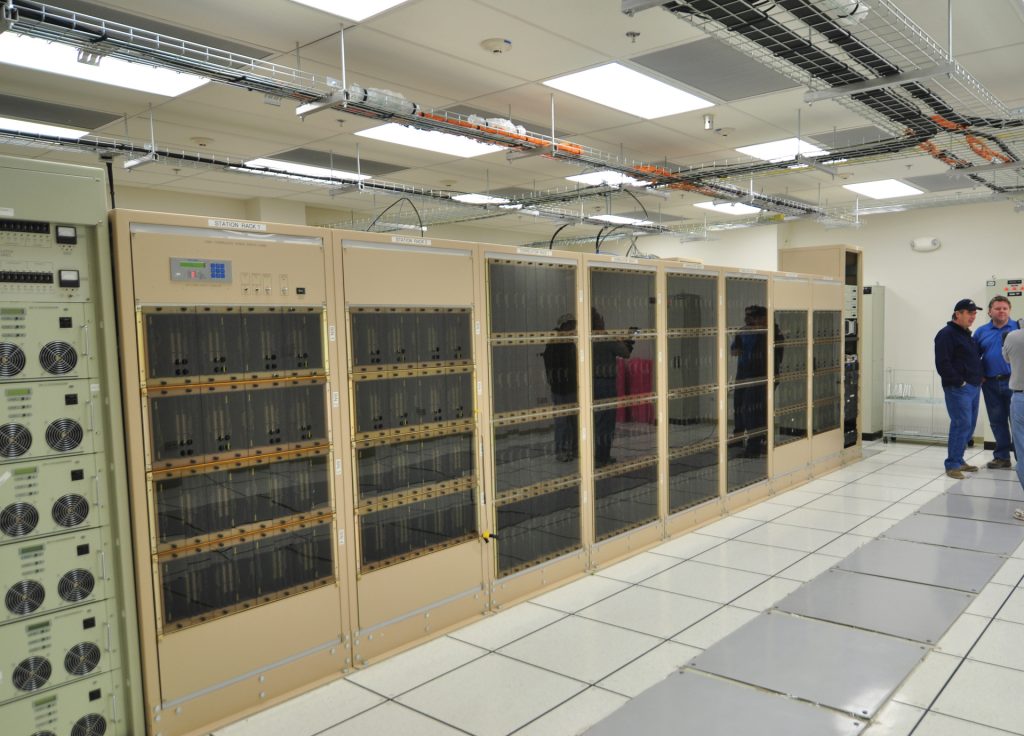
ALMA’s Supercomputer
The four-quadrant ALMA Correlator inside the Array Operations Site Technical Building at 16,500 feet elevation in northern Chile. This...
Read more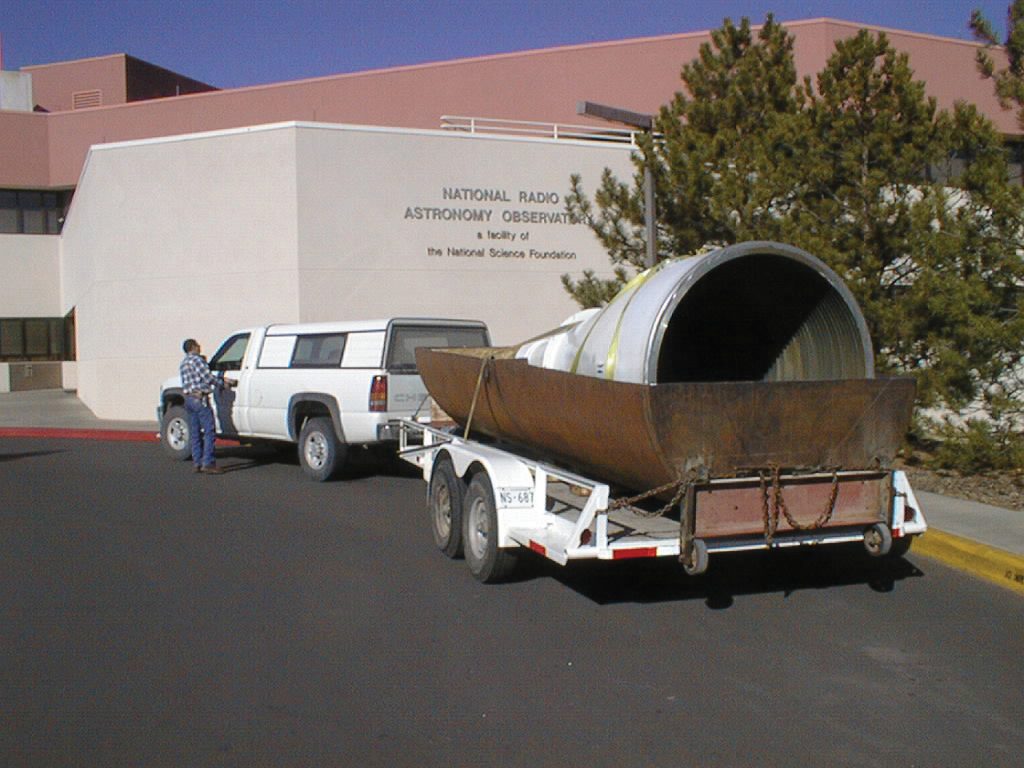
Trucking a Giant Feed Horn
The L-band feed horn is one of the largest feed horns used on our radio telescopes. The size of...
Read more
VLA’s Miles of Old Tracks
Over 80 miles of train track, re-purposed from old, discontinued rail lines around the United States, allow the Very...
Read more
Painting the GBT
Each of the 2004 aluminum panels of the 2.3 acres of Green Bank Telescope's surface must be scraped and...
Read more
Replacing Hard Drives at the VLA in 1983
Dave Ehnebuske replaces cartridges of hard drives at the Very Large Array's computer facility in 1983.
Read more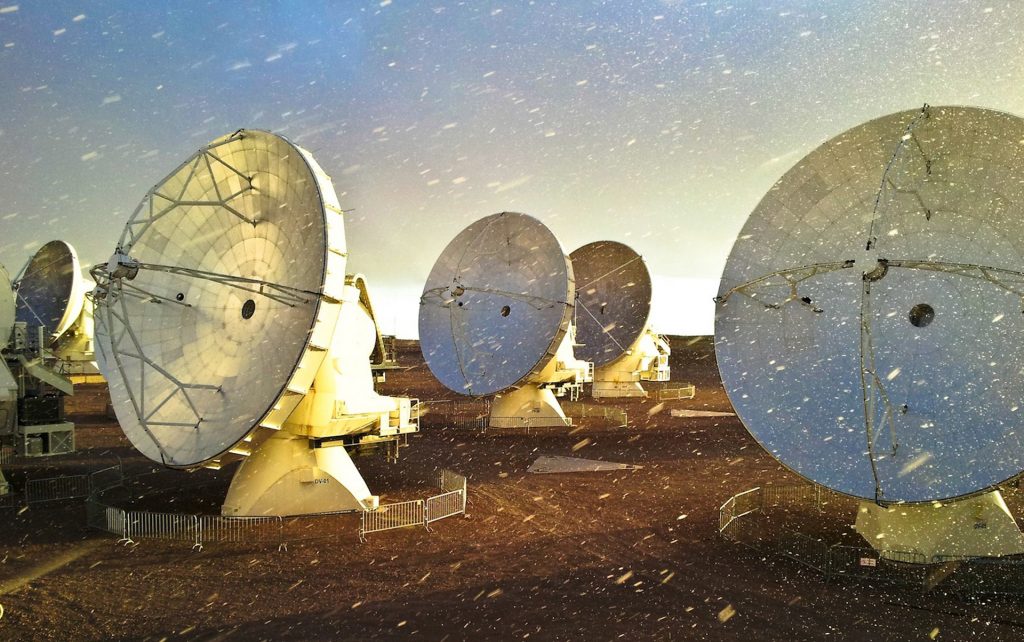
Snowstorm at ALMA
At 16,500 feet in the Chilean Andes, ALMA experiences some extreme weather conditions. They don't last long, but they...
Read more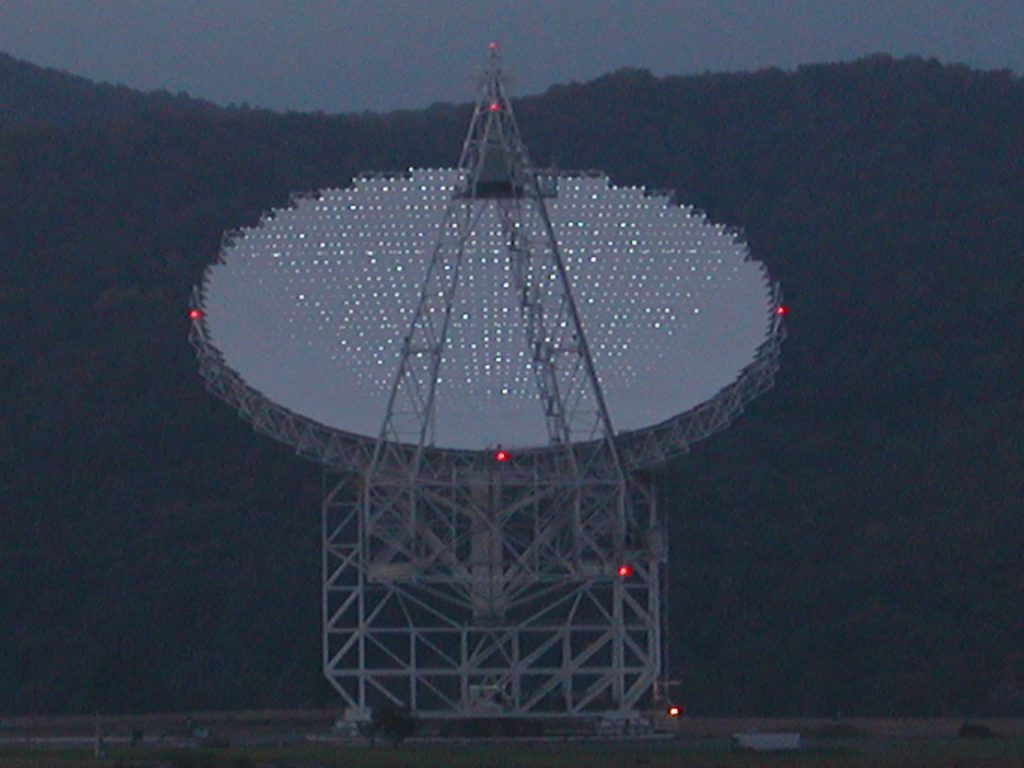
A Thousand Points of Light
The 2004 panels of the Green Bank Telescope have apple-sized reflector bulbs embedded in them. Engineers can light the...
Read more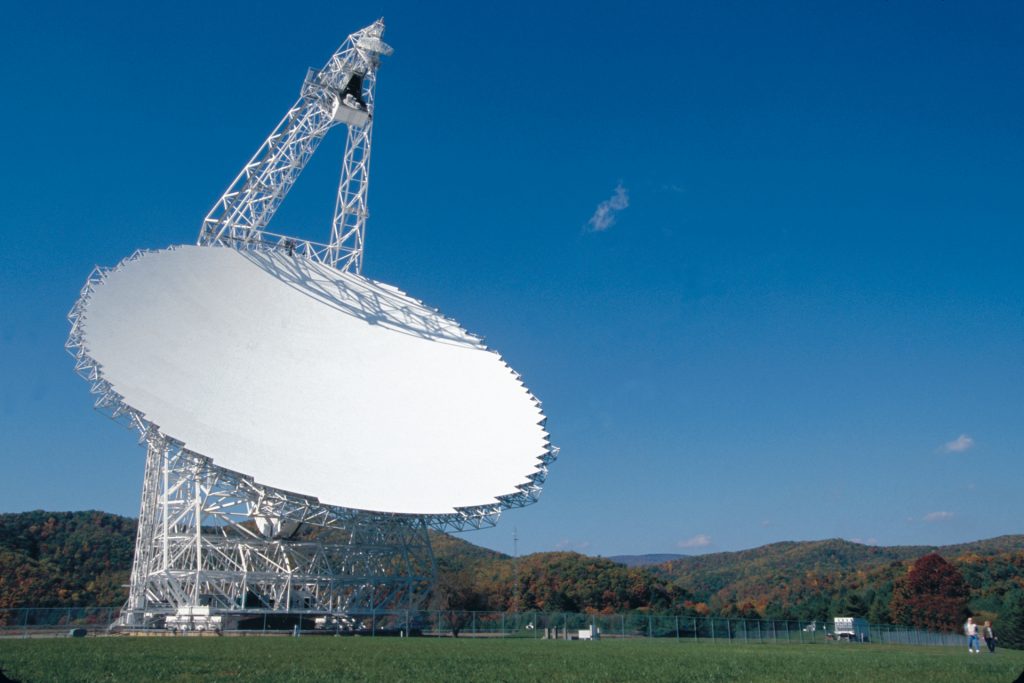
Green Bank Telescope
The Green Bank Telescope is the world's largest, fully-steerable telescope. The GBT's dish is 100-meters by 110-meters in size,...
Read more
The First Short GRB Millimeter Afterglow: The Wide-Angled Jet of Gamma Ray Burst 211106A
In a first for radio astronomy, scientists have detected millimeter-wavelength light from a short-duration gamma-ray burst. This artist's conception...
Read more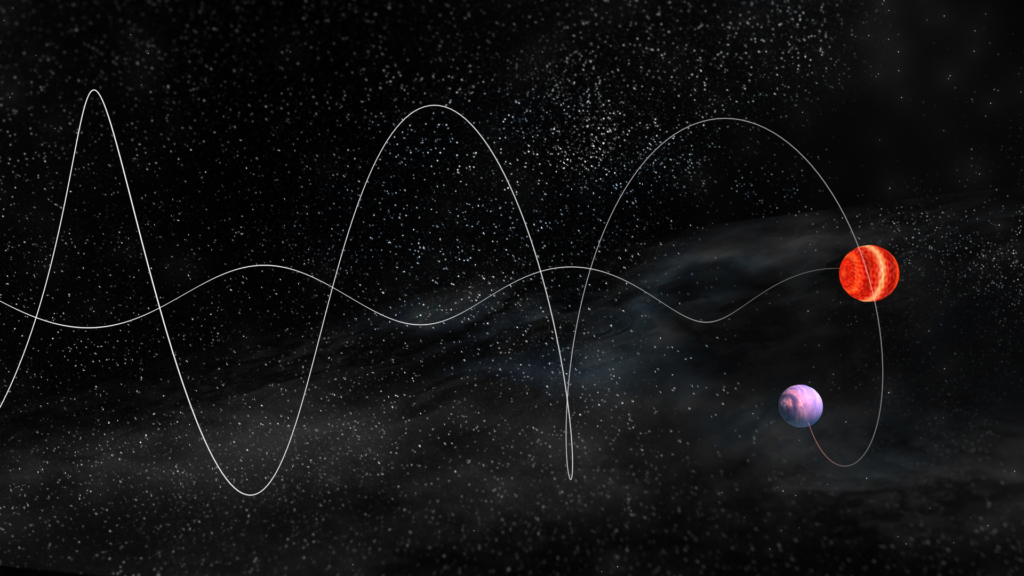
VLBA Finds Planet Orbiting Small, Cool Star
Using the supersharp radio “vision” of the National Science Foundation’s continent-wide Very Long Baseline Array (VLBA), astronomers have discovered...
Read more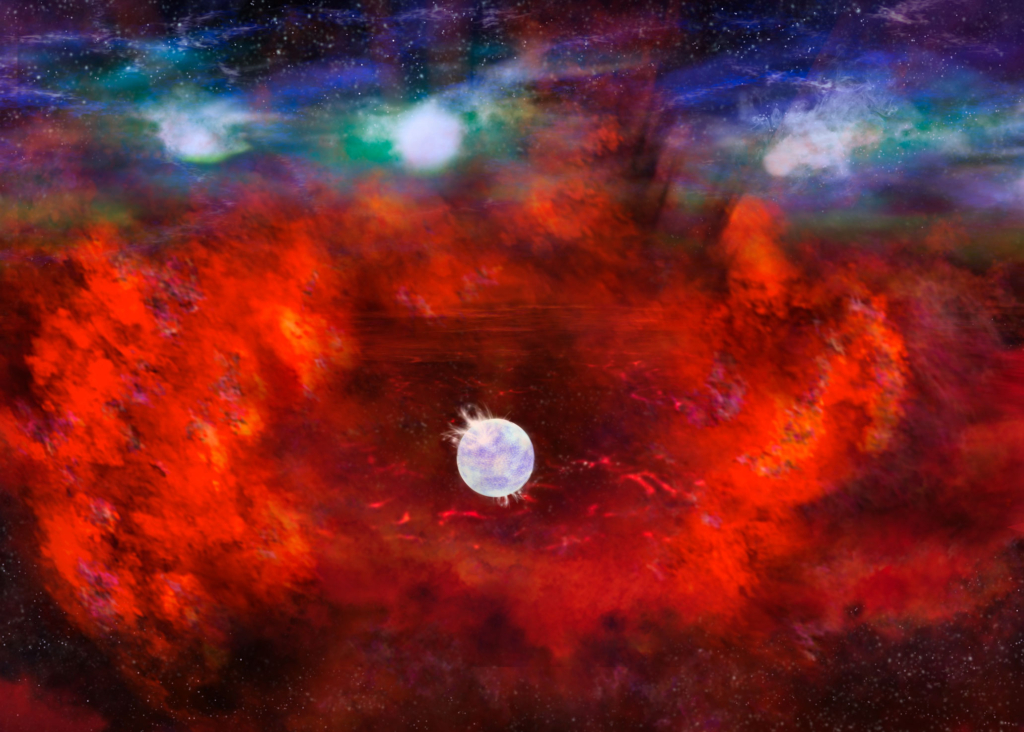
Neutron star in Supernova 1987A
This artist's illustration of Supernova 1987A shows the dusty inner regions of the exploded star's remnants (red), in which...
Read more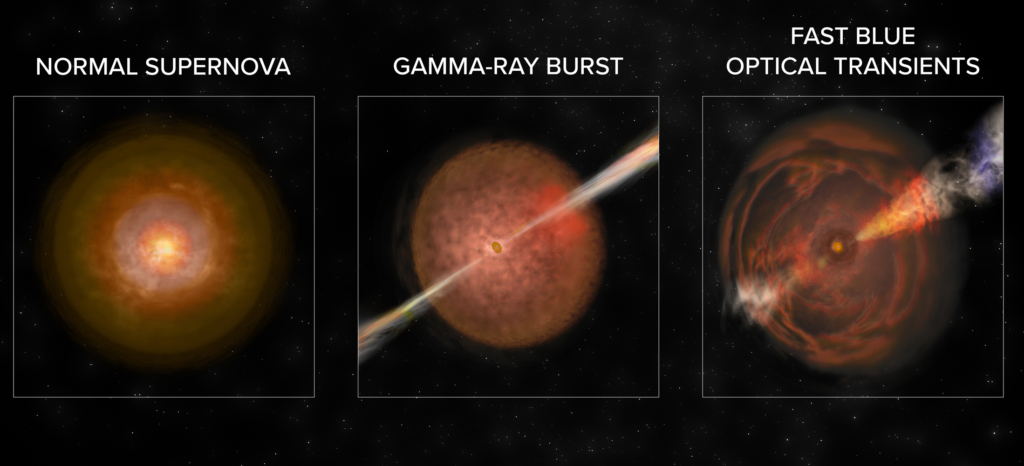
FBOTs, Gamma-Ray Bursts, and Supernovae
Artist's conception illustrates the differences in phenomena resulting from an "ordinary" core-collapse supernova explosion, an explosion creating a gamma-ray...
Read more
55 antennas on Chajnantor plains
ALMA with 55 antennas in March 2013. The Atacama Compact Array is clearly visible as the tightly-grouped set of...
Read more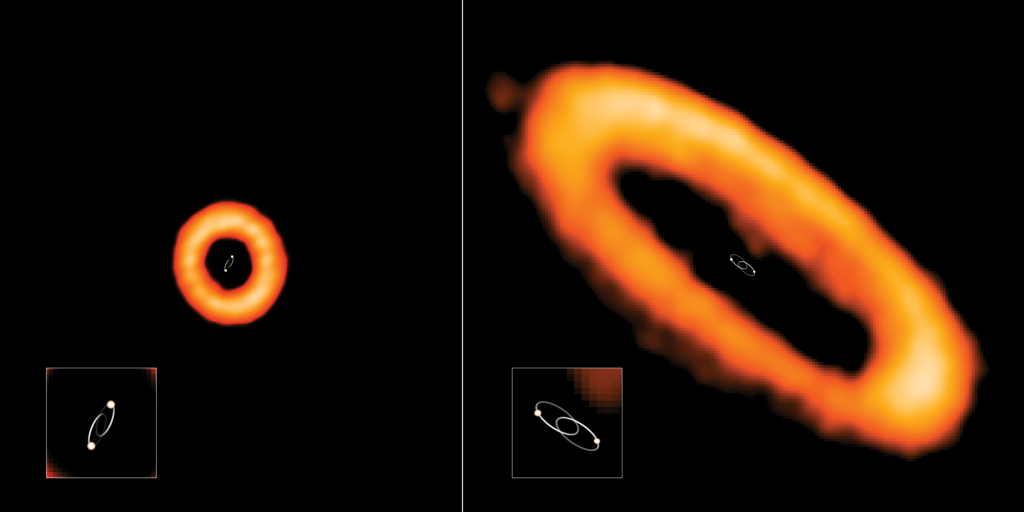
Aligned and Misaligned Circumbinary Disks
Two examples of aligned and misaligned protoplanetary disks around binary stars (circumbinary disks), observed with ALMA. Binary star orbits...
Read more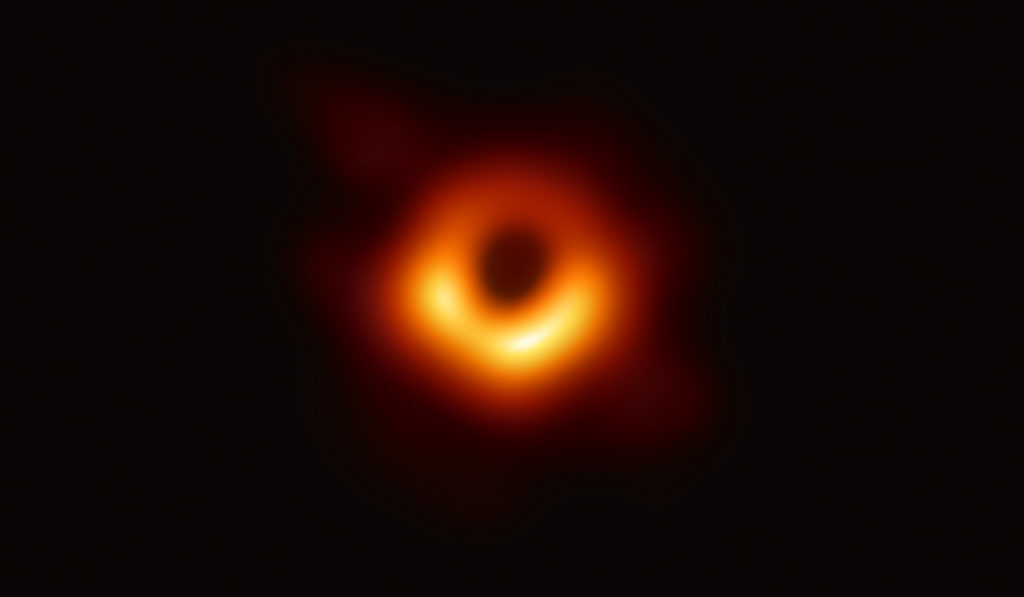
Astronomers Capture First Image of a Black Hole
The Event Horizon Telescope (EHT) — a planet-scale array of eight ground-based radio telescopes forged through international collaboration —...
Read more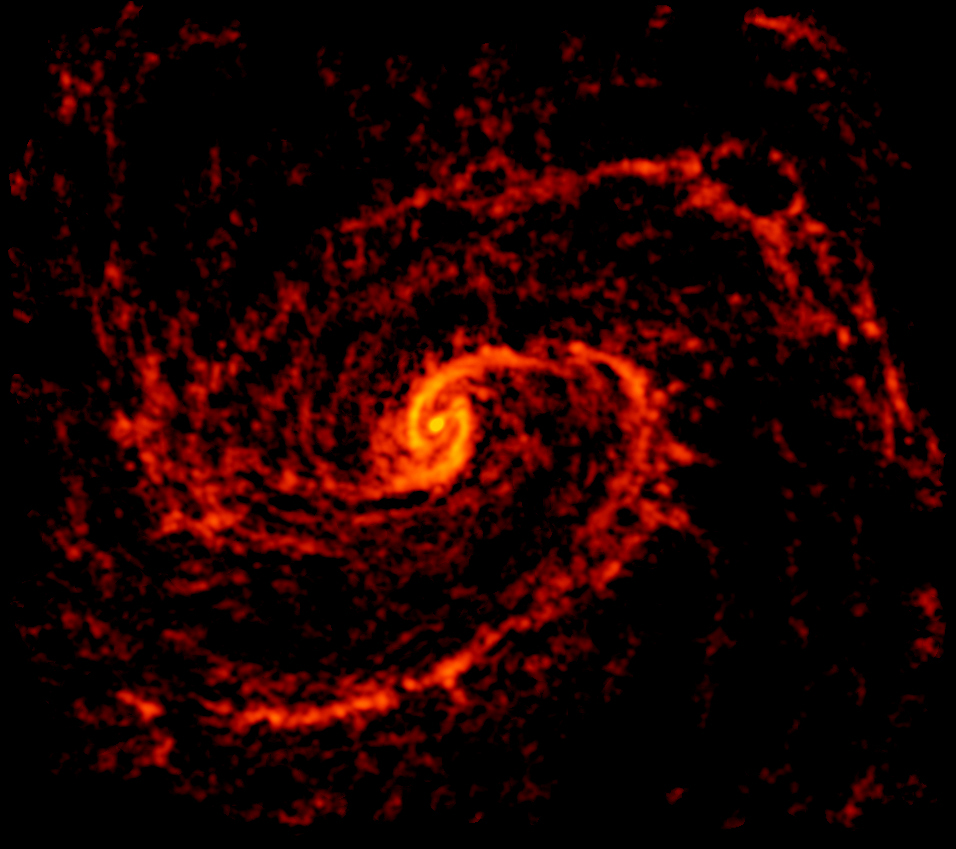
PHANGS-ALMA Radio Image of NGC 4321
ALMA image of galaxy NGC 4321, also known as Messier 100, an intermediate spiral galaxy located about 55 million...
Read more
ALMA and Otto
An ALMA antenna being moved at the Operations Support Facility (OSF) by Otto, one of the two specially designed...
Read more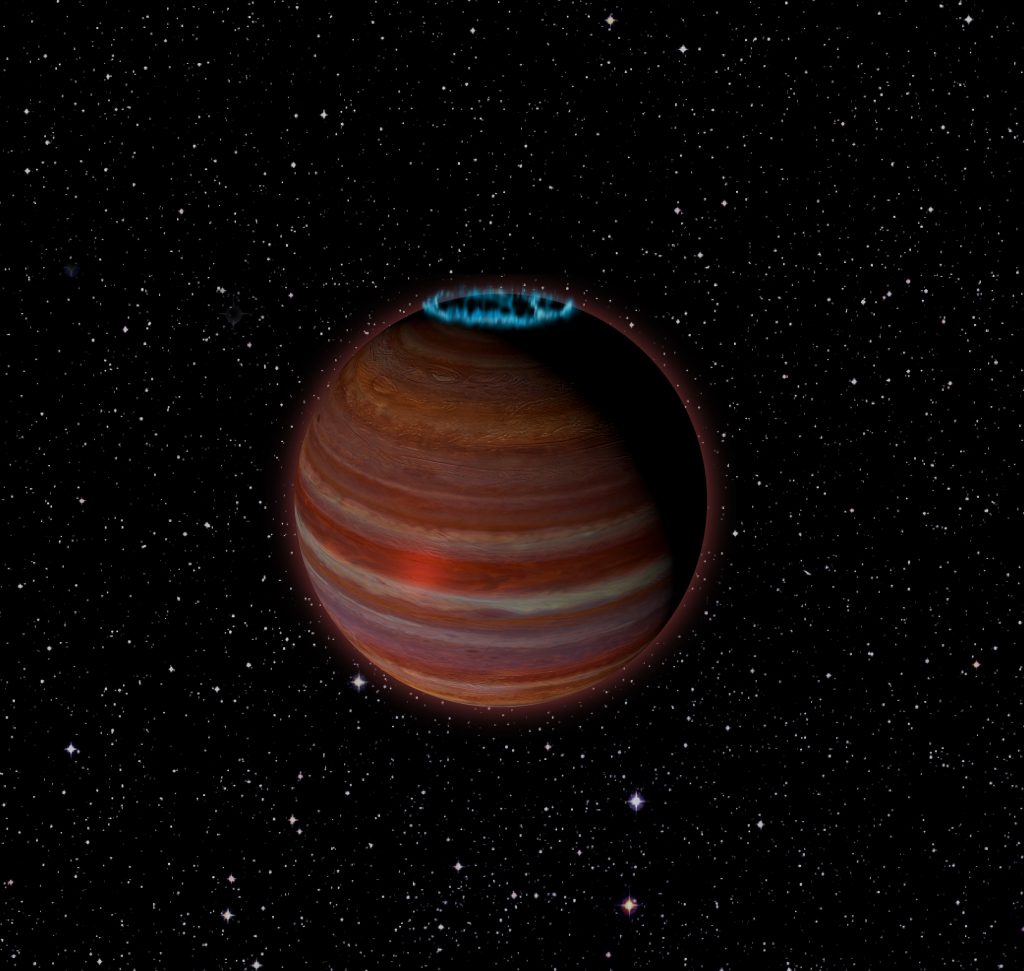
The Boundary Between Giant Planet and Brown Dwarf
Artist's conception of SIMP J01365663+0933473, an object with 12.7 times the mass of Jupiter, but a magnetic field 200...
Read more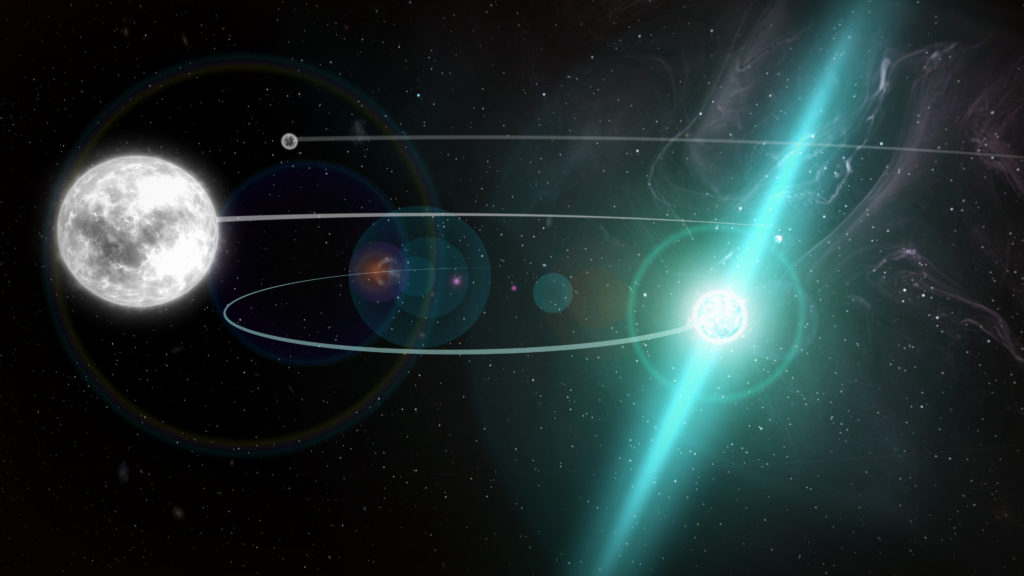
Even Dense Neutron Stars Fall like a Feather
Harnessing the exquisite sensitivity of the National Science Foundation’s Green Bank Telescope (GBT), astronomers have given one of Einstein’s...
Read more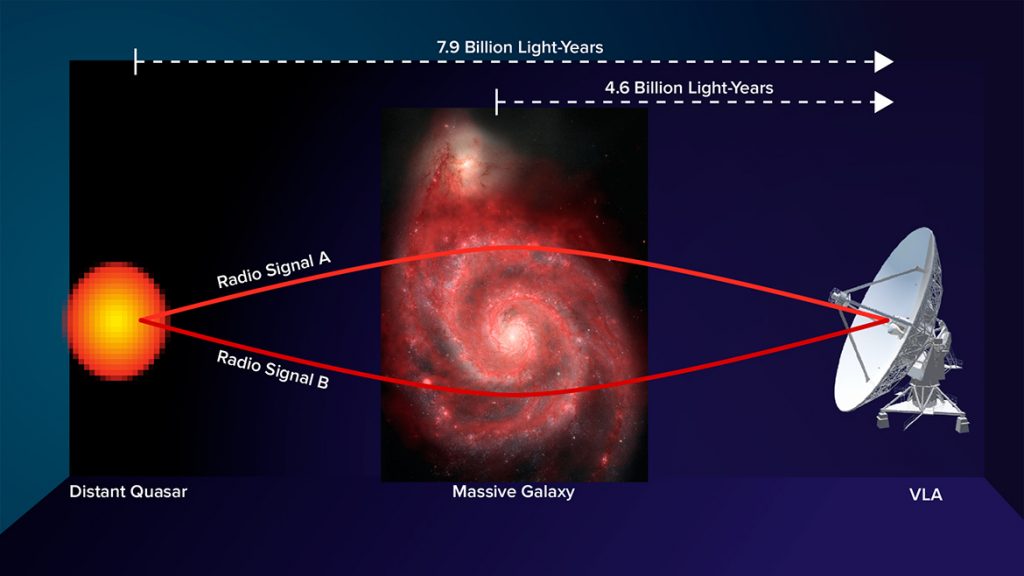
Measuring Magnetic Fields
Artist's conception of gravitational lens arrangement that allowed astronomers to measure a galaxy's magnetic field. Magnetic fields affect radio...
Read more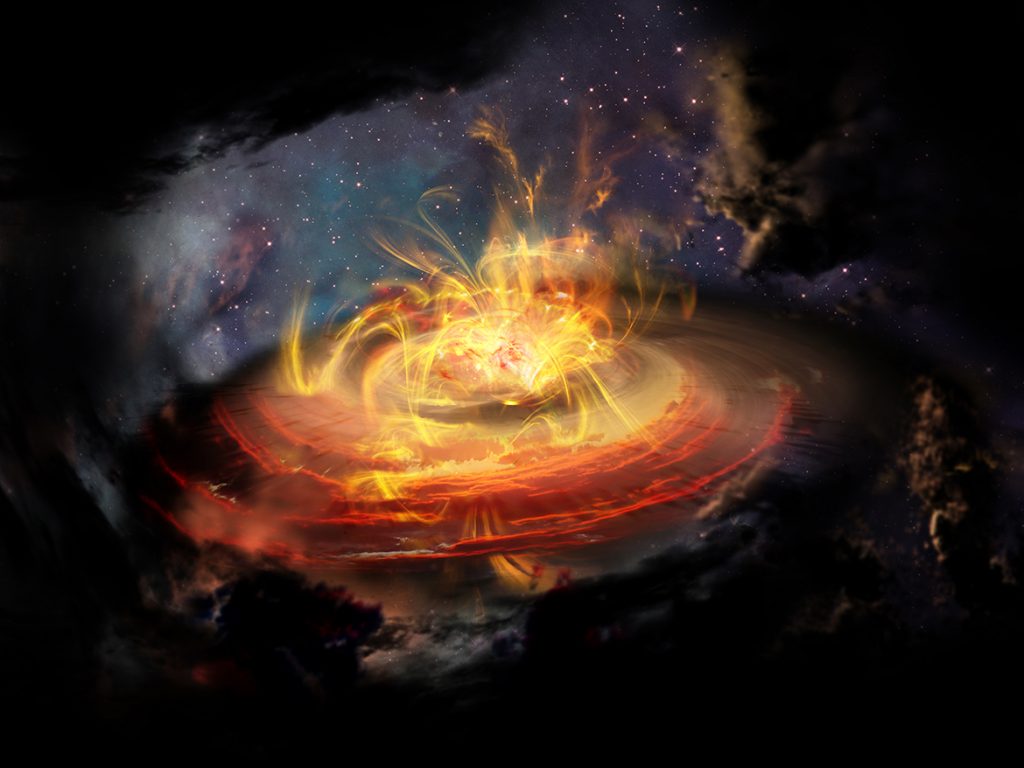
Chaotically Magnetized Cloud Is No Place to Build a Star, or Is It?
For decades, scientists thought that the magnetic field lines coursing around newly forming stars were both powerful and unyielding,...
Read more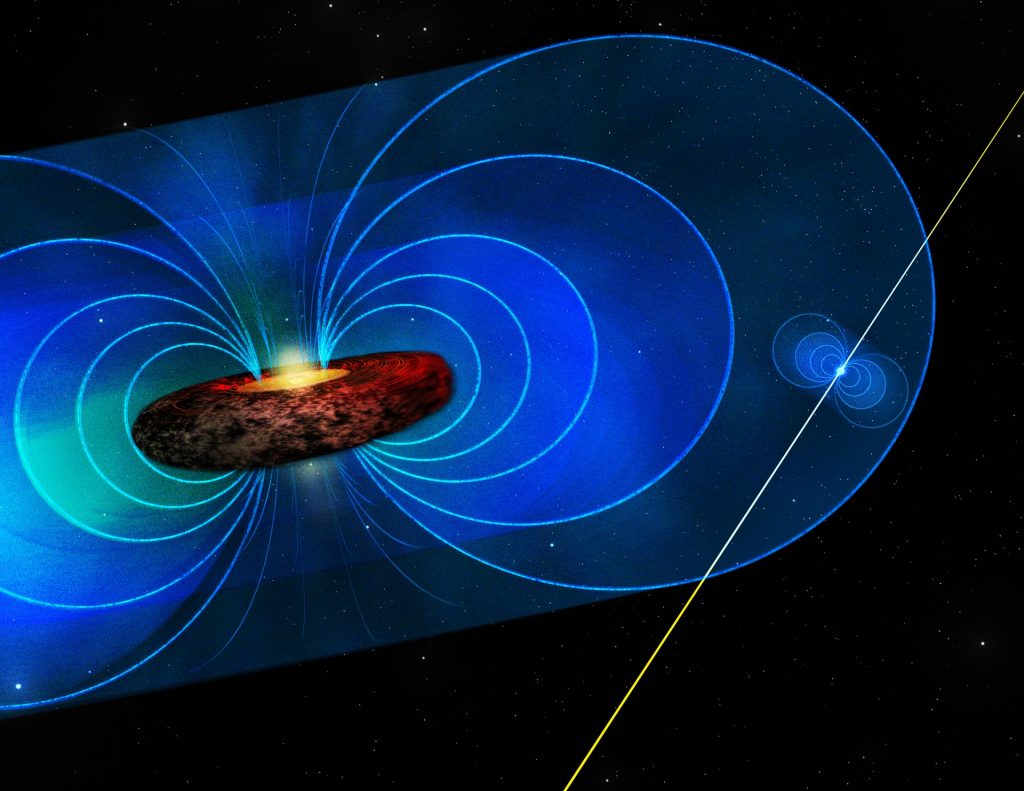
Measuring a Magnetic Field
In this artist's illustration, the black hole at the center of our Milky Way Galaxy has an intense magnetic...
Read more
Finding Ice in Baby Solar Systems
Artist concept of the so-called "snow line" in the young planet-forming system known as TW Hydrae. A snow line...
Read more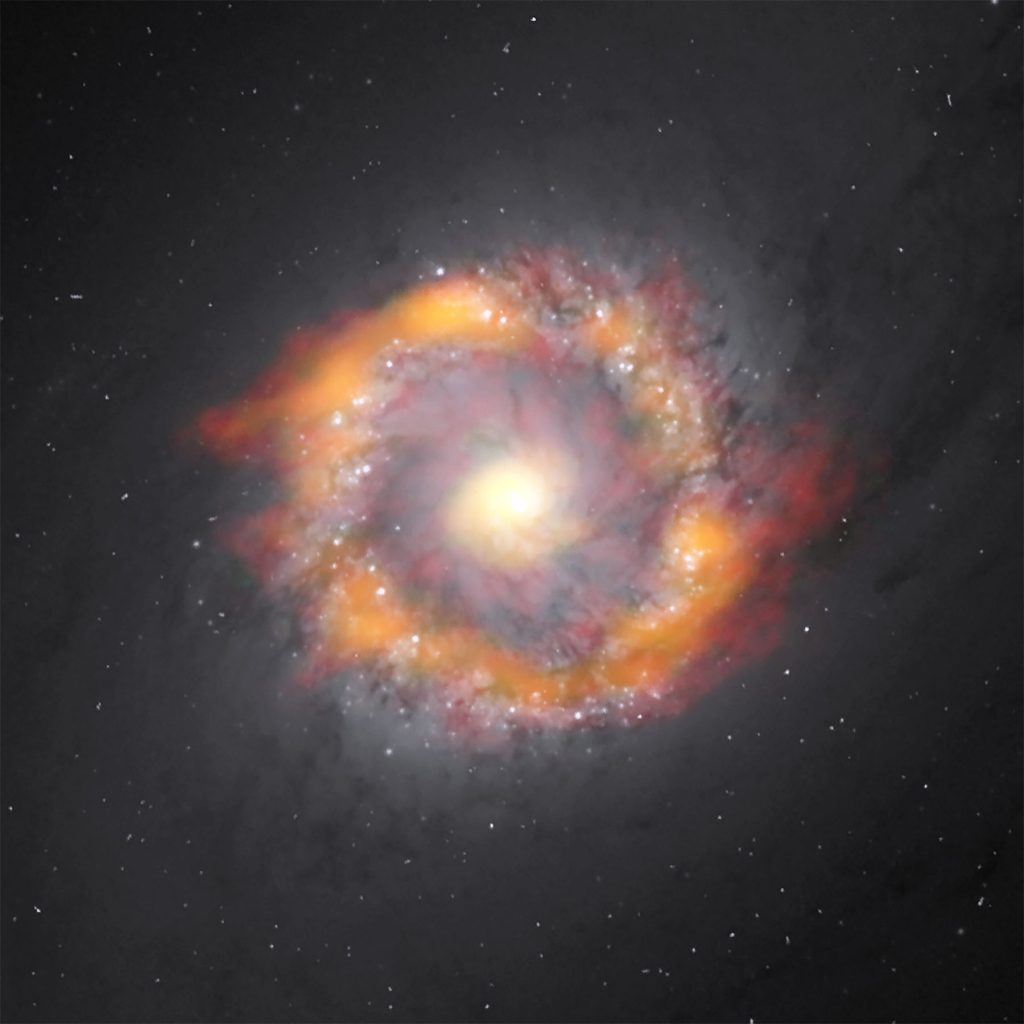
Composite image of the barred spiral galaxy NGC 1097, including images from ALMA and HST
Composite image of the barred spiral galaxy NGC 1097. By studying the motion of two molecules, ALMA was able...
Read more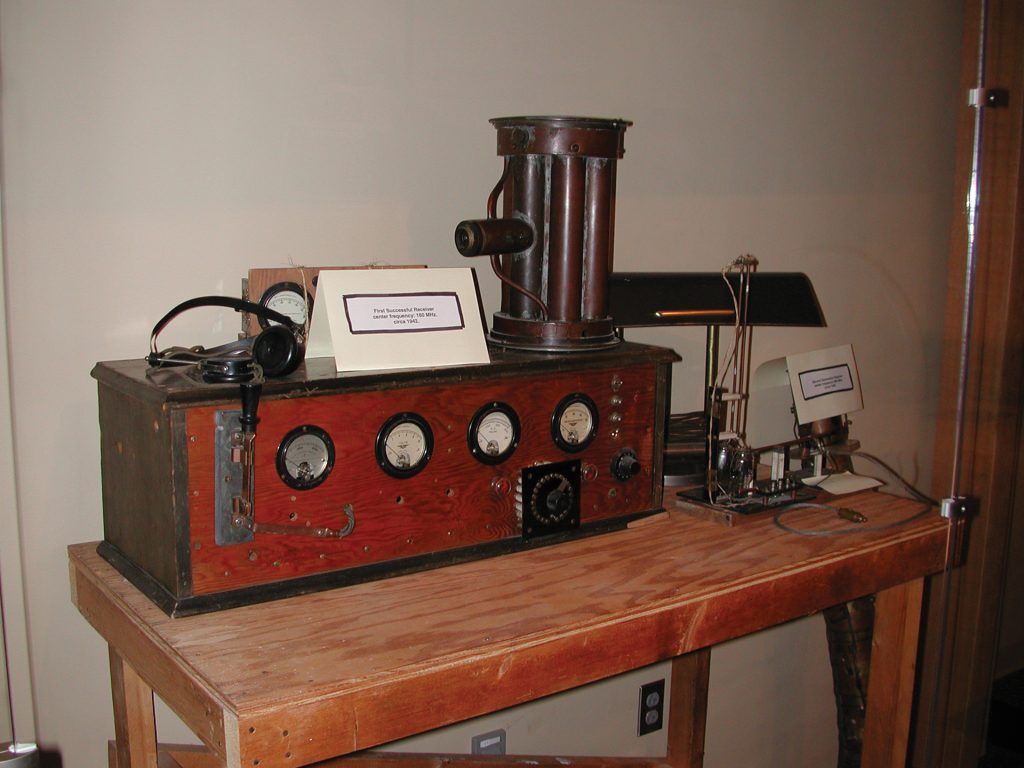
Grote Reber’s Receiver Exhibit
On exhibit in the Green Bank Science Center in West Virginia is the original receiver equipment used by radio...
Read more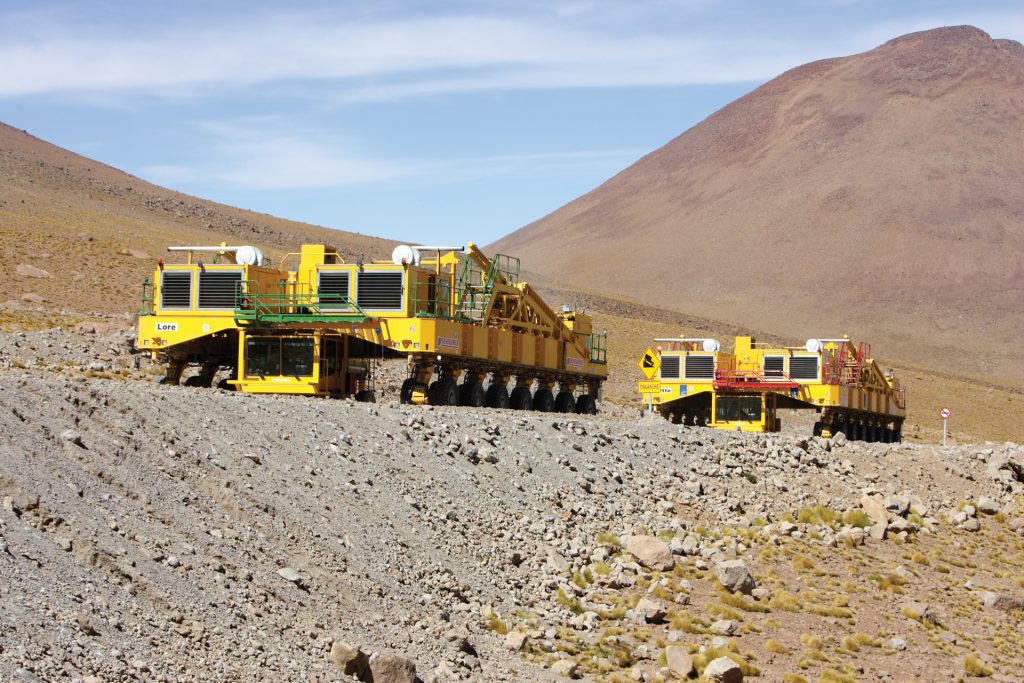
ALMA Transporters ascend to the high site
The two ALMA Transporters, giant 28-wheeled trucks that lift, power, and haul the telescopes for major servicing or during...
Read more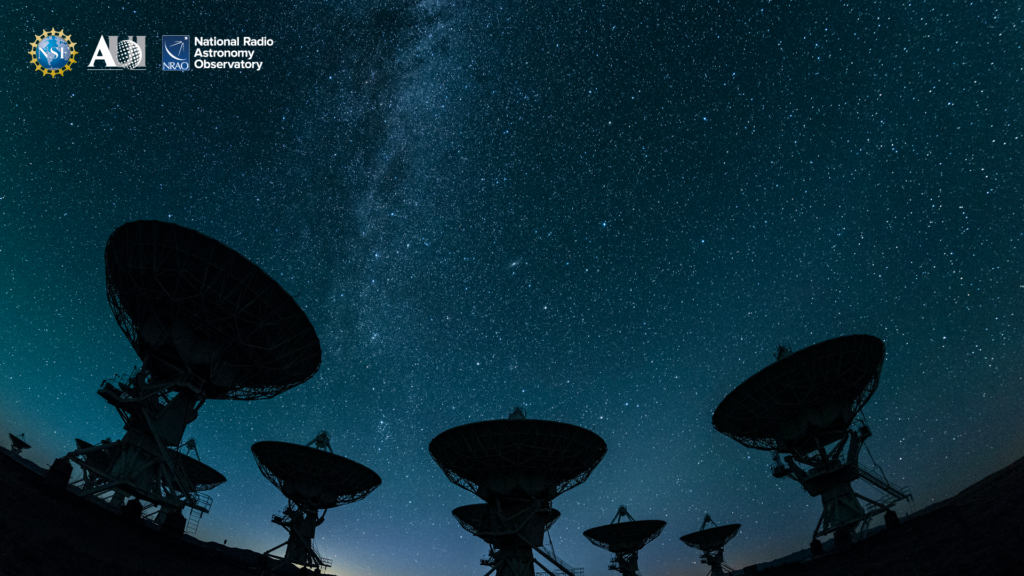
VLA Background 2
Try out this high definition image for your desktop or video chat background.
Read more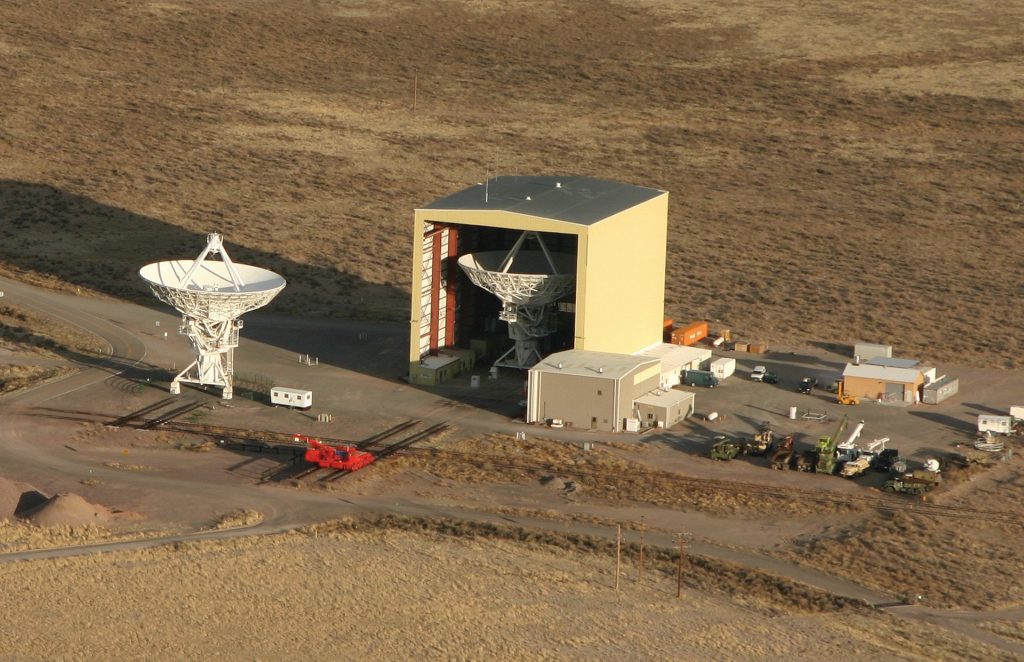
Looking Down on the VLA Barn
The Sun sets over the Antenna Assembly Building at the Very Large Array in central New Mexico. Inside the...
Read more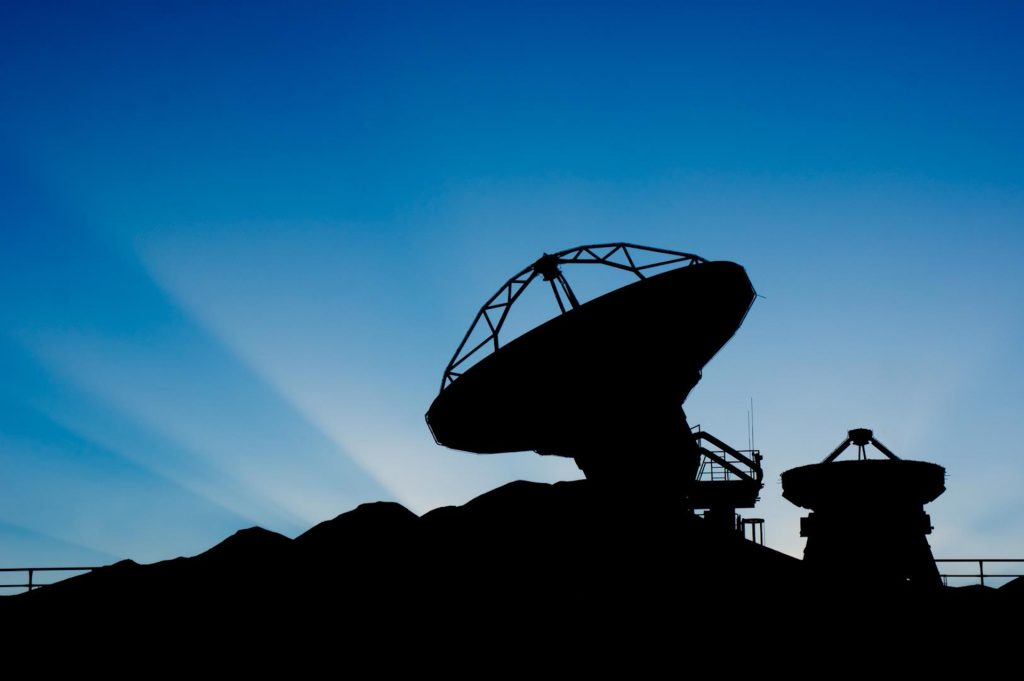
Sunbeams Grace ALMA
Beams of sunshine are captured behind the distant mountains that ring the ALMA site in northern Chile. A...
Read more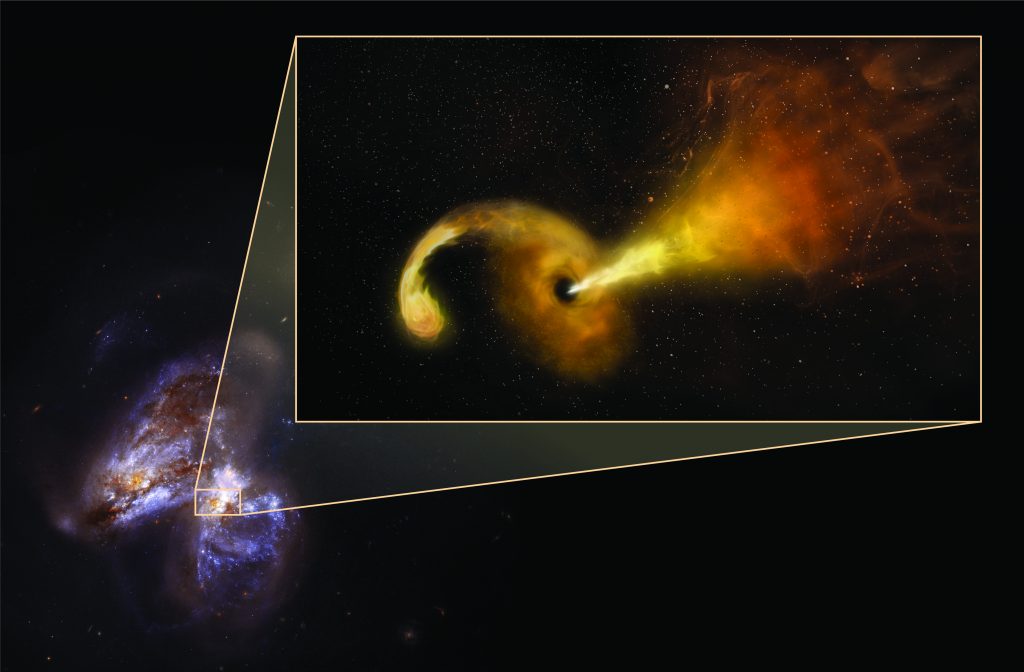
Tidal Disruption Event in Arp 299
Artist's conception of Tidal Disruption Event (TDE) in Arp 299. Powerful gravity of supermassive black hole shreds passing star,...
Read more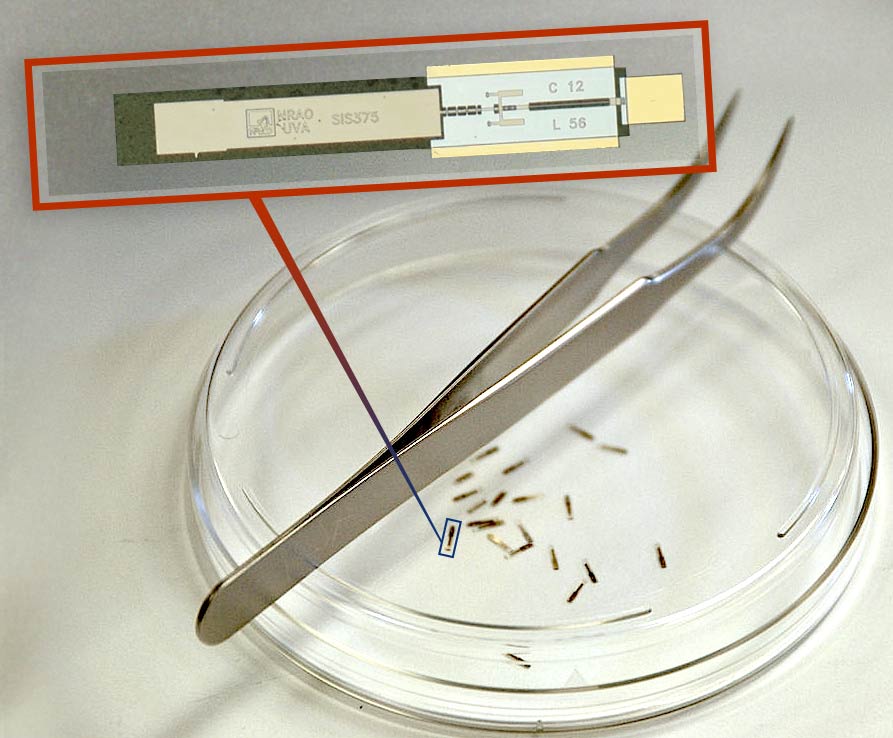
Band 6 SIS Mixer
The largest millimeter array in the world relies on the tiniest electronic parts. These are mixers for the receivers...
Read more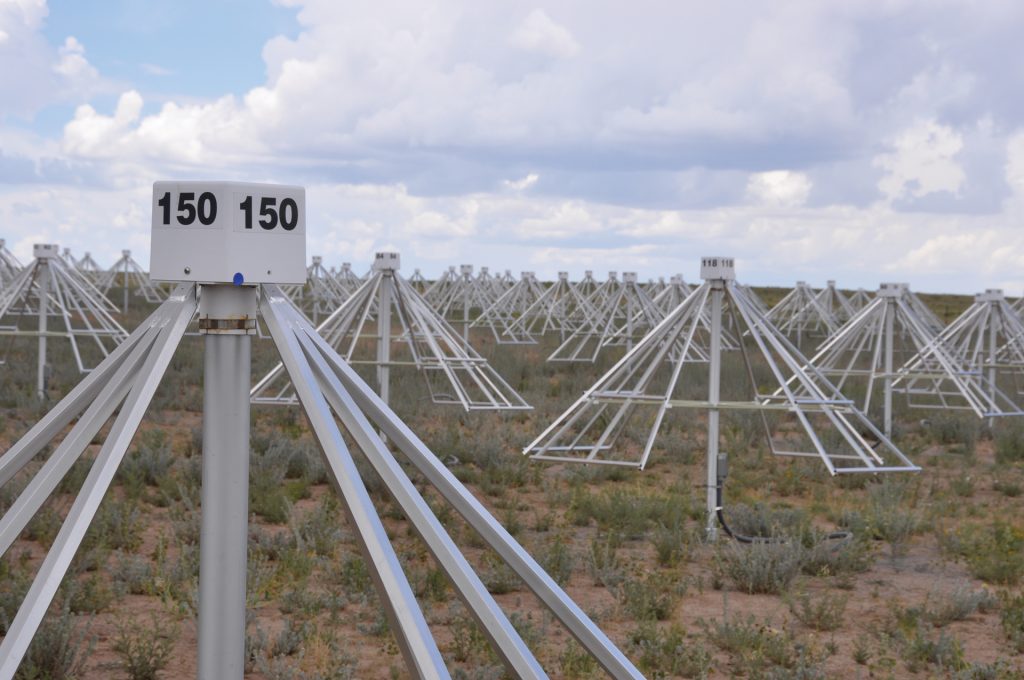
Amidst the Antennas of the LWA
These are the four-sided dipole antennas of the Long Wavelength Array on the site of the Very Large Array...
Read more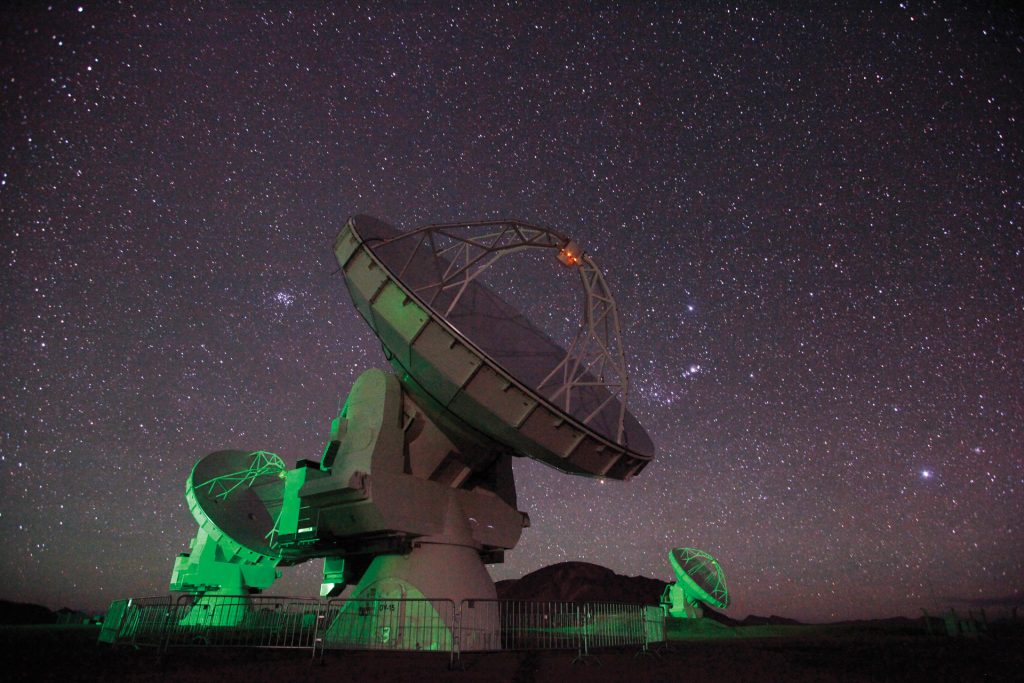
Ghostly Glow of ALMA at Night
The green safety lights on the ALMA antennas provide the only light for this long-exposure photograph at the 16,500-foot...
Read more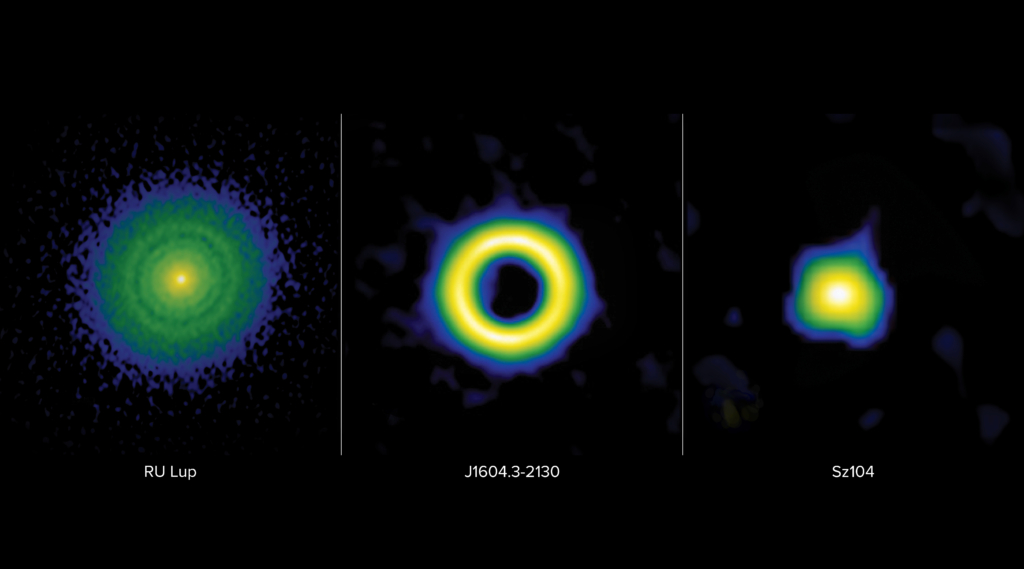
Protoplanetary Disks Side-by-Side Comparison
Protoplanetary disks are classified into three main categories: transition, ring, or extended. These false-color images from the Atacama Large...
Read more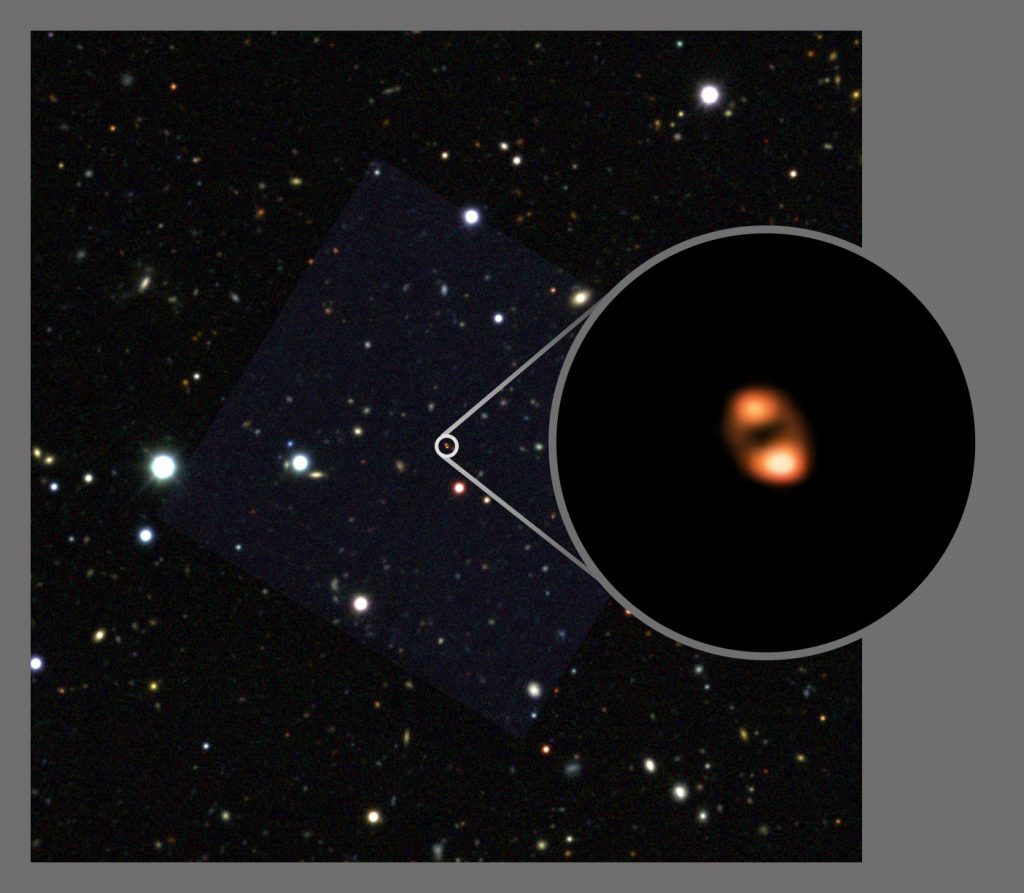
ALMA Observes Most Distant Galactic Outflow
ALMA, aided by a gravitational lens, imaged the outflow, or "wind," from a galaxy seen when the universe was...
Read more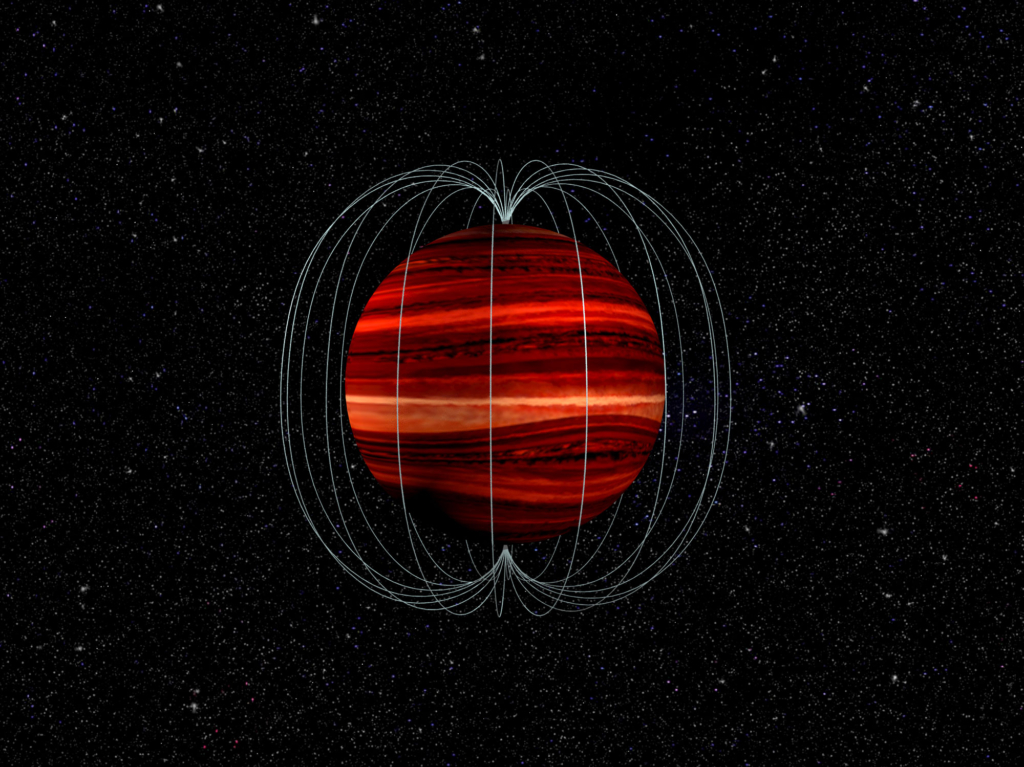
Brown Dwarf and its Magnetic Field
Artist's conception of a brown dwarf -- an object intermediate in mass between a star and a planet --...
Read more
Sharper Image of Galaxy with VLASS
The sharpest radio view ever made of such a large portion of the sky! This galaxy, observed by the...
Read more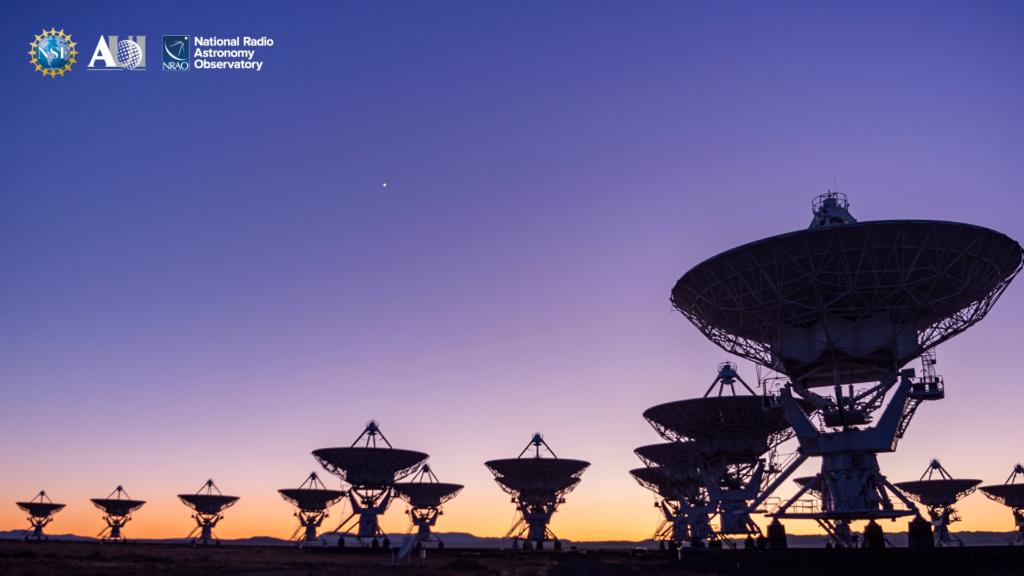
VLA Background 7
Try out this high definition image for your desktop or video chat background.
Read more
Double Sunset on a ‘Tatooine’ Exoplanet
Artist impression of a double sunset on a 'Tatooine' exoplanet forming in a circumbinary disk that is misaligned with...
Read more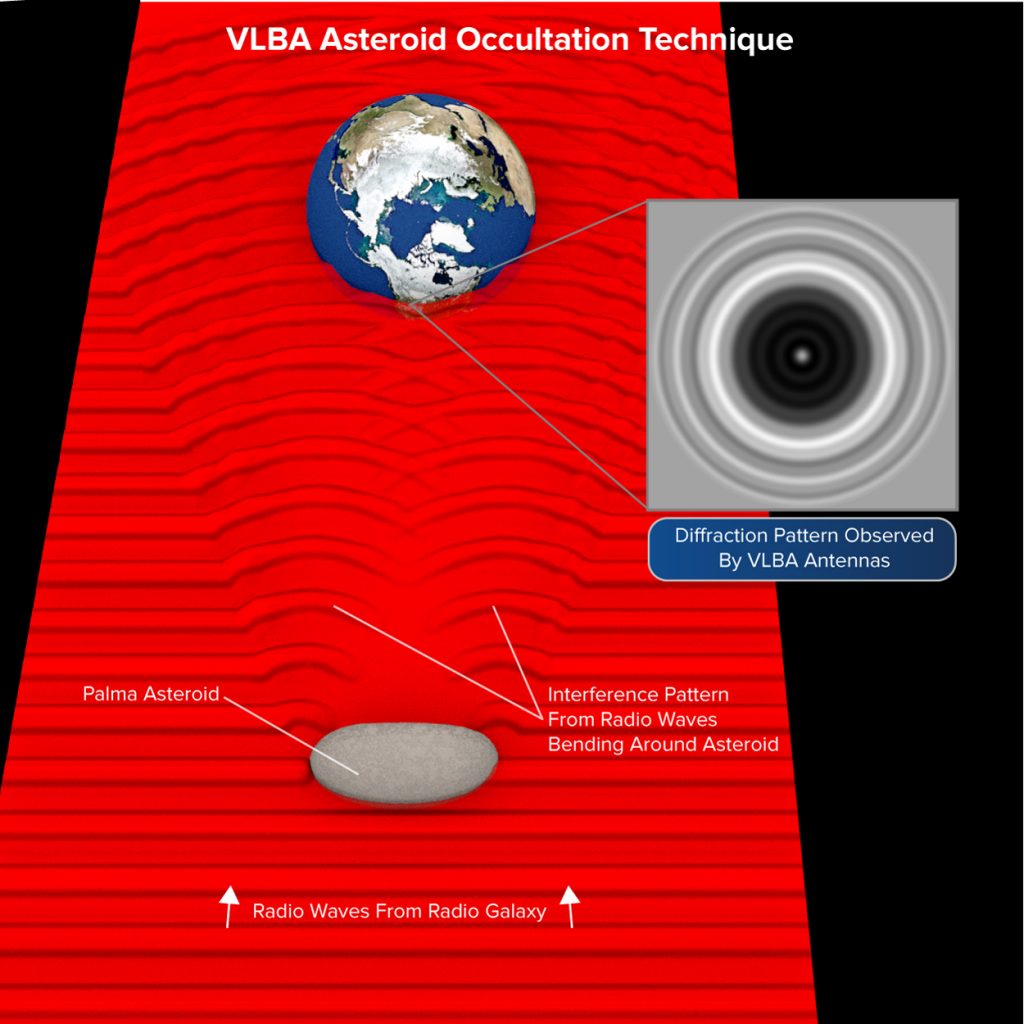
VLBA Sees Diffraction Patterns Caused by Asteroid
Radio waves from a distant galaxy were blocked from view by an asteroid in our Solar System. However, in...
Read more
VLBA Global Locations
Artist's conception of the Very Long Baseline Array (VLBA), a continent-wide radio telescope system. The VLBA is an interferometer...
Read more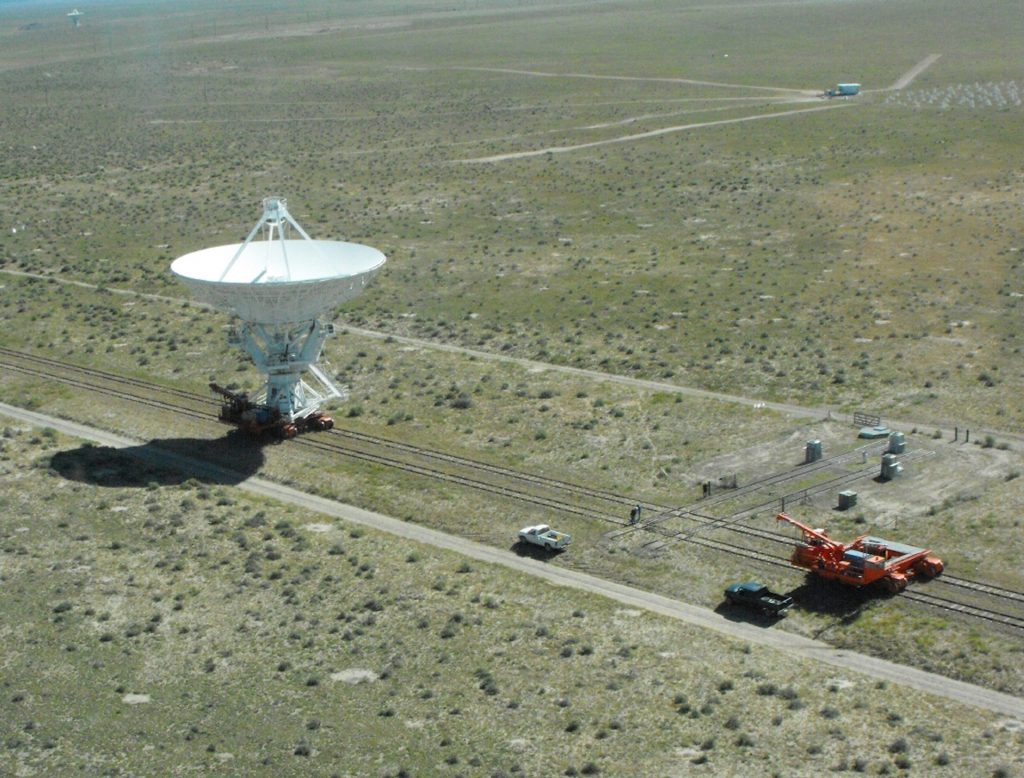
Ease on Down the Road
On a schedule that runs throughout the year, the 27 antennas of the Very Large Array in New Mexico...
Read more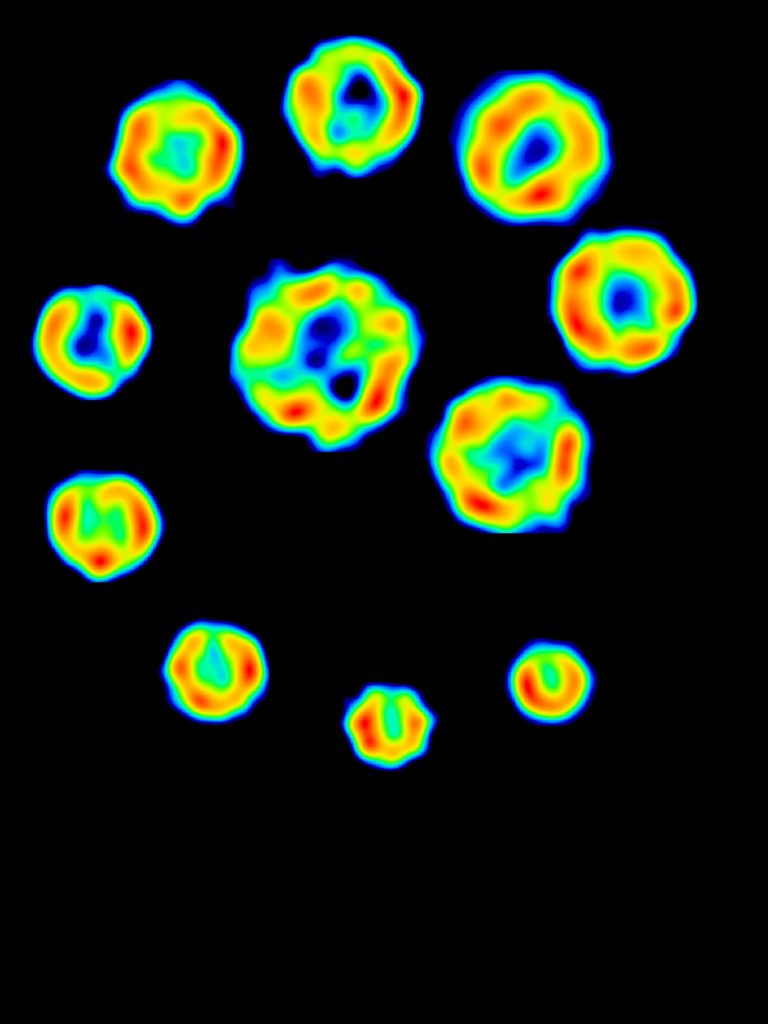
The Expansion of Supernova 1993j
SN 1993J was discovered March 28, 1993, by Francisco Garcia Diaz, an amateur astronomer in Lugo, Spain, using a...
Read more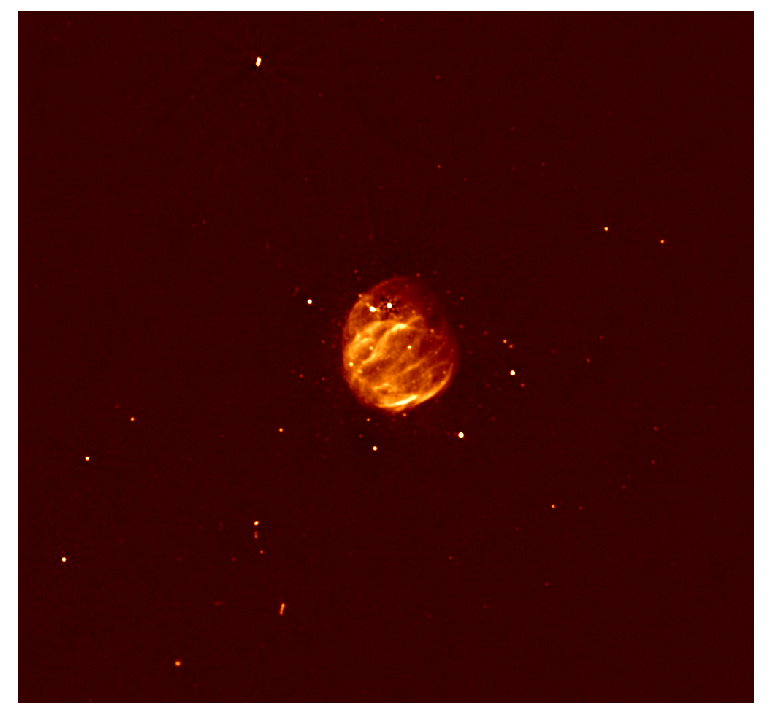
Glowing Bubble of an Exploded Star
Radio image of supernova remnant G55.7+3.4 shows previously-unseen filamentary structure, thanks to enhancements made to the Very Large Array...
Read more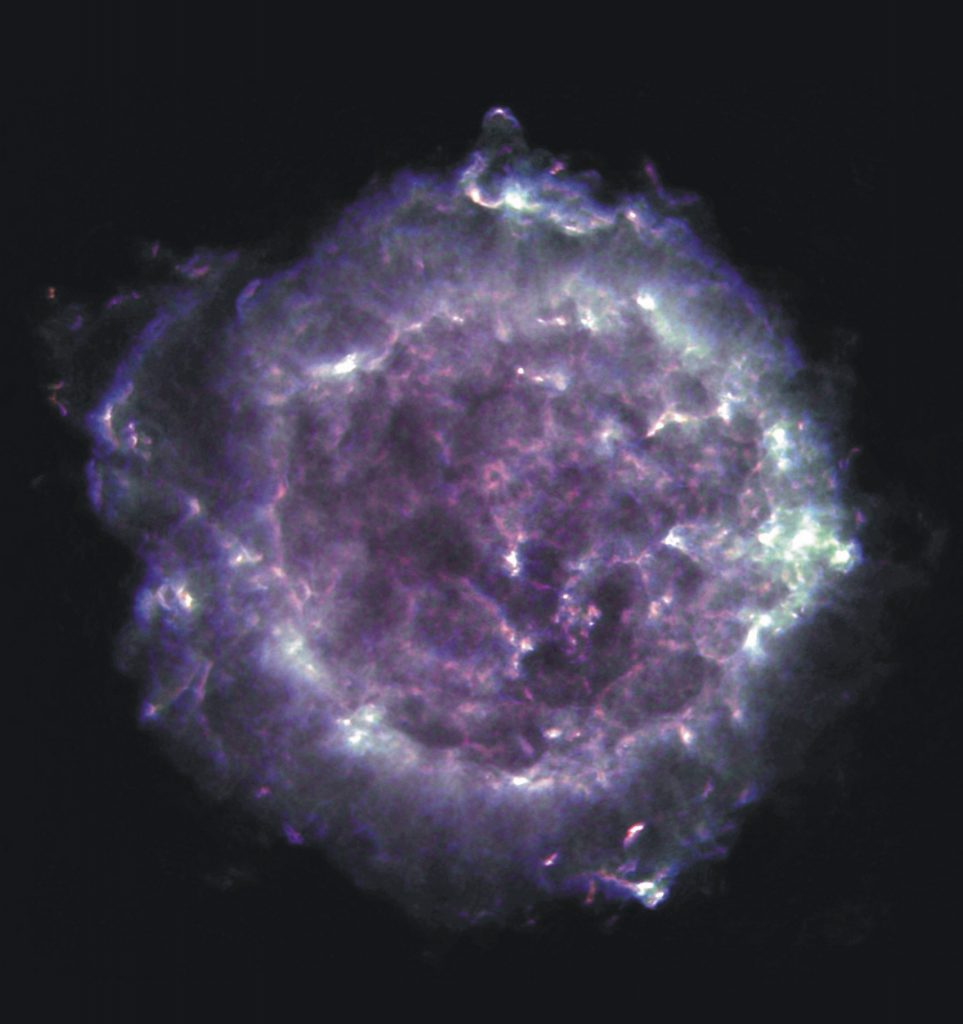
Cassiopeia A
Cassiopeia A is the remnant of a supernova explosion that appeared in our sky over 300 years ago in...
Read more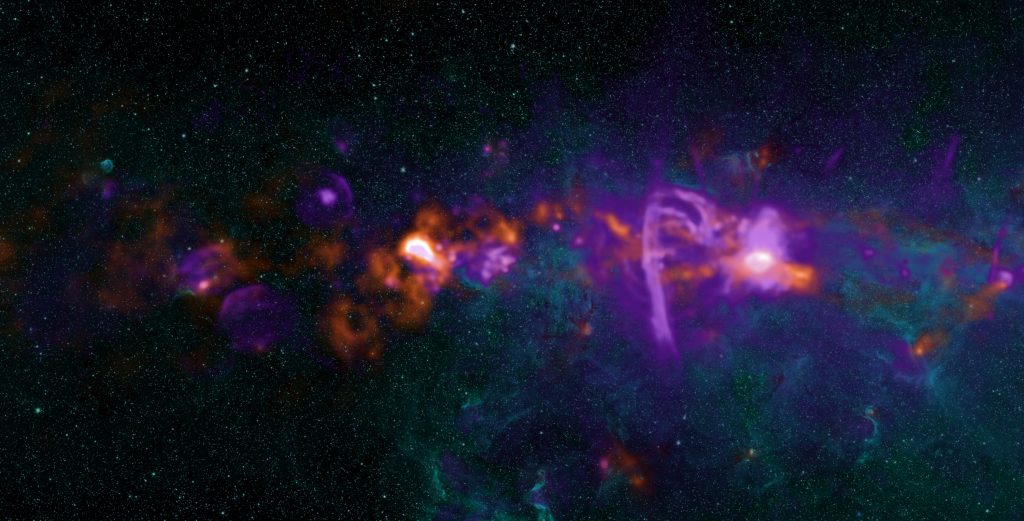
Stars Forming in our Galaxy’s Heart
The Galactic Center and the surrounding Central Molecular Zone make up the most active star formation region in the...
Read more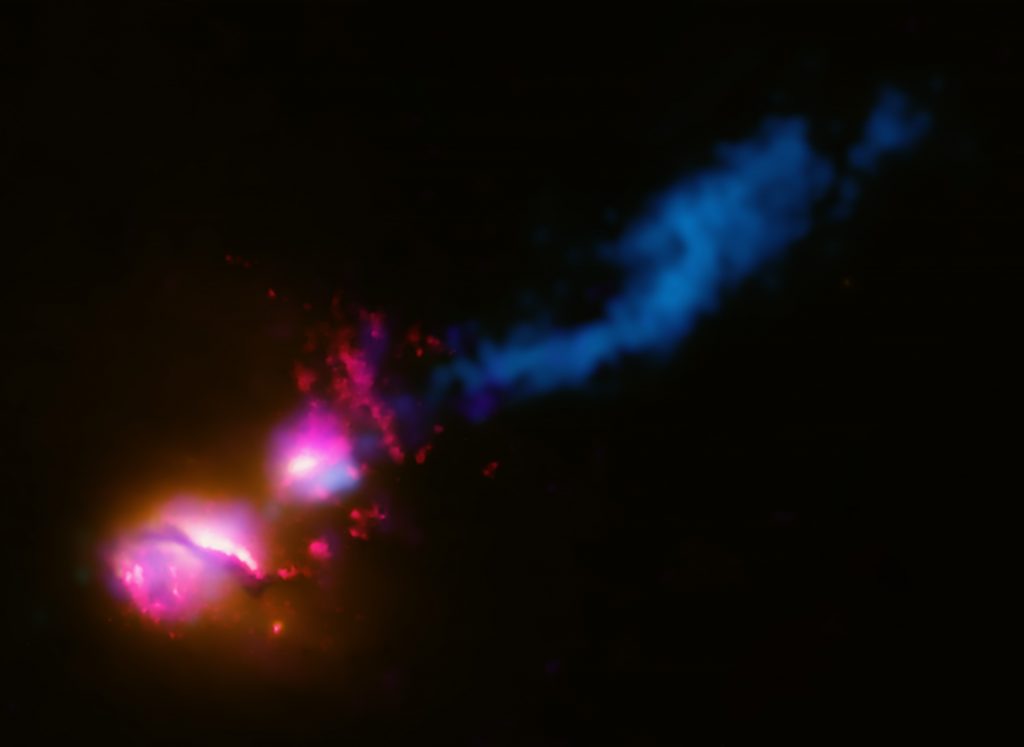
Black Hole Fires Jet at Companion Galaxy
This composite image of the radio galaxy 3C321 shows the jet from a black hole at the center of...
Read more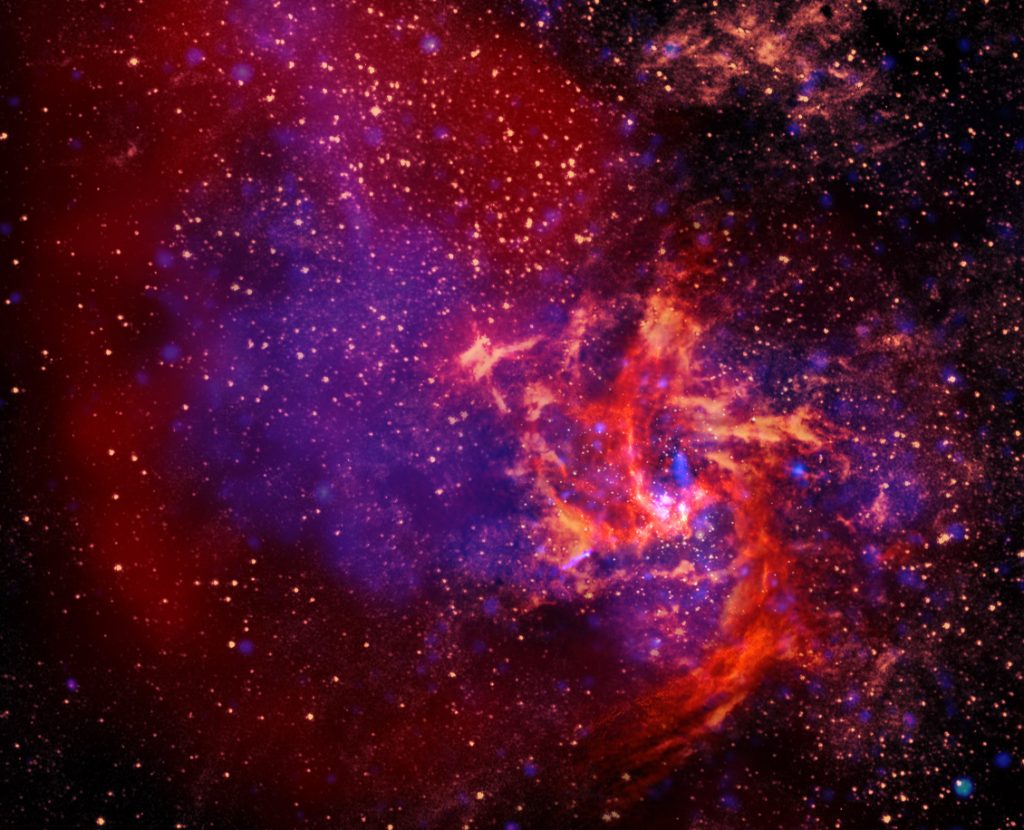
Sagittarius A
The center of our Milky Way Galaxy is anchored by a black hole that is nearly 5 million times...
Read more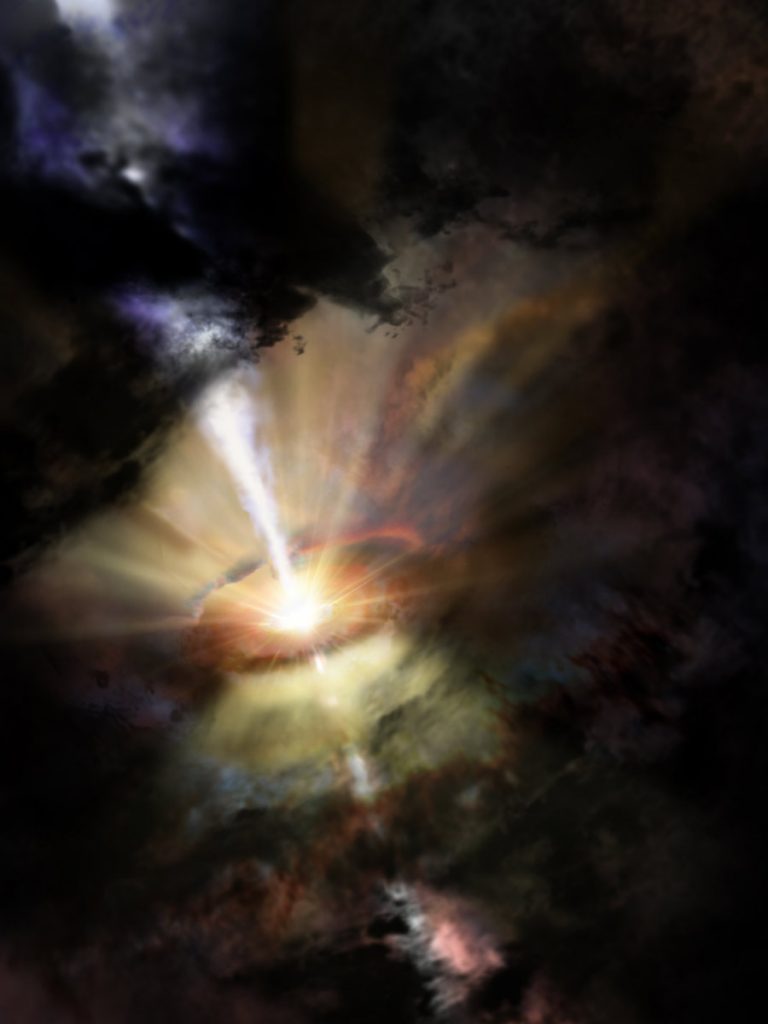
Inflow, Outflow Cycle of Gas Near Black Hole
Artist impression of Abell 2597 showing the central supermassive black hole expelling cold, molecular gas -- like the pump...
Read more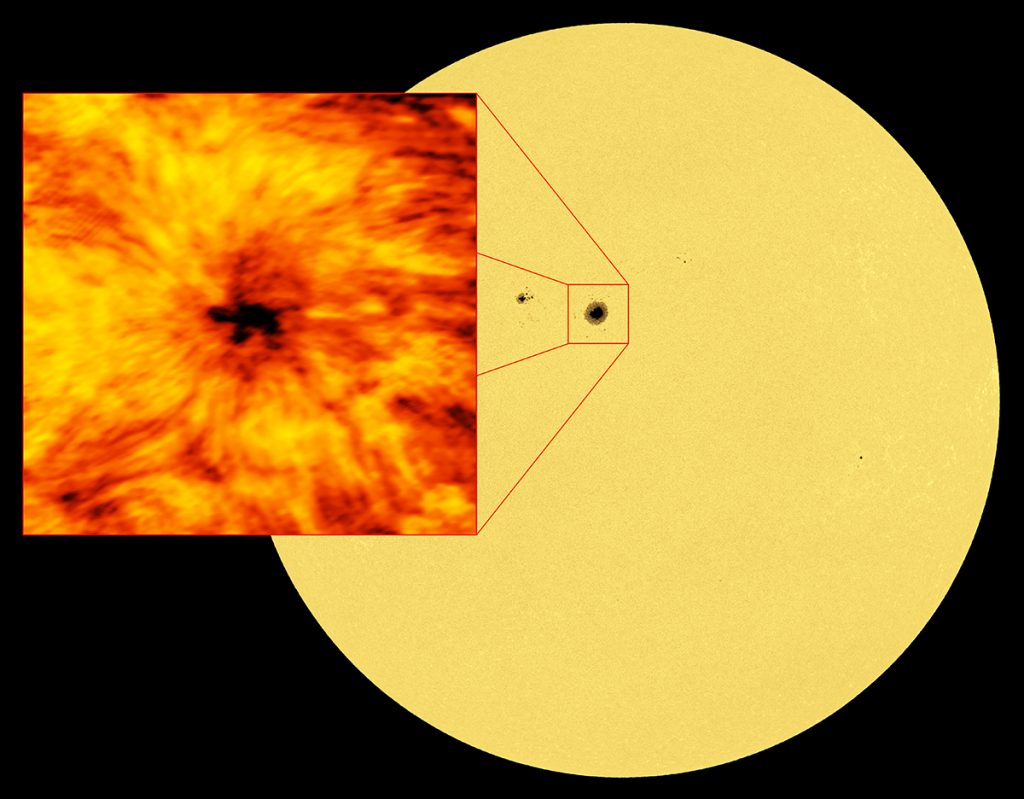
ALMA Spies Sunspots
This image of the entire Sun was taken at a wavelength of 617.3 nanometers. Light at this wavelength originates...
Read more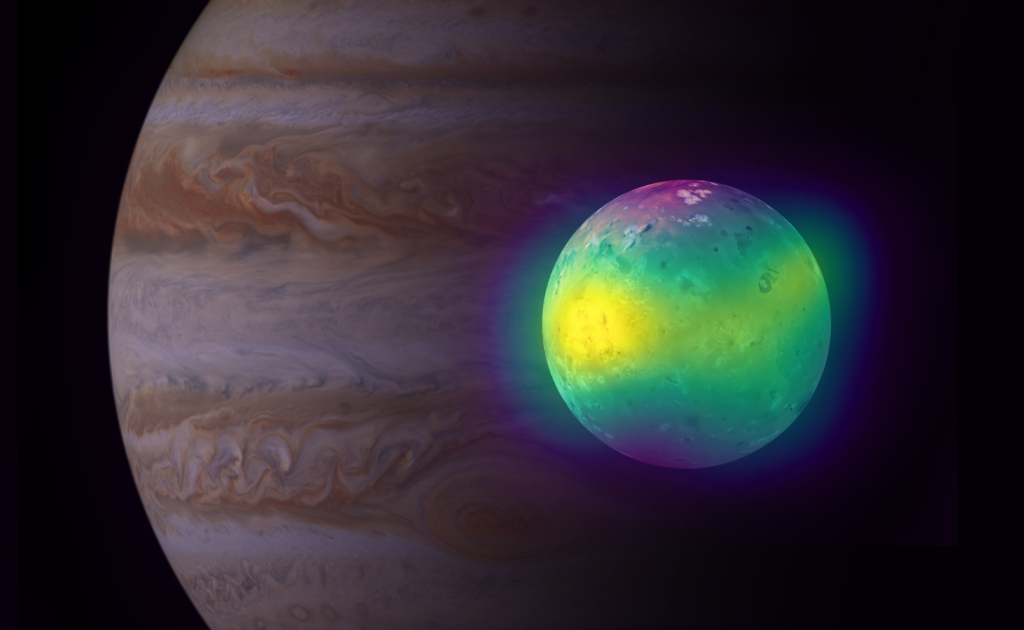
Volcanoes on Io
Composite image showing Jupiter's moon Io in radio (ALMA), and optical light (Voyager 1 and Galileo). The ALMA images...
Read more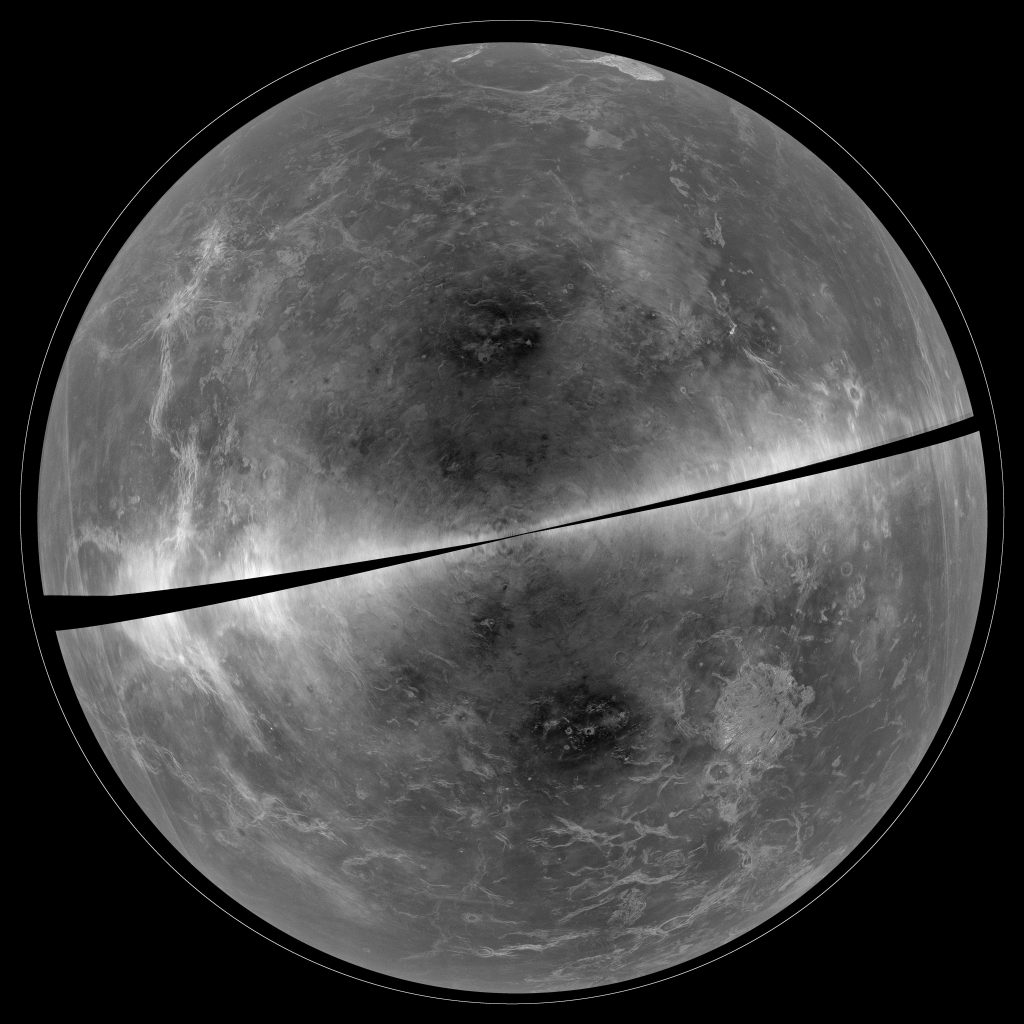
Venus as Seen in Radar with the GBT
A projection of the radar data of Venus collected in 2012. Striking surface features -- like mountains and ridges...
Read more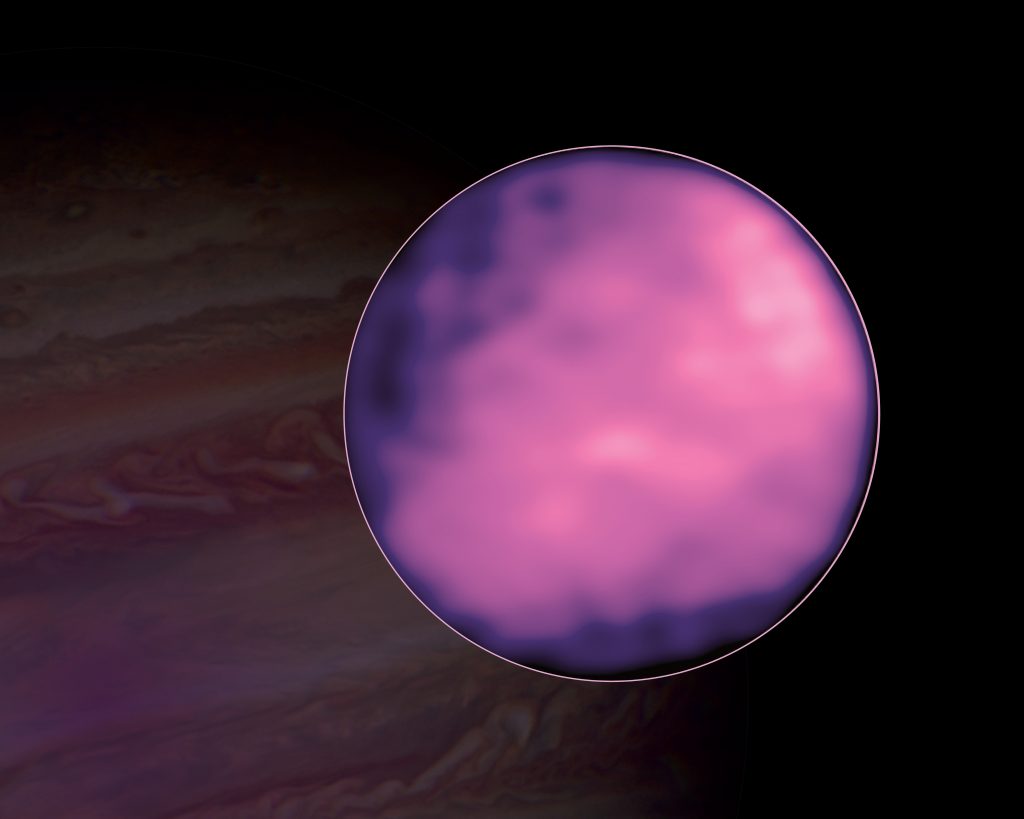
ALMA Observation of Europa
ALMA image of Jupiter's moon Europa. ALMA was able to map out thermal variations on its surface. Hubble image...
Read more
Heart of an Exploded Star Observed in 3-D
Remnant of Supernova 1987A as seen by ALMA. Purple area indicates emission from SiO molecules. Yellow area is emission...
Read more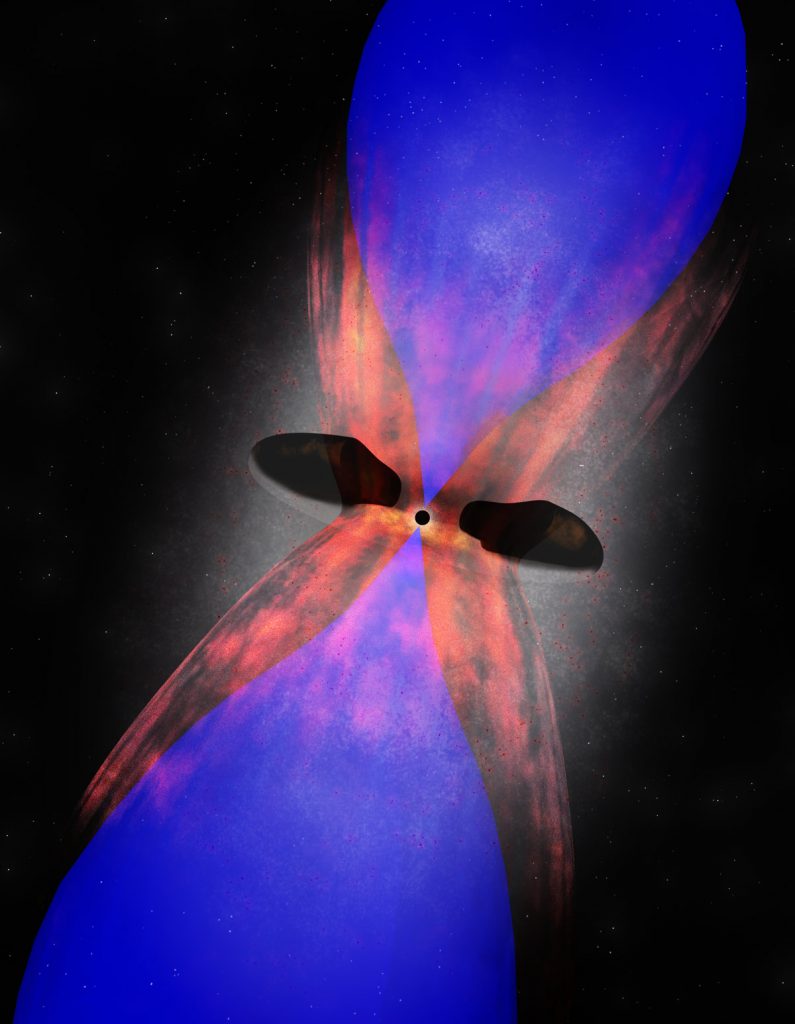
The Center of the Phoenix Cluster
Artist impression of galaxy at the center of the Phoenix Cluster. Powerful radio jets from the supermassive black hole...
Read more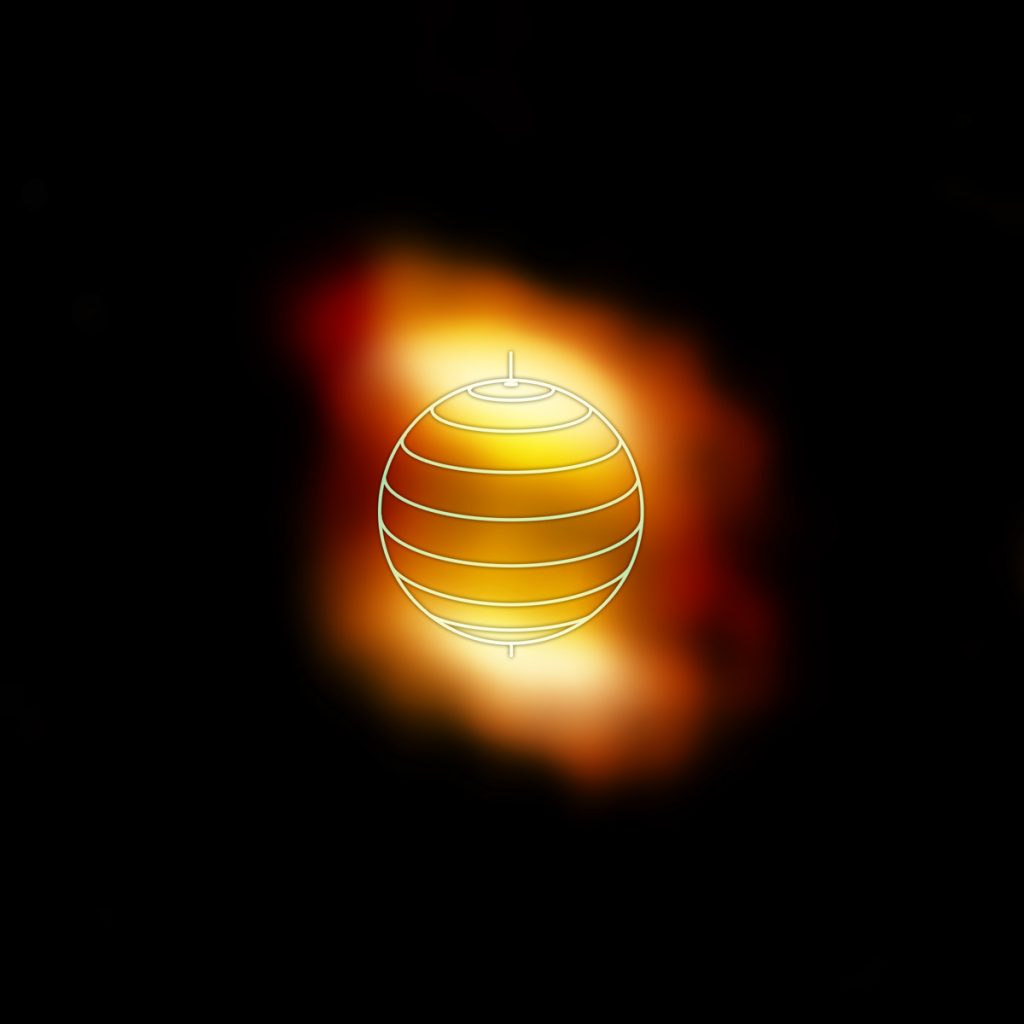
HC3N in Titan’s Lower Atmosphere
ALMA image of the distribution of the organic molecule HC3N at intermediate-to-lower elevations in the atmosphere of Saturn's moon...
Read more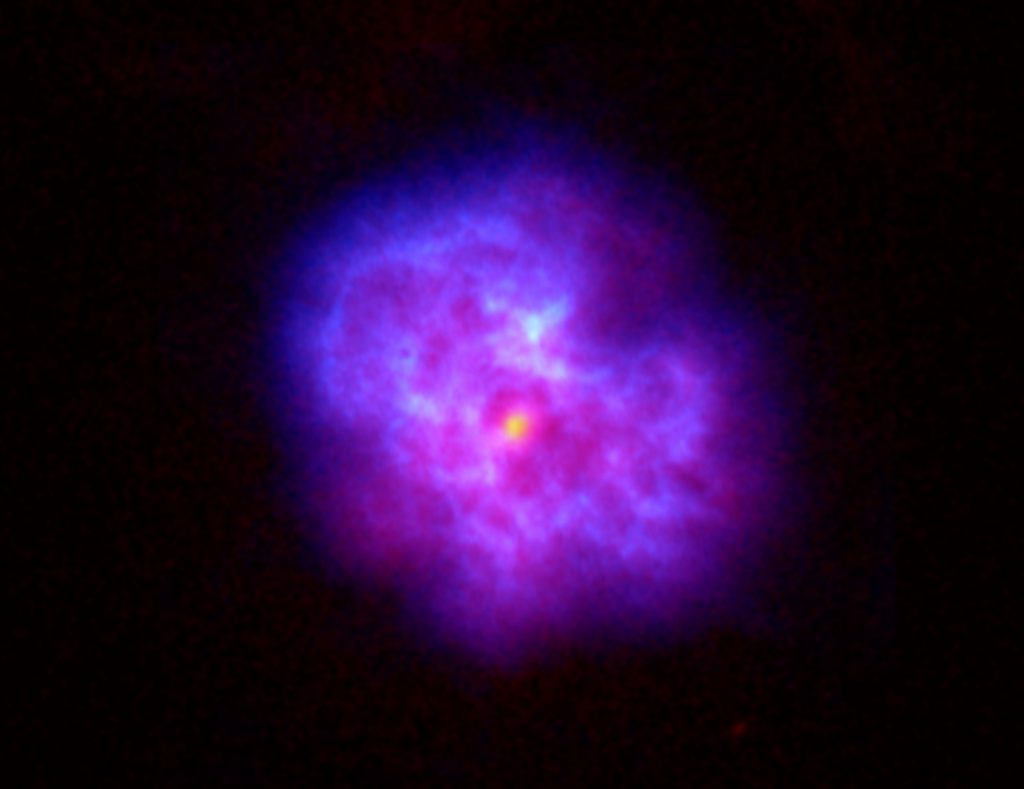
Pulsar Wind Nebula
This beautiful cloud of gas exploded outward when the star in its center went supernova and turned into a...
Read more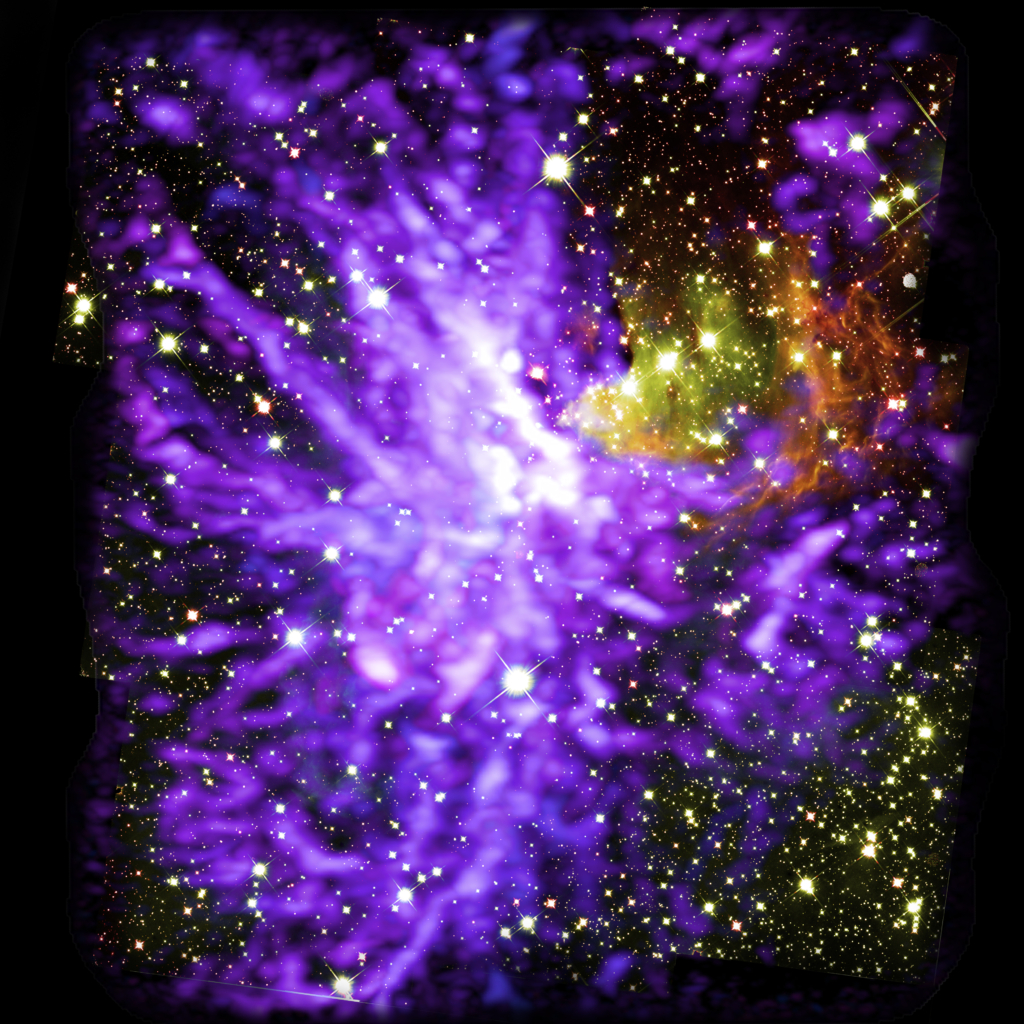
ALMA Mosaic Star Cluster
Image of star cluster G286.21+0.17, caught in the act of formation. This is a multiwavelength mosaic of more than...
Read more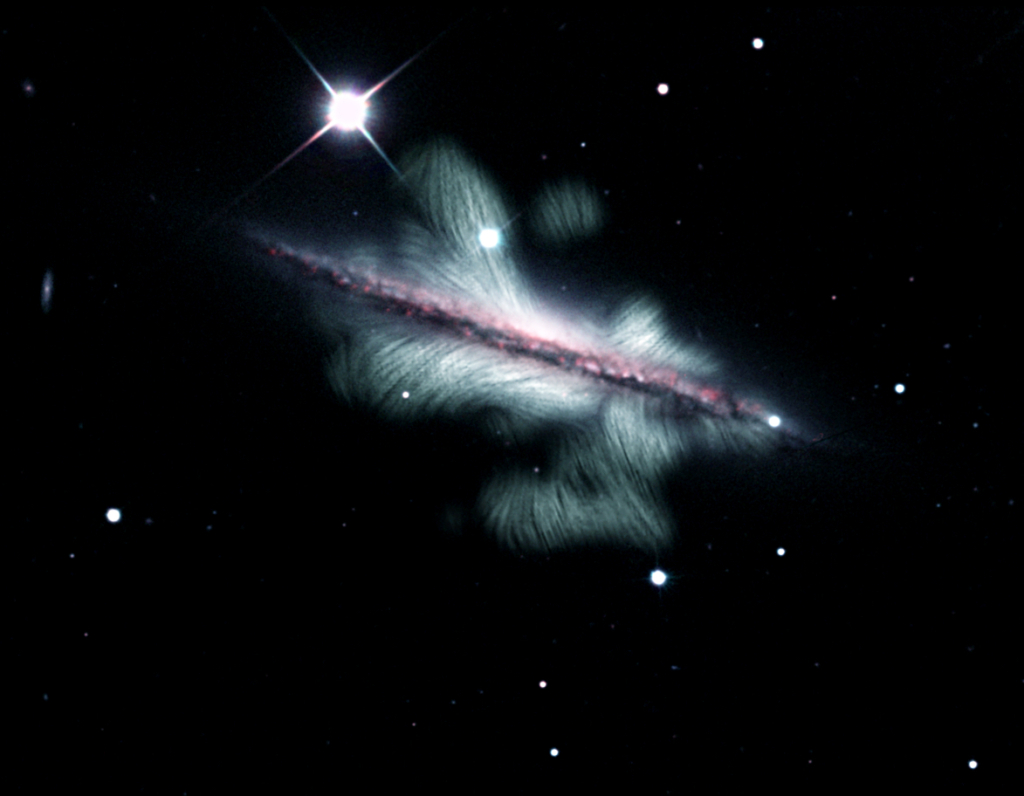
Magnetic Field of a Spiral Galaxy
An image from the VLA dramatically reveals the huge extent of the magnetic field of a spiral galaxy seen...
Read more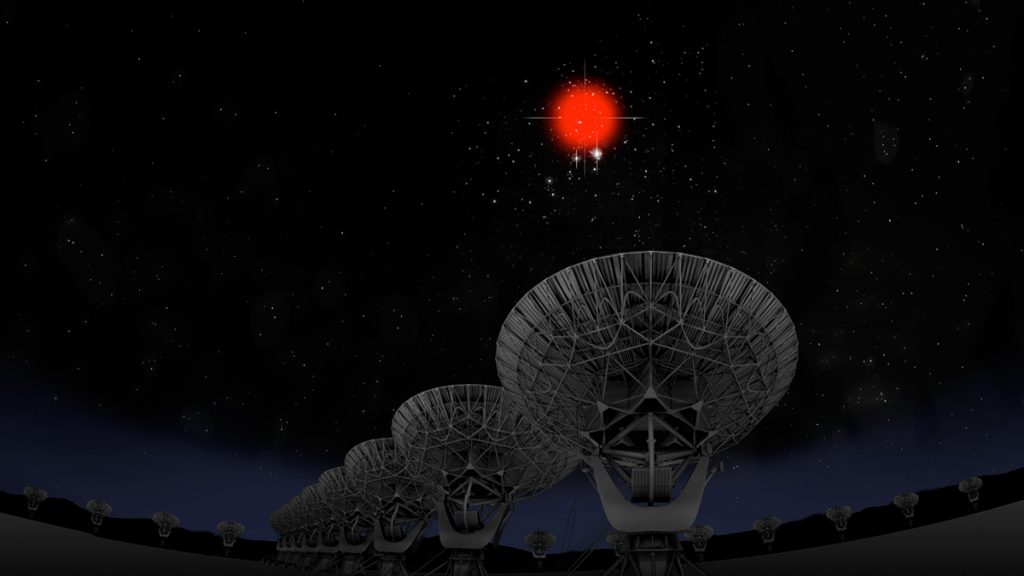
Fast Radio Burst tracked down by VLA
For the first time, astronomers pinpointed the location of a fast radio burst (FRB), which is a phenomena where...
Read more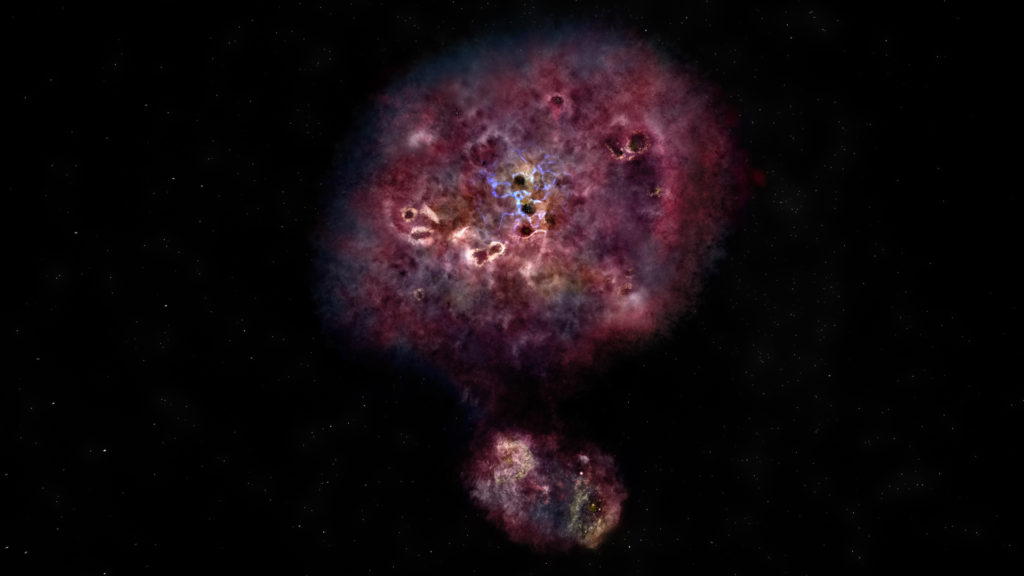
Artist impression of distant, dusty galaxy
Artist impression of what the distant, dusty galaxy called MAMBO-9 would look like in visible light. The galaxy has...
Read more
Artist impression of the merging galaxy NGC 6240
Artist impression of the merging galaxy NGC 6240.
Read more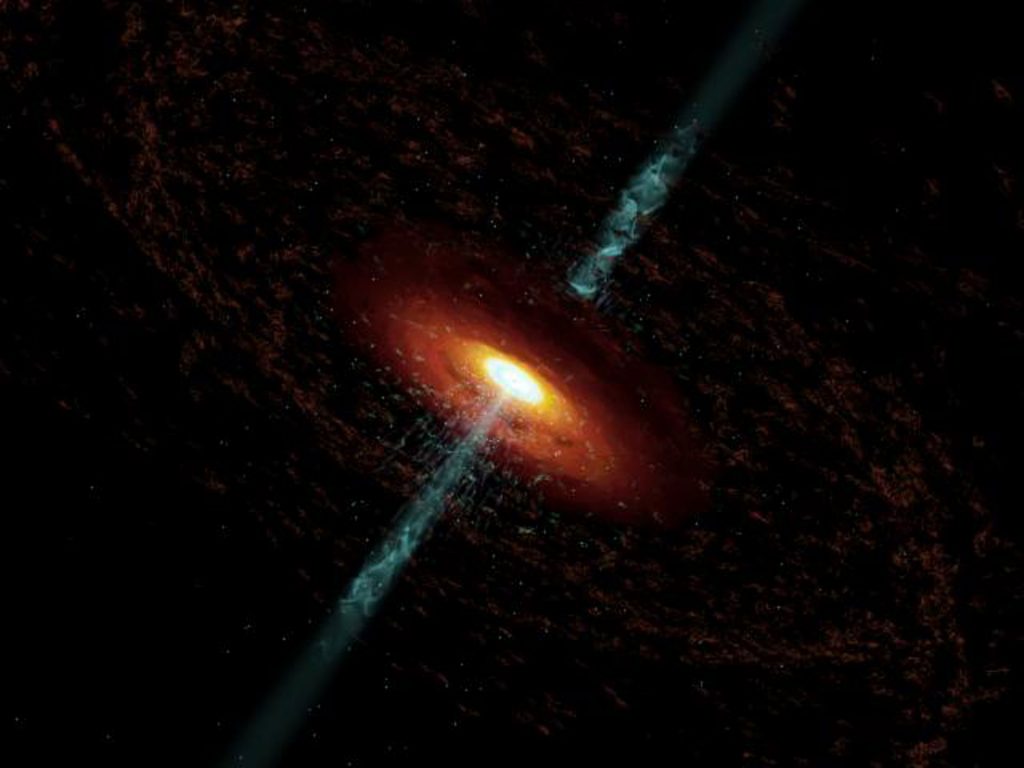
The Active Galactic Nucleus of 3C 120
Still image from an animation depicting the jets emitted by the black hole in galaxy 3C 120.
Read more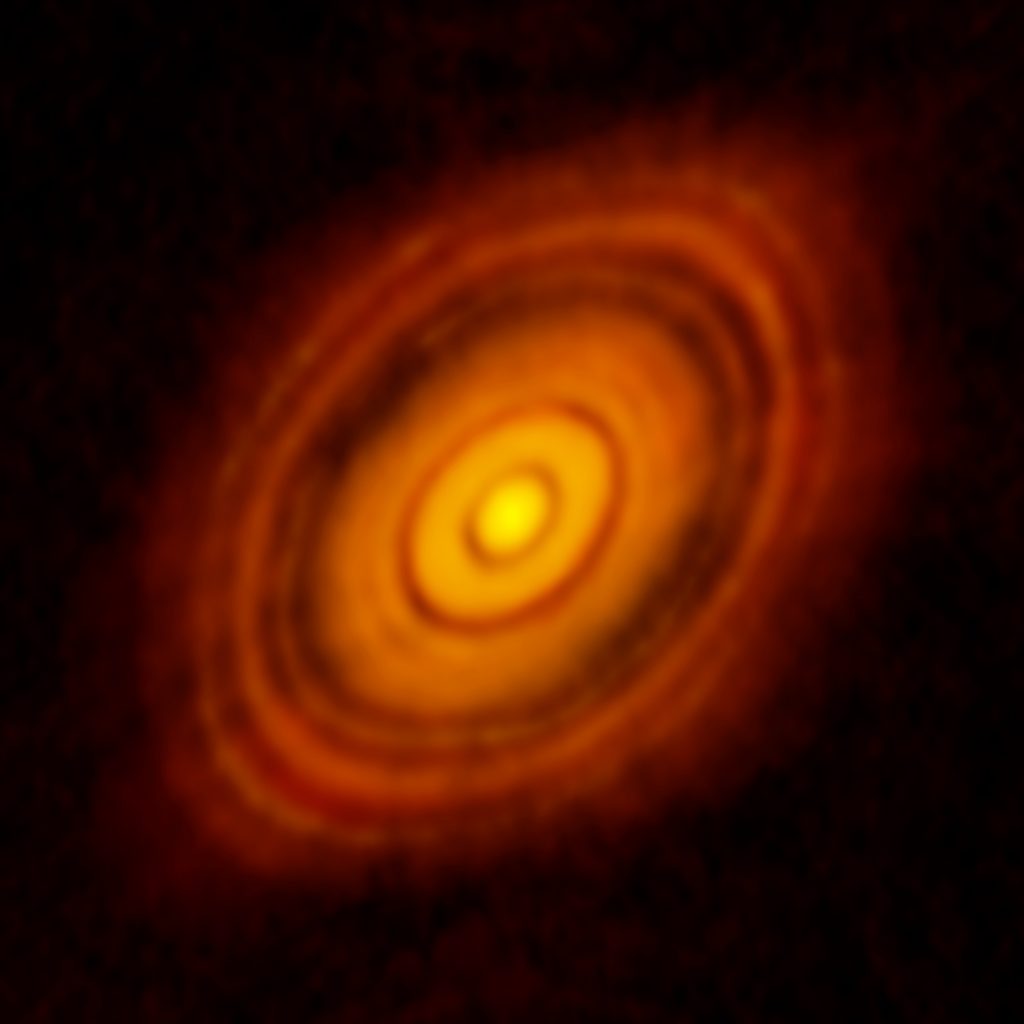
HL Tau: Birth of Planets Revealed in Astonishing Detail
ALMA image of the young star HL Tau and its protoplanetary disk. This best image ever of planet formation...
Read more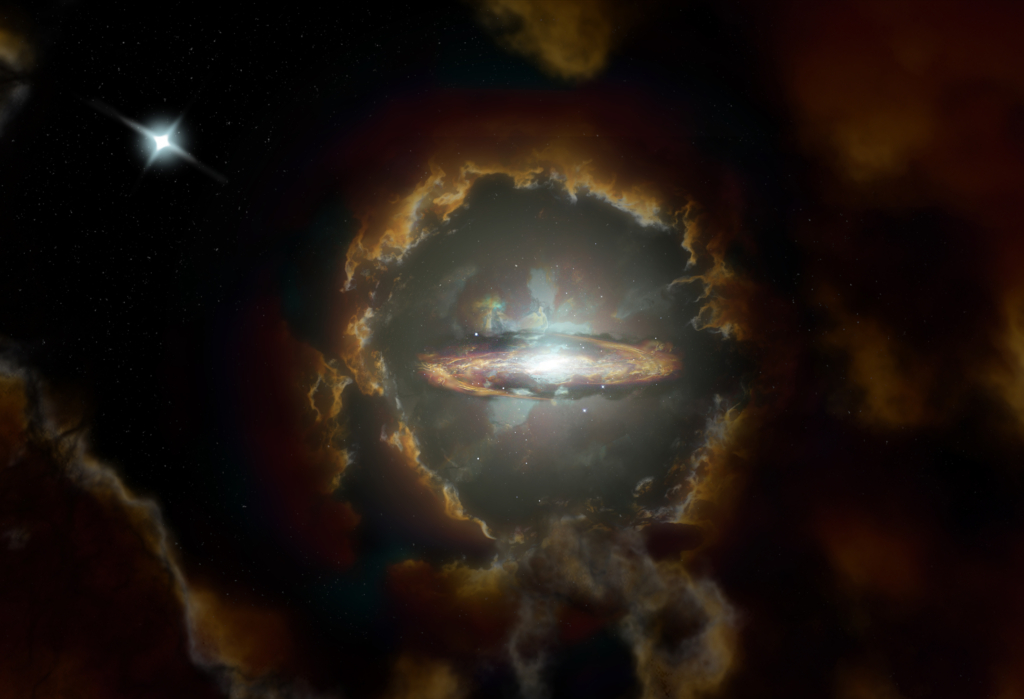
Wolfe Disk Artist Impression
Artist impression of the Wolfe Disk, a massive rotating disk galaxy in the early, dusty universe. The galaxy was...
Read more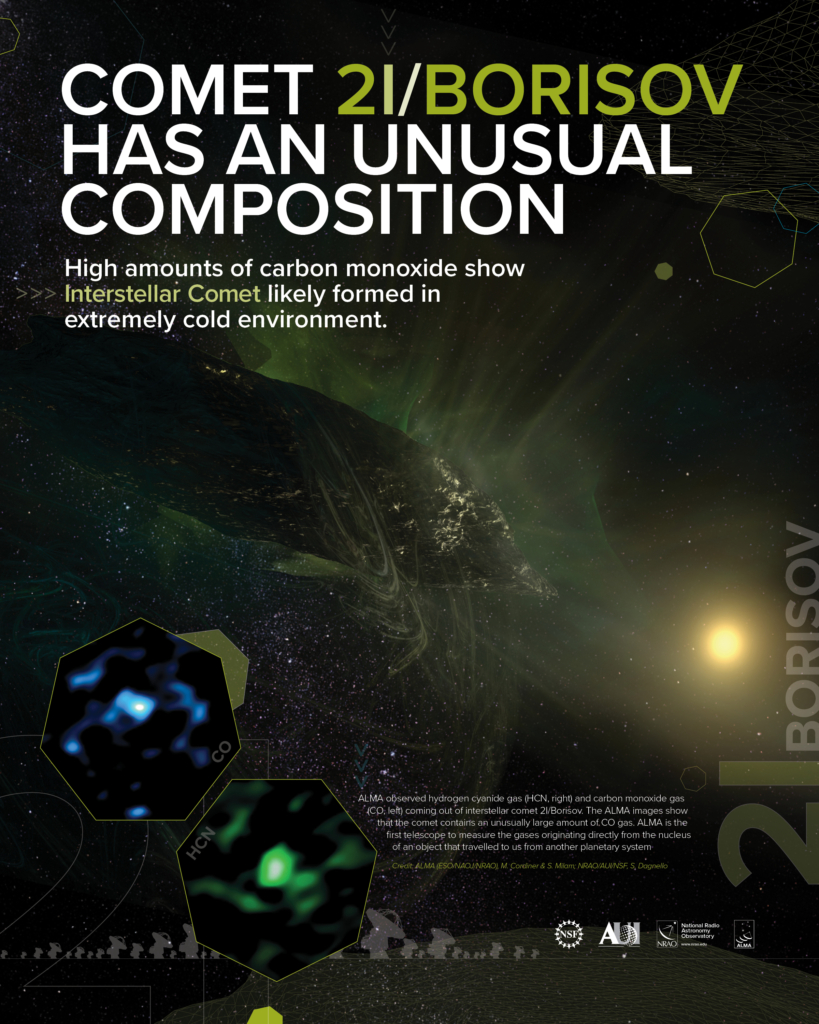
Comet 2I/Borisov Has an Unusual Composition
Interstellar comet 2I/Borisov, a mysterious visitor from the depths of space, is the first conclusively identified comet from another...
Read more
A Spooky View of Galactic Gas
This image may look spooky to you, but astronomers see a galaxy. It was captured by the Very Large...
Read more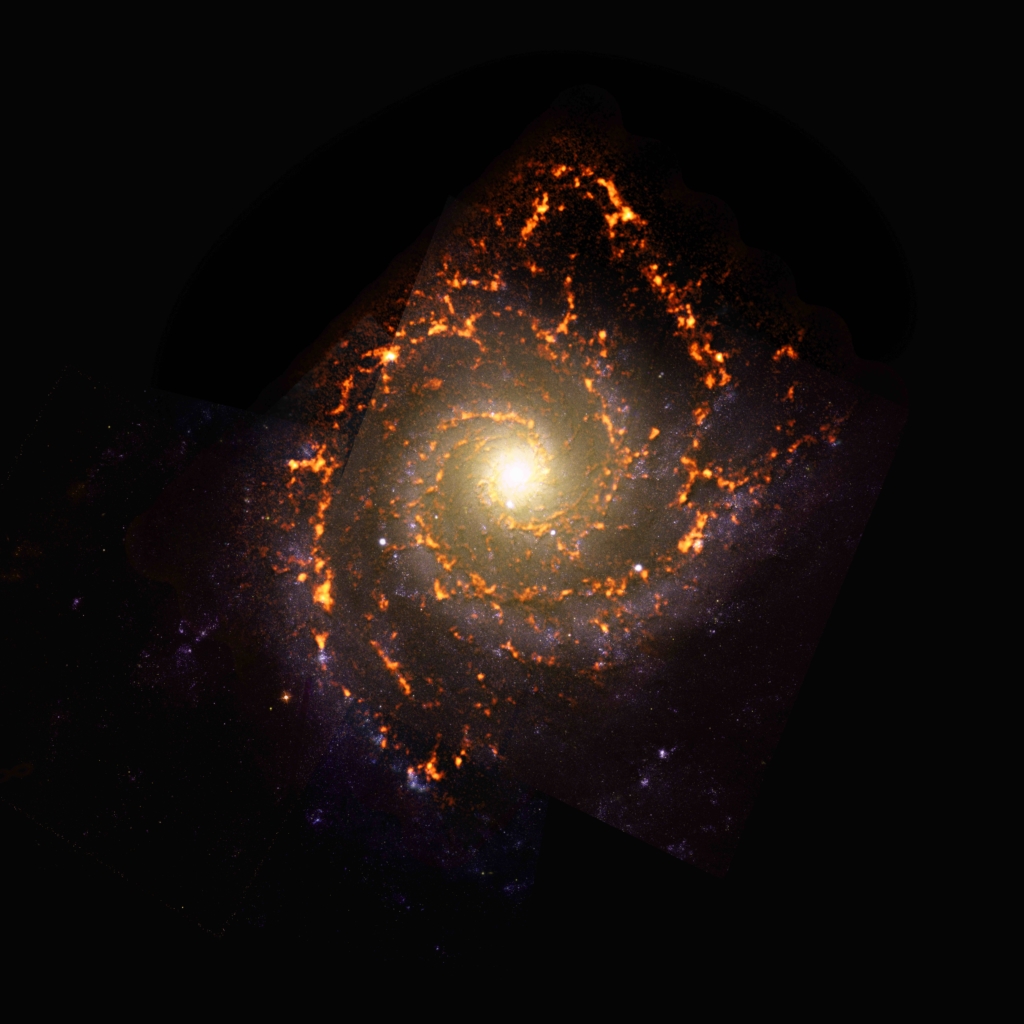
PHANGS-ALMA Survey: NGC0628
While conducting a census of nearly 100 galaxies in the nearby Universe, the PHANGS survey observed NGC0628, a galaxy...
Read more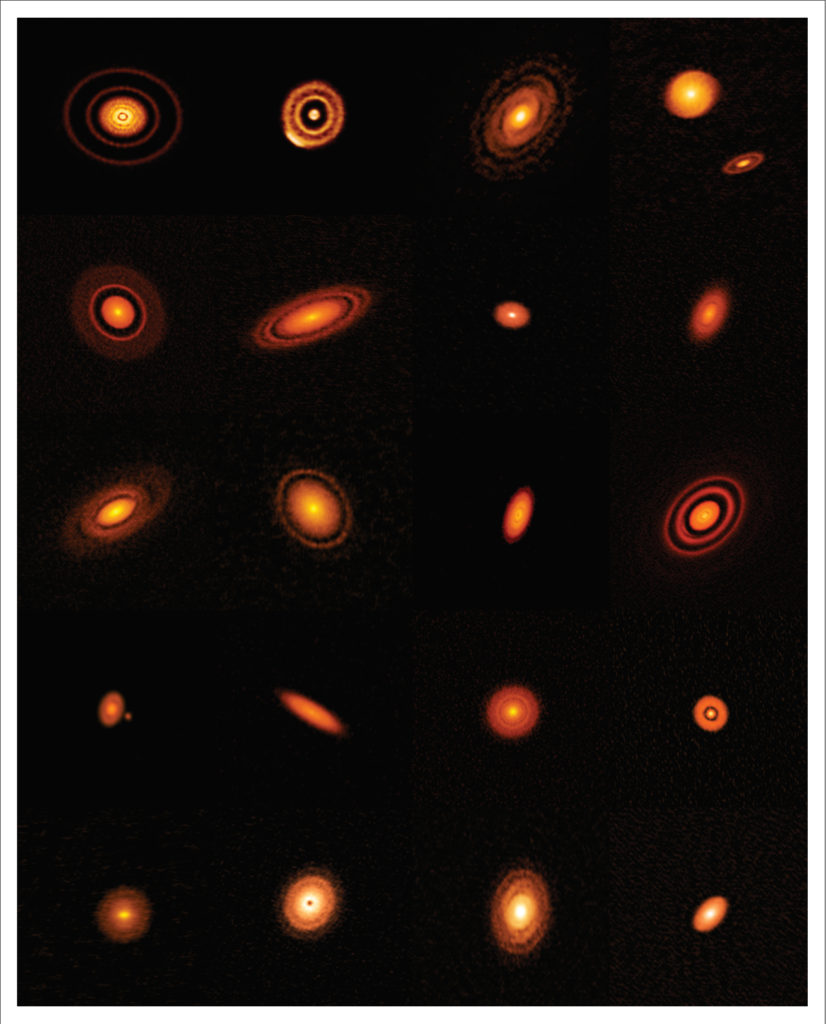
Twenty Protoplanetary Disks Imaged by ALMA
A team of astronomers has conducted ALMA‘s first large-scale, high-resolution survey of protoplanetary disks. Known as the Disk Substructures...
Read more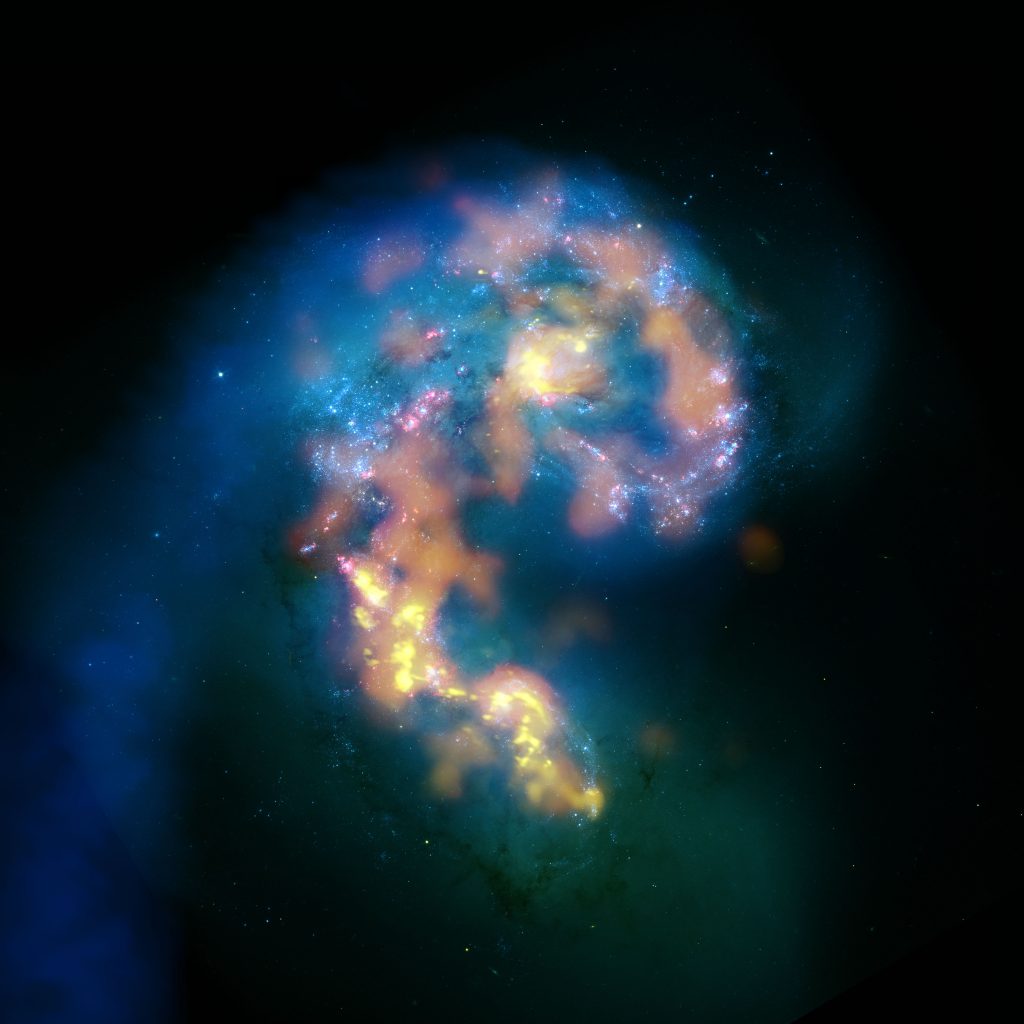
ALMA First Image
In this composite image of the merging cores of the Antennae Galaxies, optical (white and pink), radio (blue) and...
Read more
Megamasers and Cosmology
Artist's conception illustrating a disk of water-bearing gas orbiting the supermassive black hole at the core of a distant...
Read more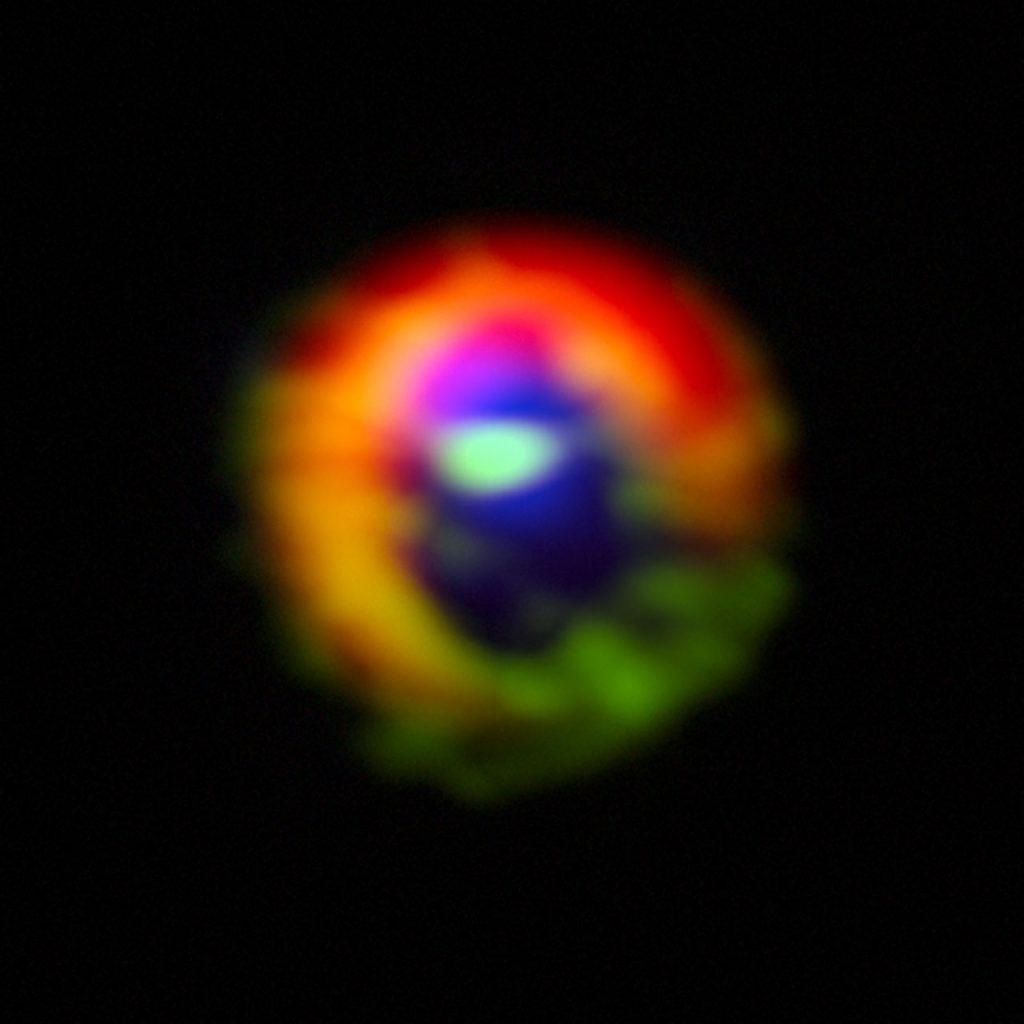
ALMA Sees a Baby Solar System
Observations made with the Atacama Large Millimeter/submillimeter Array (ALMA) telescope of the disc of gas and cosmic dust around...
Read more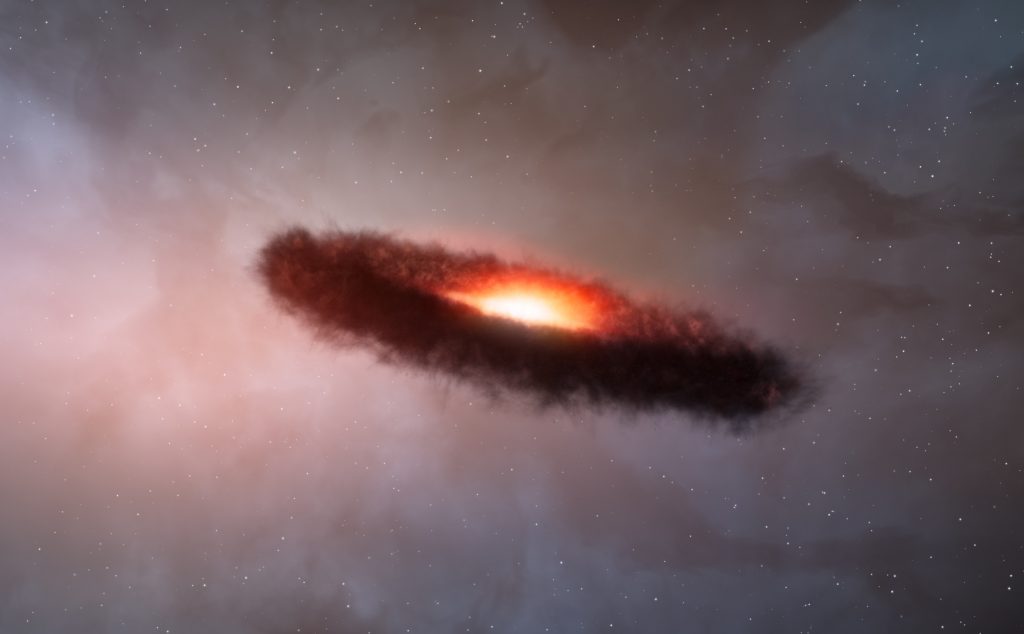
Artist’s impression of the disc of dust and gas around a brown dwarf
This artist’s impression shows the disc of gas and cosmic dust around a brown dwarf. Rocky planets are thought...
Read more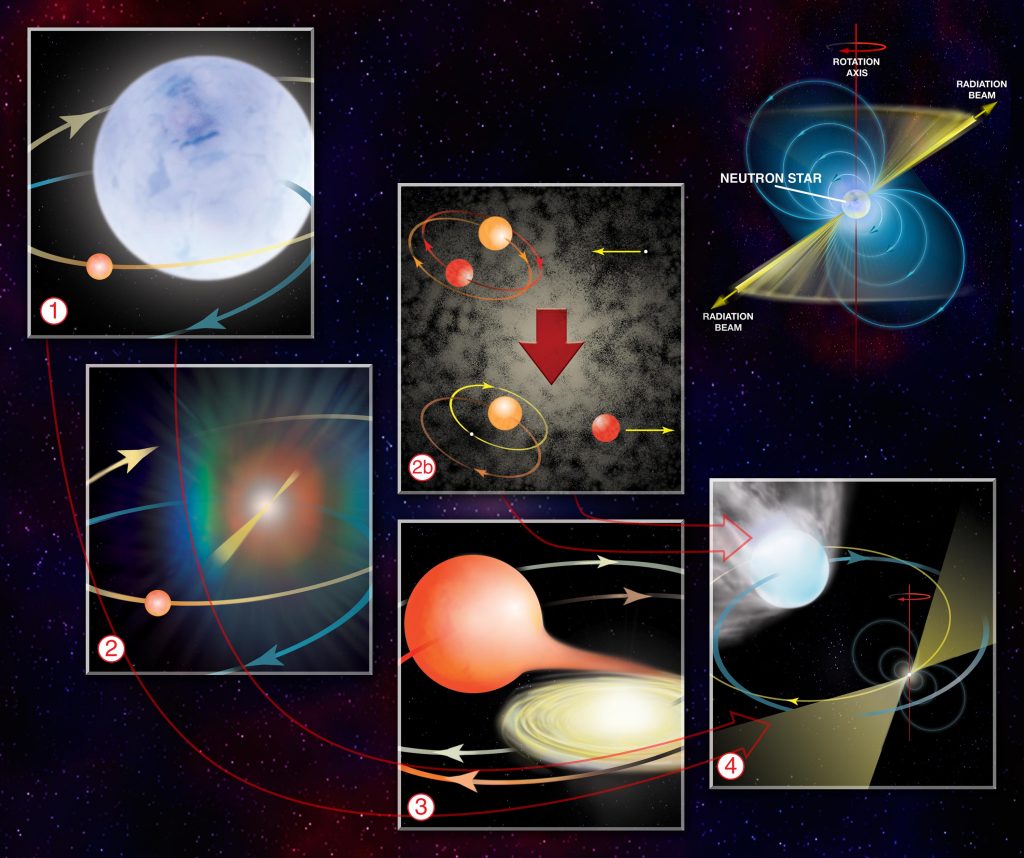
How to Make a Millisecond Pulsar
The diagram outlines each step needed to create a pulsar with a superfast spin. The Standard Scenario (1-4): 1. A...
Read more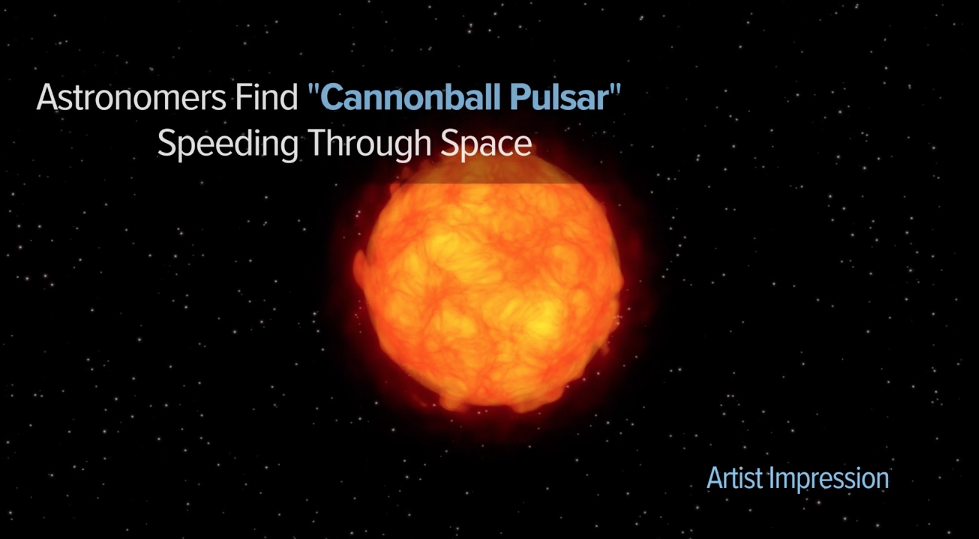
Pulsar Escaping its Supernova Birthplace
Artist's animation of Pulsar J0002+6216 speeding away from its birthplace and escaping the shell of debris from the supernova...
Read more
PHANGS-ALMA Survey: NGC1385
During a survey of nearly 100 galaxies in the nearby Universe, the PHANGS team observed NGC1385, a galaxy featuring...
Read more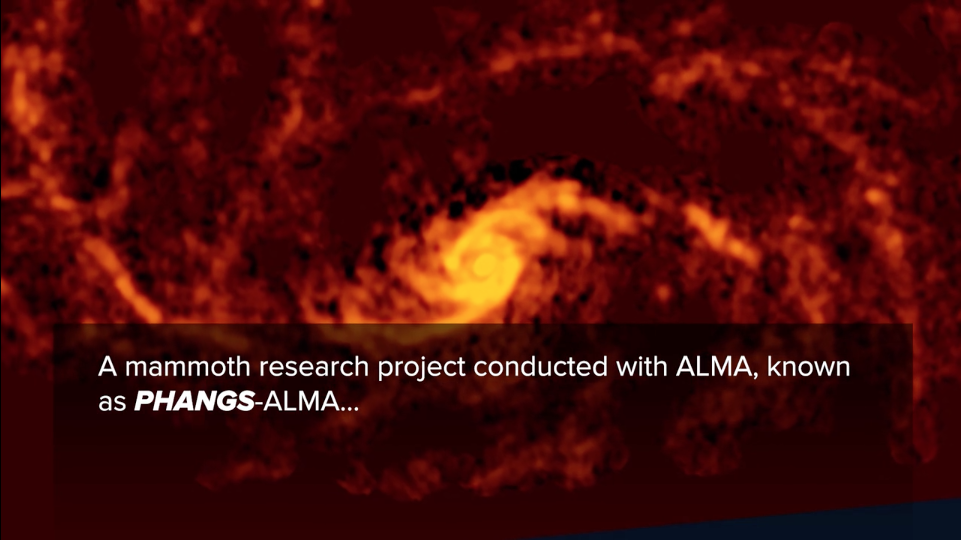
PHANGS-ALMA
ALMA is revealing new insights into the relationship between star-forming clouds and their host galaxies.
Read more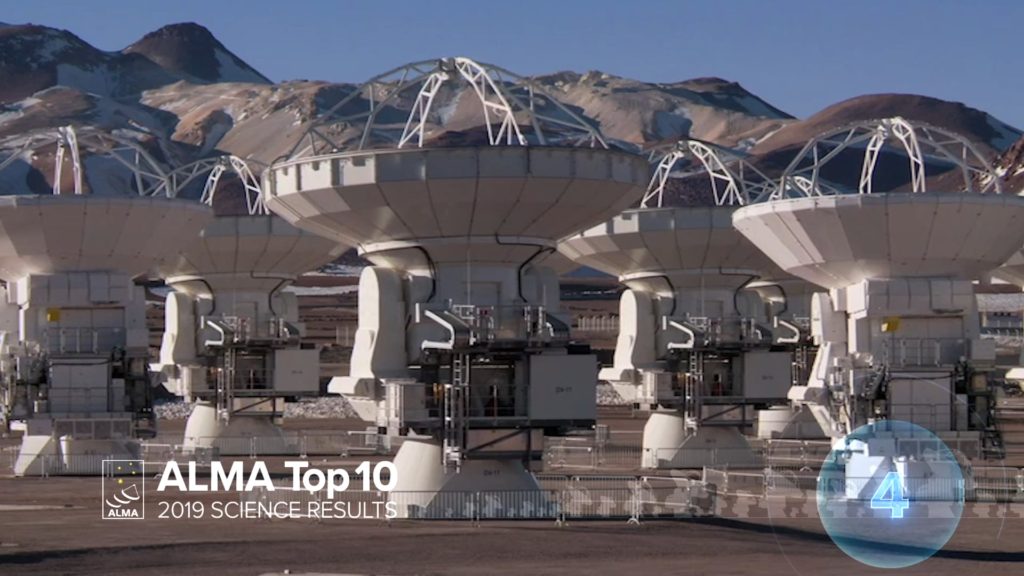
04 – ALMA Top 10 – PHANGS: A New Survey Unravels the Relationship between Star-forming Clouds and their Host Galaxies.
Galaxies come in a wide variety of shapes and sizes. Some of the most significant differences among galaxies, however,...
Read more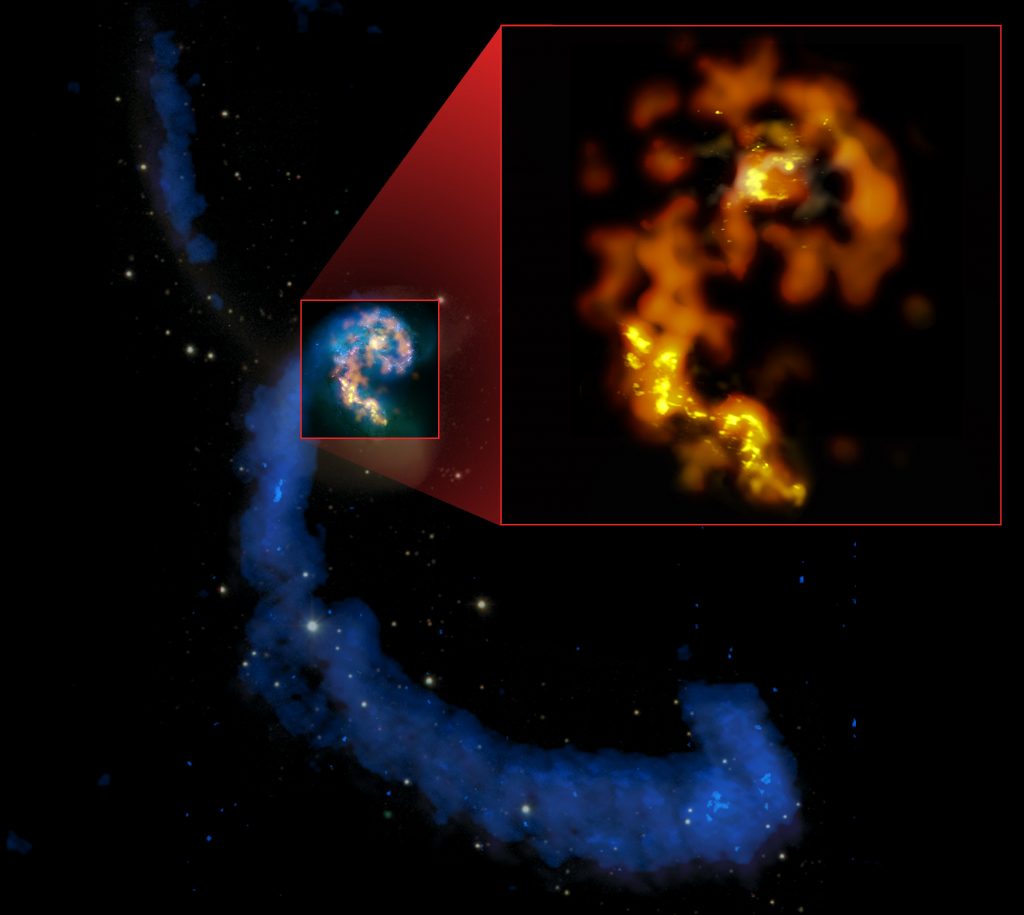
Antennae Galaxies
Hard to believe that this was once a pair of spiral galaxies. Undergoing a violent merger, the well-named Antennae...
Read more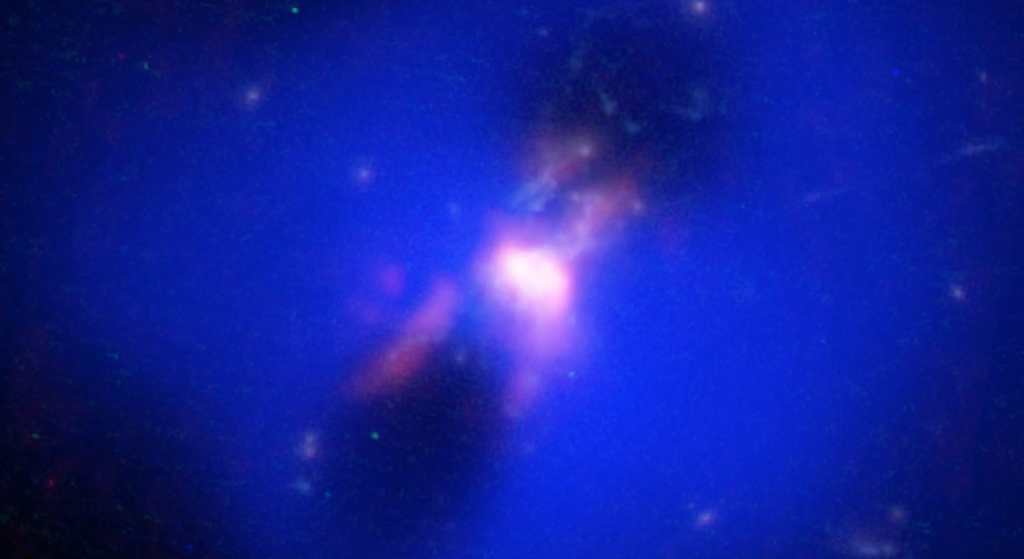
ALMA Discovers Unexpected Trove of Star-forming Gas in Phoenix Cluster
Video explaining the complex relationship between a supermassive black hole and its host galaxy in the Phoenix Cluster, as...
Read more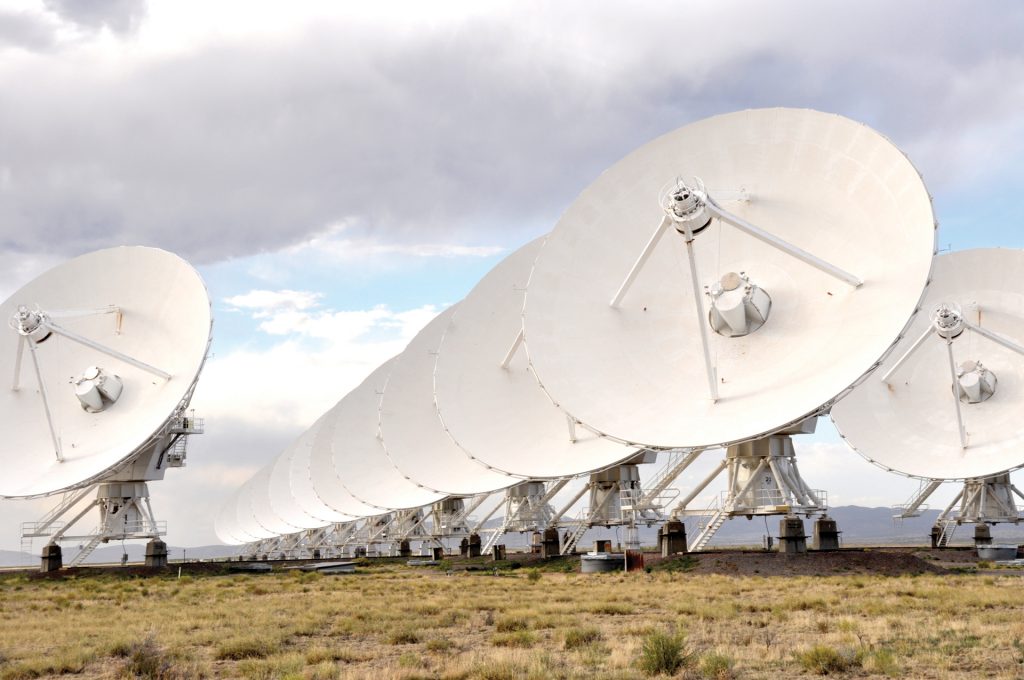
Lining up the VLA antennas
There are 27 dish antennas within the Very Large Array that are identical 25-meter telescopes working together as one....
Read more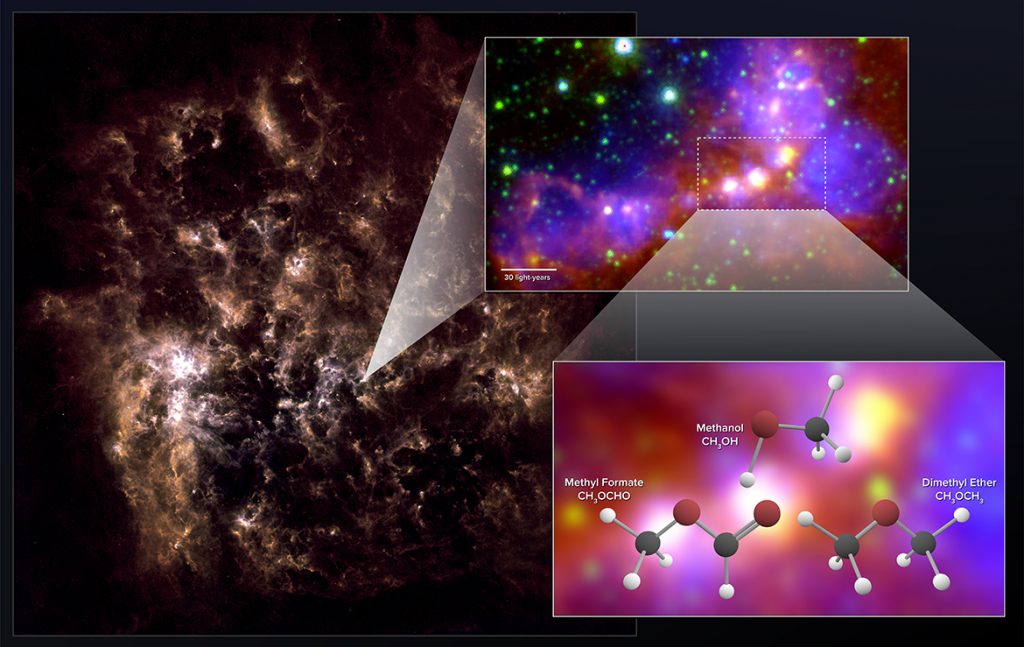
Stellar Embryos in Nearby Dwarf Galaxy Contain Surprisingly Complex Organic Molecules
Astronomers using ALMA have uncovered chemical “fingerprints” of methanol, dimethyl ether, and methyl formate in the Large Magellanic Cloud....
Read more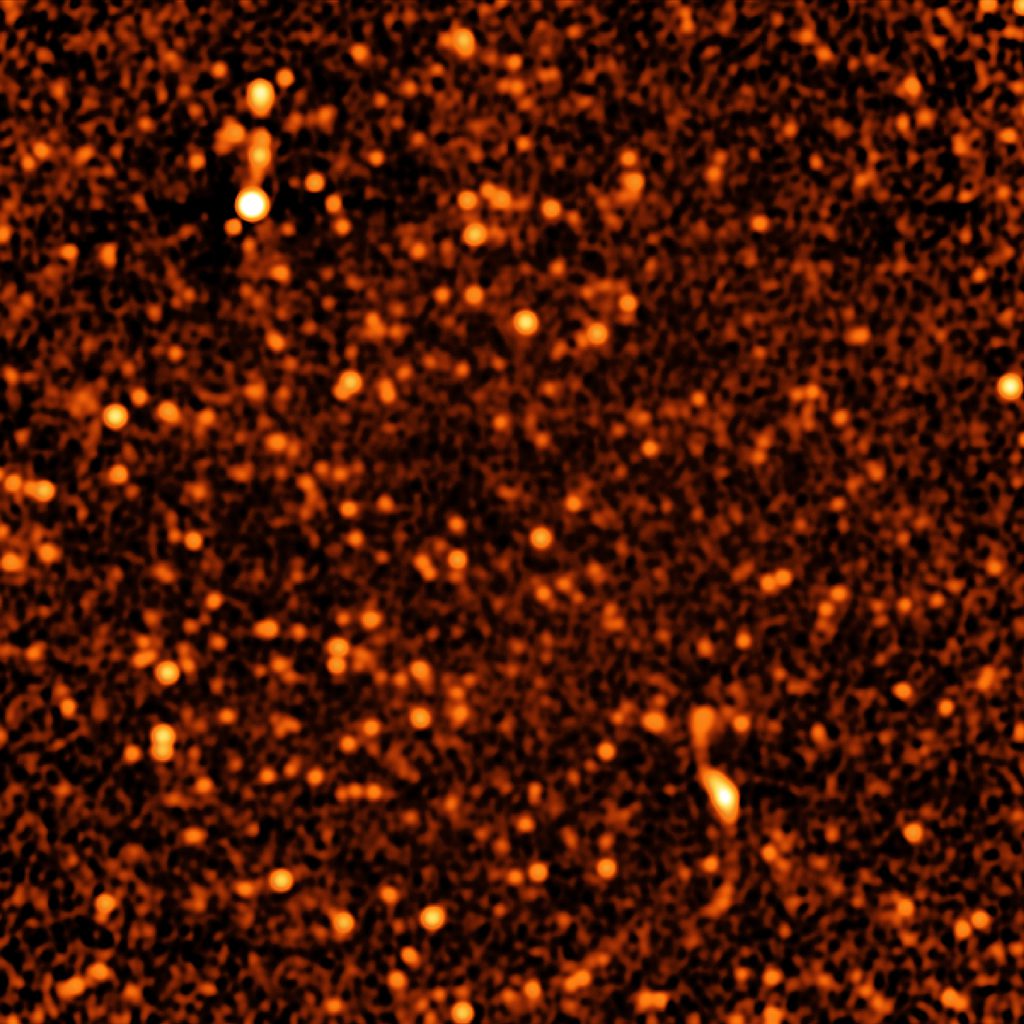
VLA Deep Field
Staring at a small patch of sky for more than 50 hours with the ultra-sensitive Karl G. Jansky Very...
Read more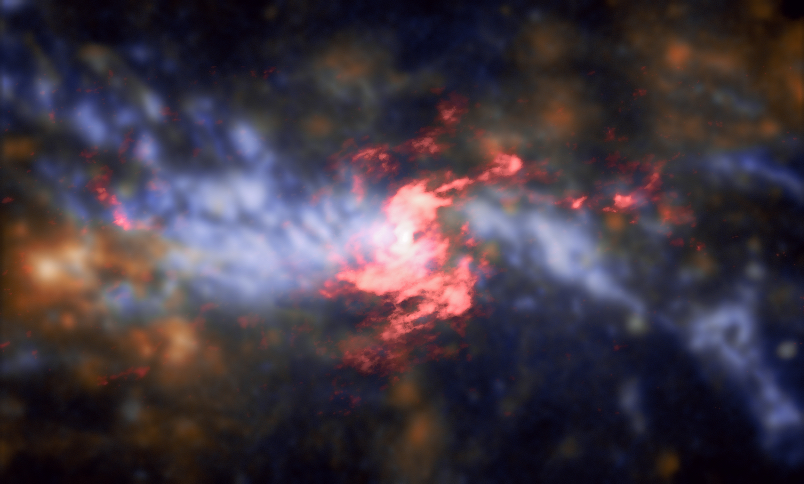
Glowing Core of Brilliant Galaxy NGC 5643
This composite image shows the center of a galaxy named NGC 5643. This galaxy is located 55 million light-years...
Read more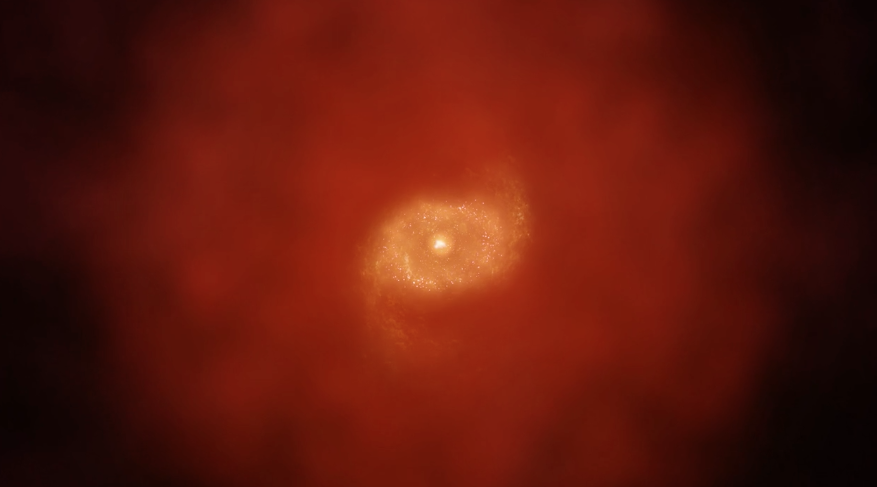
Milky Way-Like Galaxies in the Early Universe
Astronomers using ALMA have directly observed a pair of Milky Way-like galaxies seen as they appeared billions of years...
Read more
Illustration of a High Redshift Galaxy
Artist impression of a progenitor of Milky Way-like galaxy in the early universe with a background quasar shinning through...
Read more
Long Wavelength Demonstrator Array
The Long Wavelength Array is a collection of 256 antennas stationed at the Very Large Array site outside Magdalena,...
Read more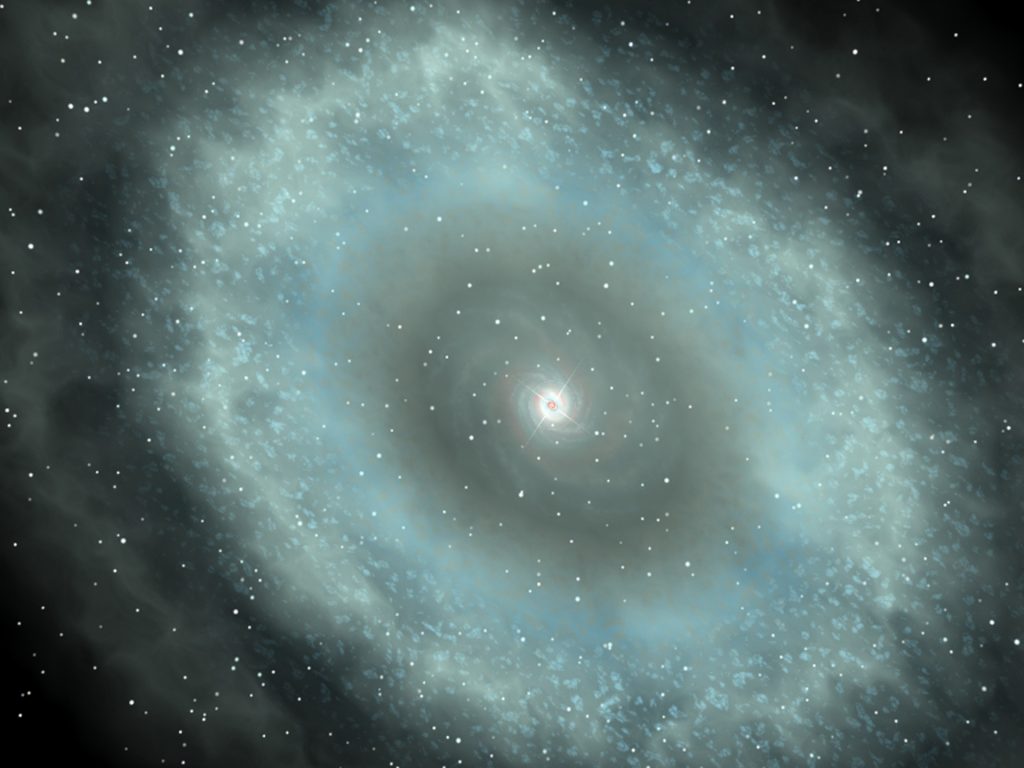
A Disk of Starforming Gas
Artist's conception of the disk of star-forming gas around the center of the galaxy hosting the quasar PSS J2322+1944....
Read more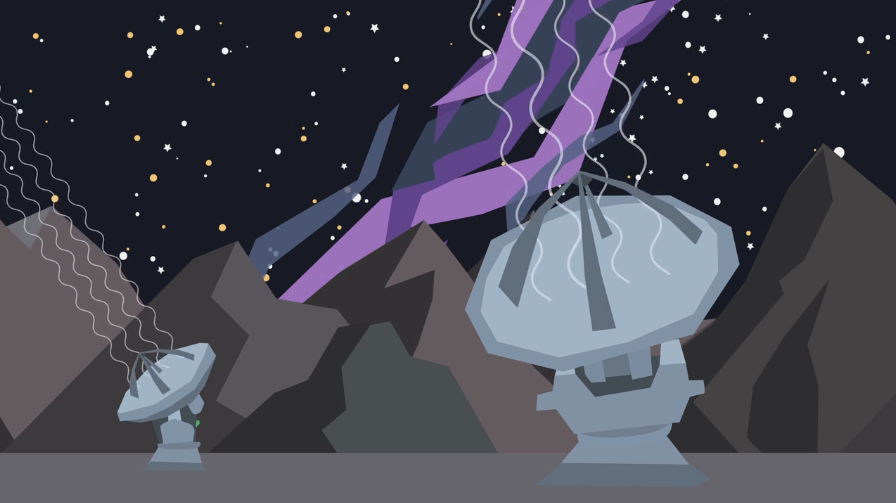
#WAWUA – ALMA Observes the Invisible Universe
With colorful artwork and clever animations, these short videos delve into topics that explain the fundamentals of radio astronomy,...
Read more
ngVLA Artist Impressions: Time Domain, Cosmology, Physics Sketches
In June of 2017, NRAO invited four artists to a conference at New Mexico Institute of Mining and Technology...
Read more
Students Use the 40-foot
The 40-foot telescope in Green Bank, West Virginia is used as an educational instrument.
Read more
Orphan GRB Discovered with VLASS
Series of radio images of FIRST J1419+3940 from 1993 to 2017 show its slow fade. Astronomers comparing data from...
Read more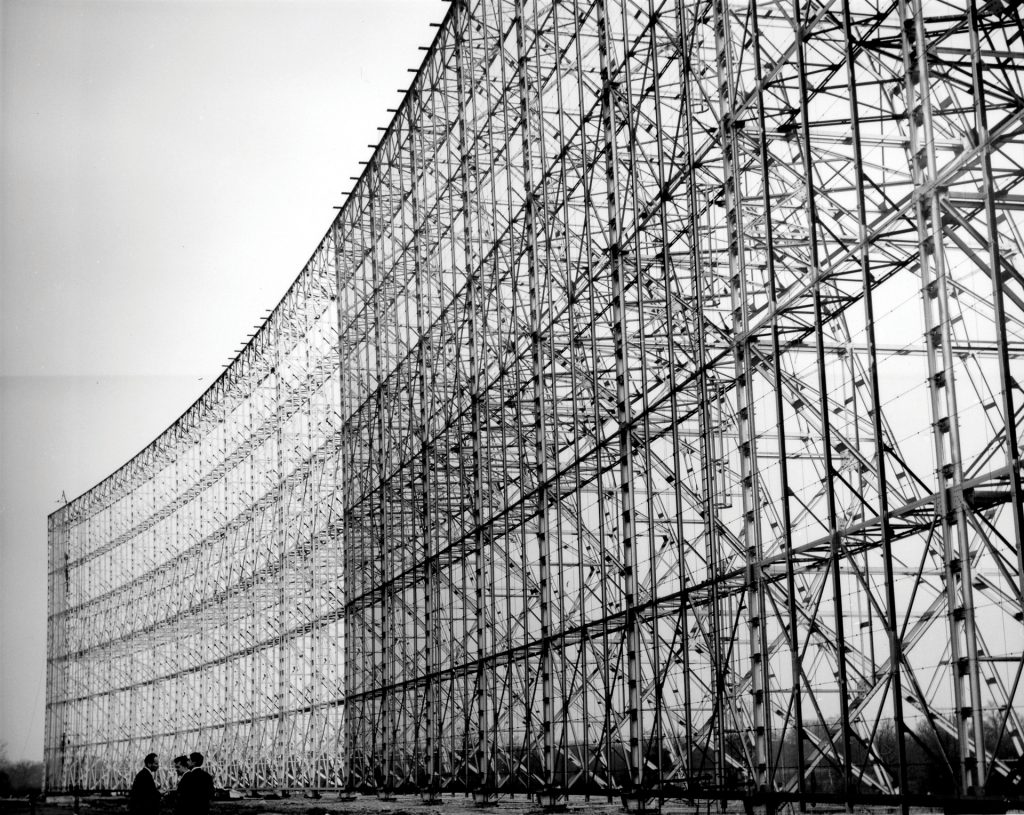
Giant Antenna in Nancay, France
In Nancay, France looms this enormous radio telescope. This portion of it is a section of a sphere that...
Read more
#WAWUA – ALMA and the Cold Interstellar Clouds
With colorful artwork and clever animations, these short videos delve into topics that explain the fundamentals of radio astronomy,...
Read more
ALMA’s Radio Wave Path
In this animation, the radio waves received from objects in space reflect off of ALMA antenna dishes and come...
Read more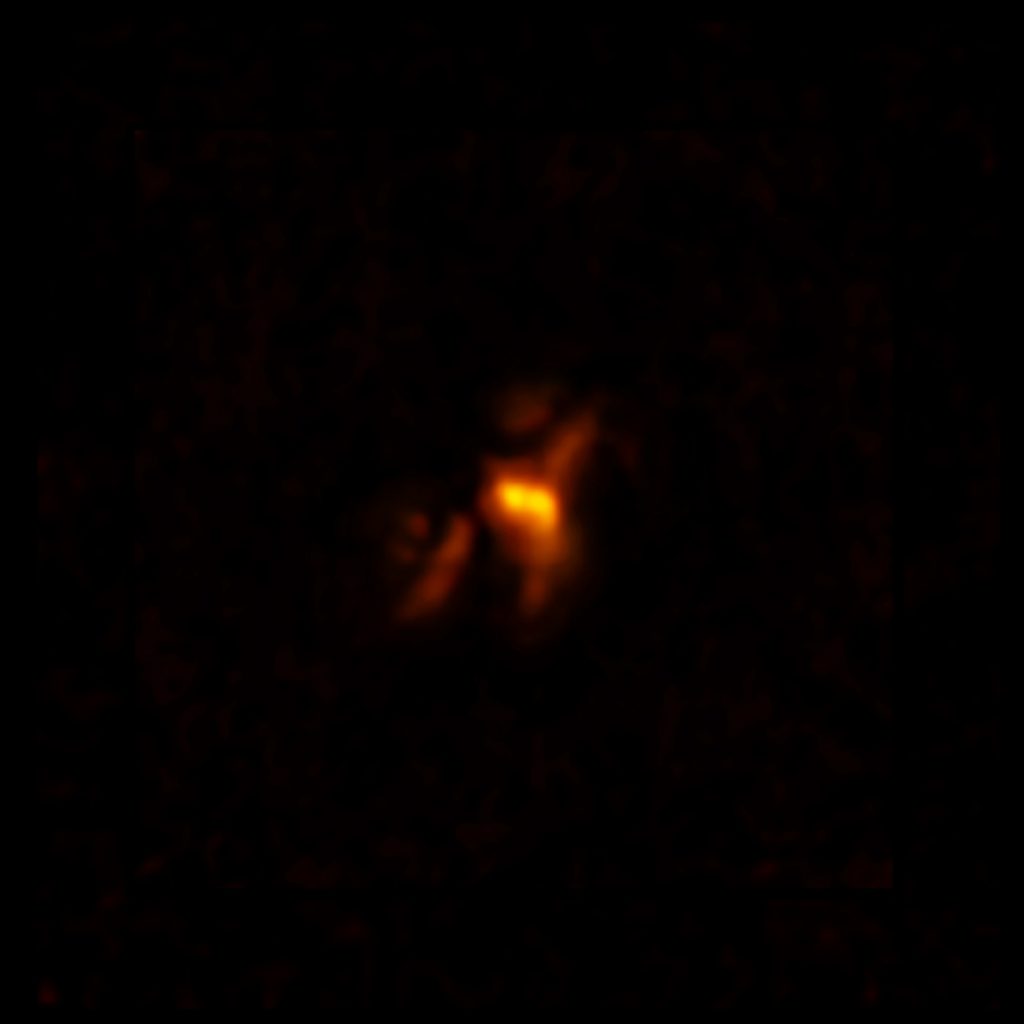
ALMA Sees Into the Heart of the Phoenix Cluster
ALMA image of cold molecular gas at the heart of the Phoenix Cluster. The filaments extending from the center...
Read more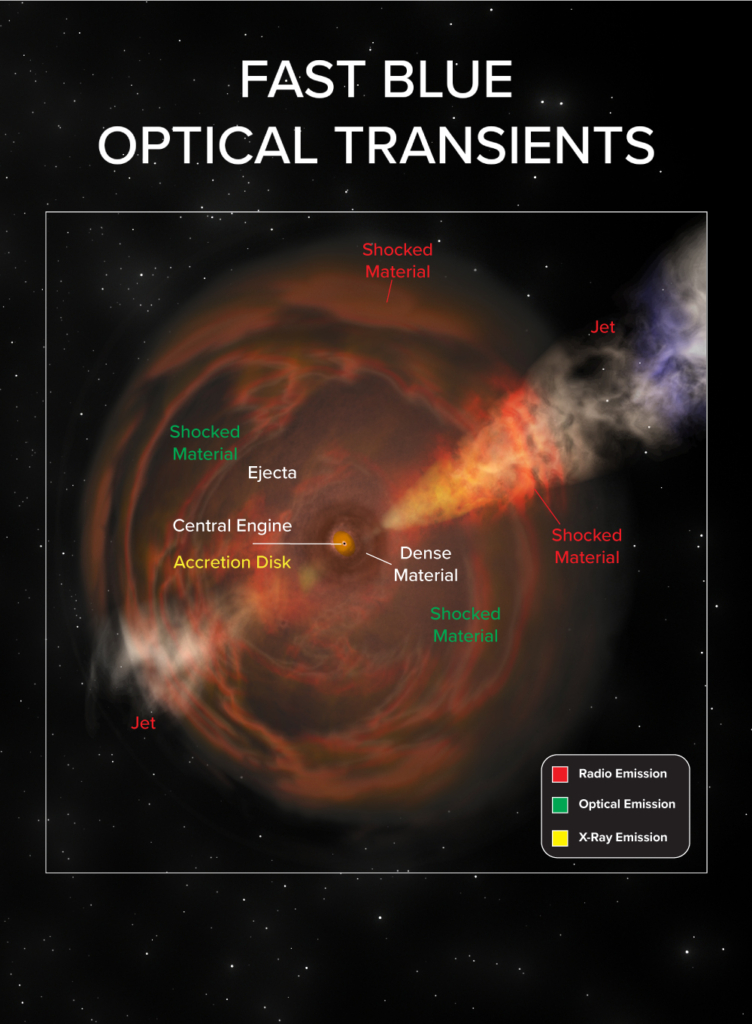
Fast Blue Optical Transients
Artist's conception illustrates the phenomena that make up the new class of cosmic explosions called Fast Blue Optical Transients.
Read more
Milky Way Over ALMA
In its high-elevation site, where the atmospheric pressure is half what it is at sea level, ALMA's views of...
Read more
Campbell Wade
Campbell M. Wade came to Green Bank, West Virginia in 1960. He had been an astronomer trained at Harvard...
Read more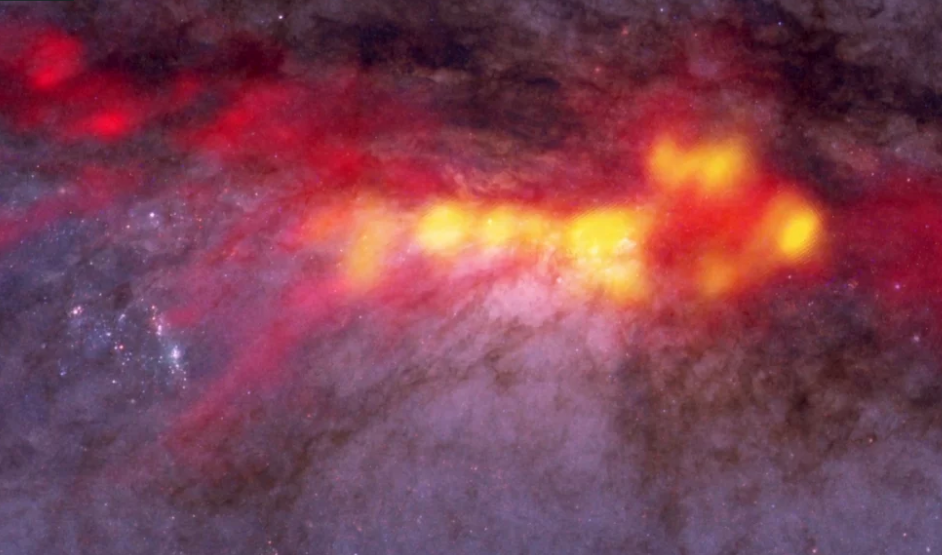
NGC 253: Why Starburst Galaxies Burst
Animation of ALMA data reveals a diffuse envelope of carbon monoxide gas (shown in red), which surrounds stellar nurseries...
Read more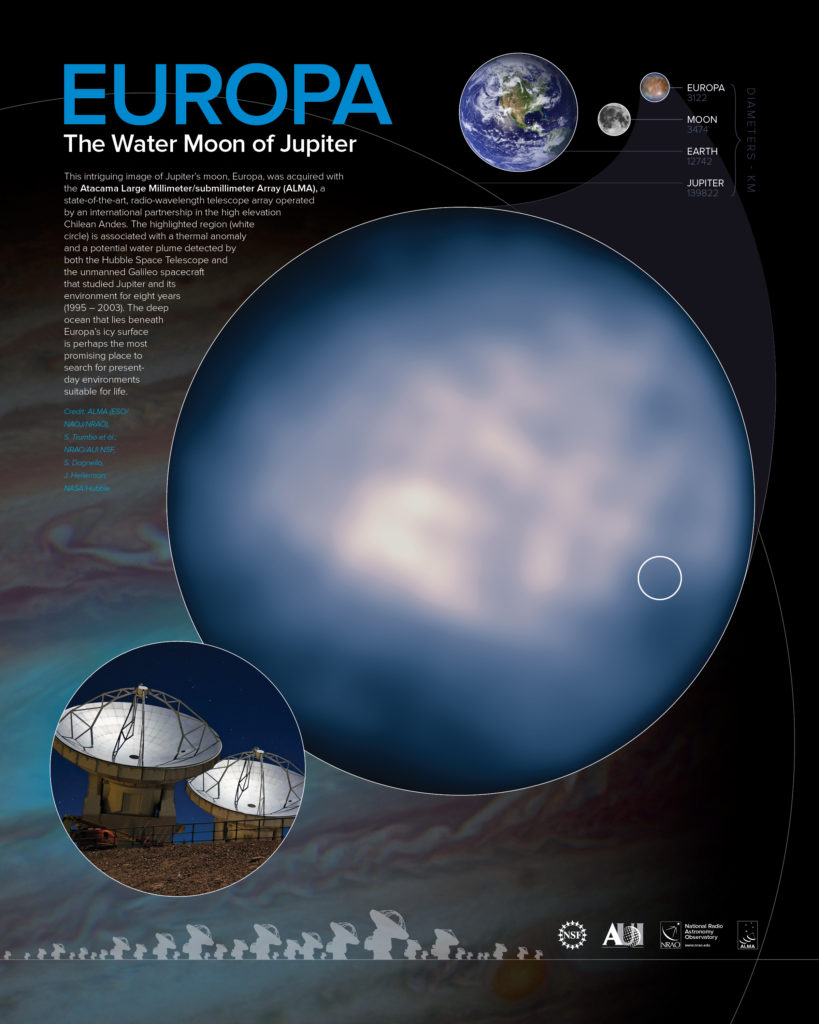
Europa, The Water Moon of Jupiter Poster
Downloadable poster of an ALMA observation of Europa. This intriguing image of Jupiter's moon, Europa, was acquired with the...
Read more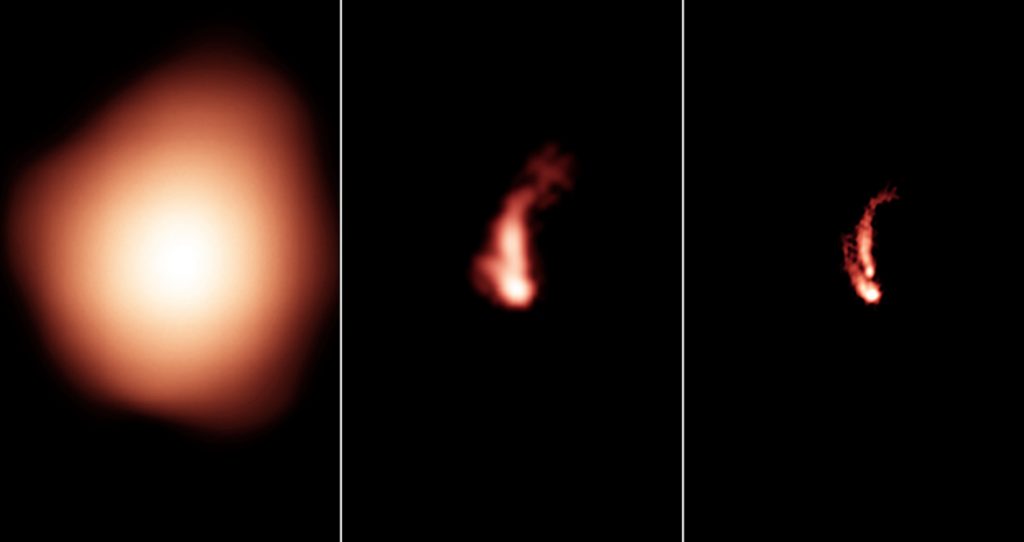
VLASS Sharpens the View
The new VLA Sky Survey (VLASS) sharpens the view. Here is the same radio-emitting object as seen, from left...
Read more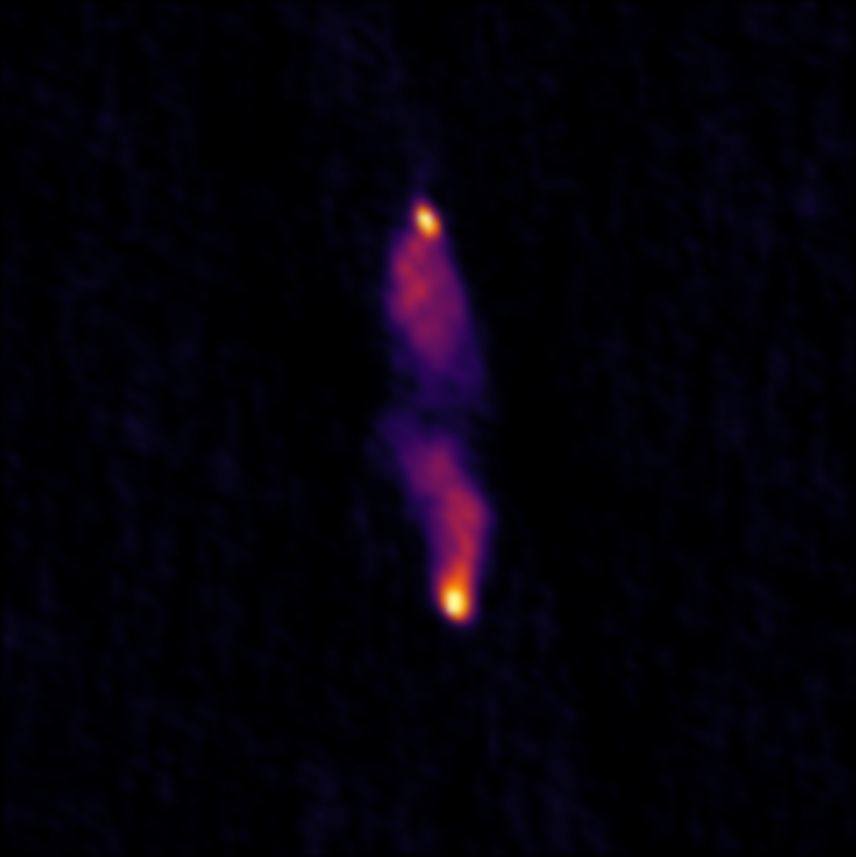
A Universe Full of Radio Galaxies
Radio galaxies are a subclass of active galactic nuclei (AGN) and, in most cases, display what is known as...
Read more
ALMA Gets Its First Antenna
On September 23, 2009, the first ALMA antenna was installed on Pad 106 at the 5,050-meter elevation Llano Chajnantor...
Read more
ALMA and VLA Images of AT2018cow
ALMA and VLA images of the mysterious new type of cosmic blast, AT2018cow at left. Visible-light image of outburst...
Read more
Double Boomerang
This new image of galaxy PKS 2014-55, located 800 million light years from Earth, was made by NRAO scientist...
Read more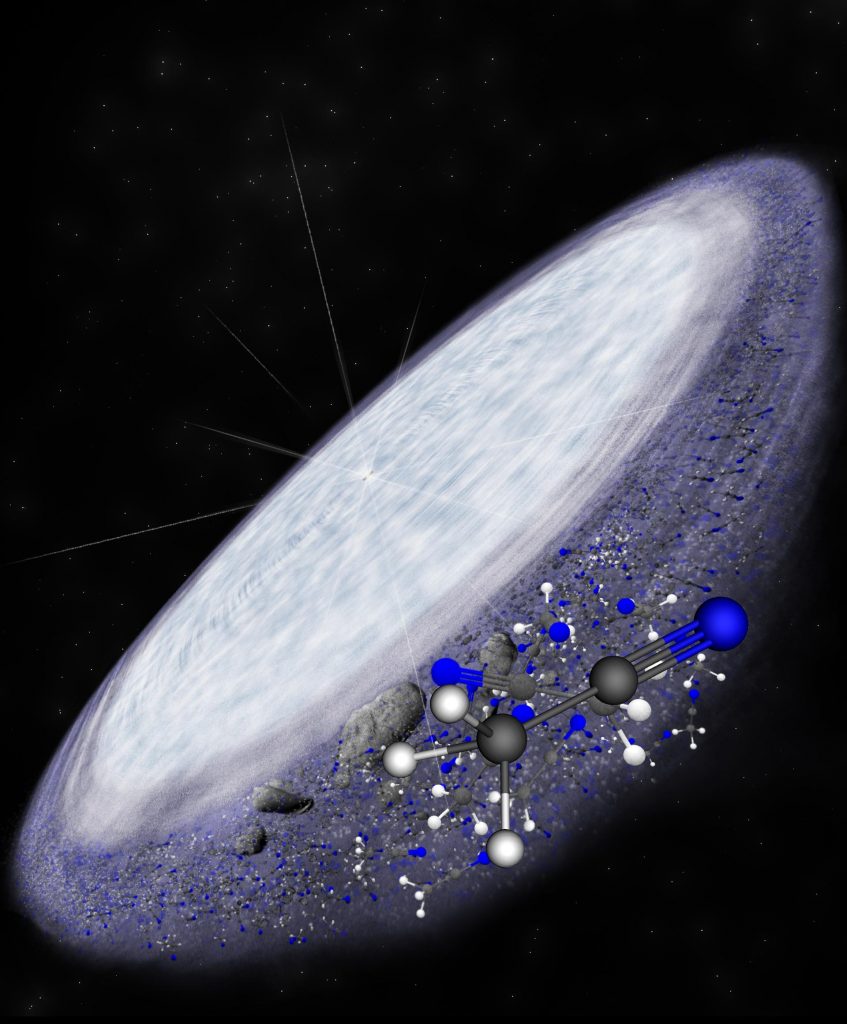
Hints that Prebiotic Chemistry Is Universal
Artist impression of the protoplanetary disk surrounding the young star MWC 480. ALMA has detected the complex organic molecule...
Read more
Interpreting Science through Art. Time Domain Astronomy and the Next-Generation Very Large Array
In June of 2017, NRAO invited four artists to a conference at New Mexico Institute of Mining and Technology...
Read more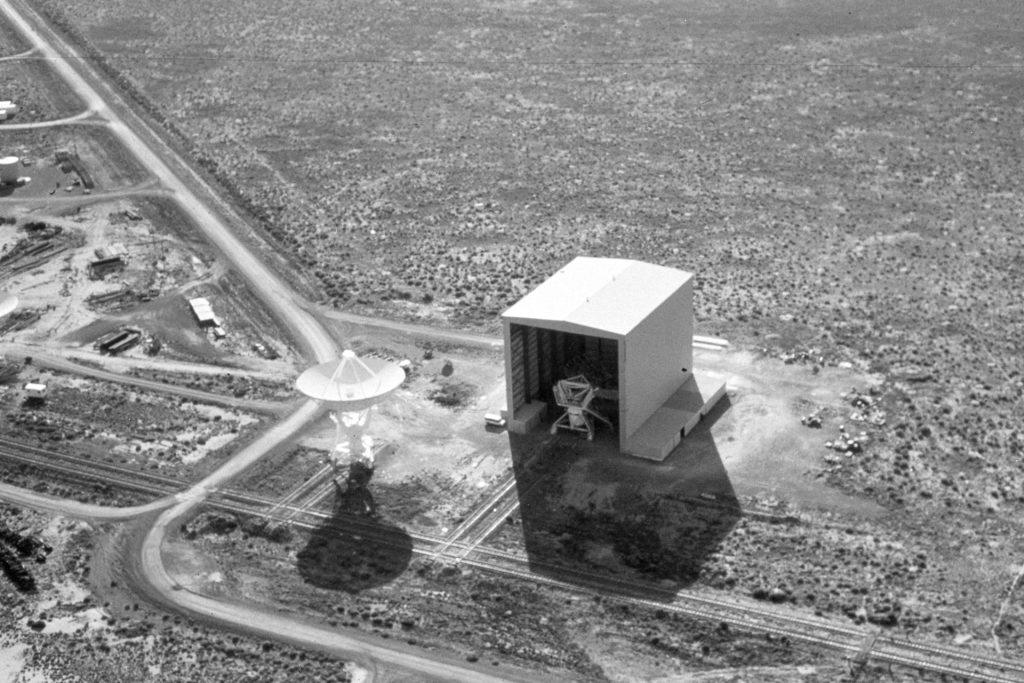
Early Days in the VLA Barn
In the 1970s, the Very Large Array was still under construction in the New Mexico desert. In this aerial...
Read more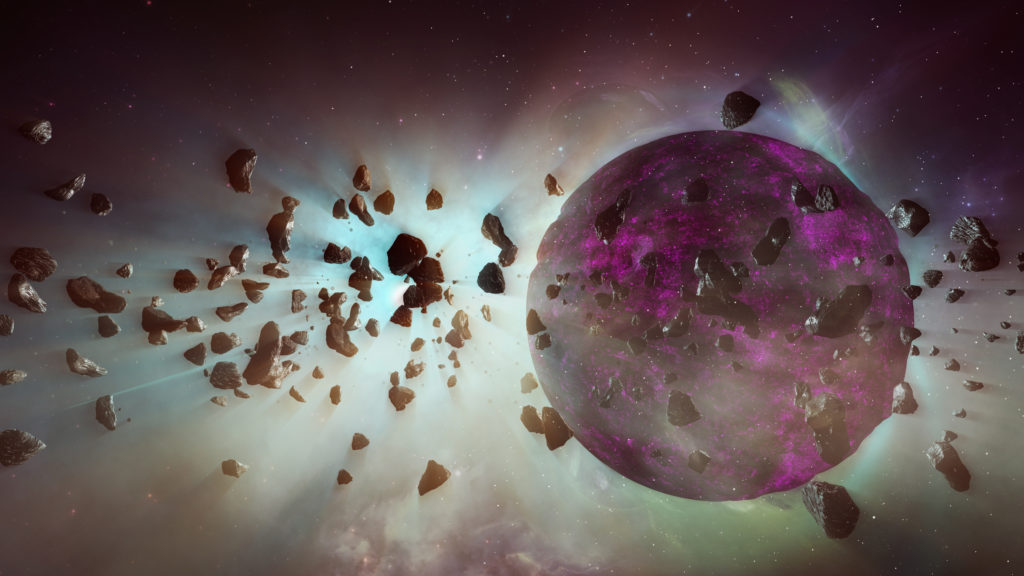
ngVLA: Together We See More
The Atacama Large Millimeter/submillimeter Array (ALMA) has shown us young star systems where planets are forming. The next-generation Very...
Read more
Astronomers Detect Whirlpool Movement in Early Galaxies
ALMA images of rotating galaxies in the early universe shown on a background from the Hubble Space Telescope.
Read more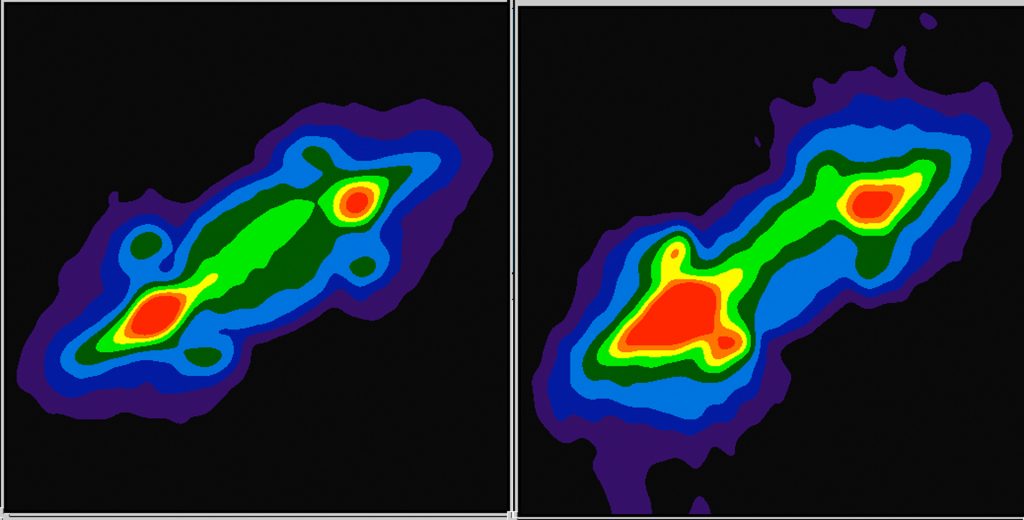
A Comet Hits Jupiter
This pair of radio images taken by the Very Large Array (VLA) shows the planet Jupiter before (left -...
Read more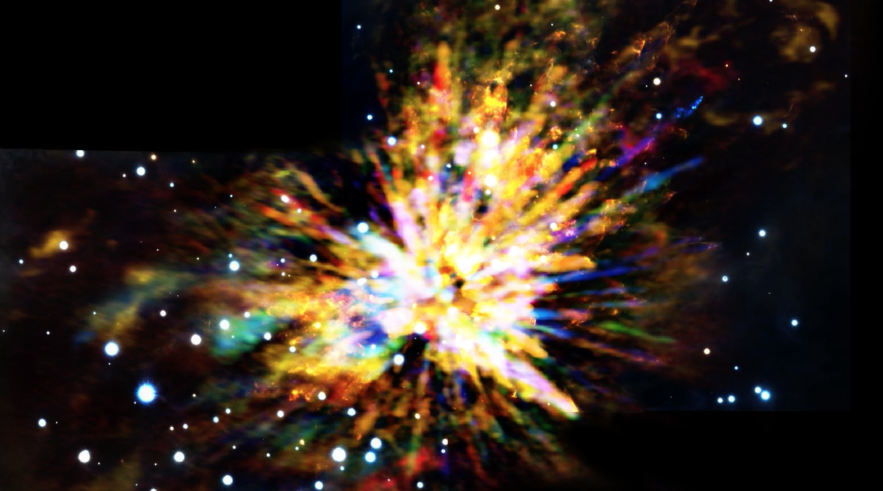
ALMA and the OMC-1
This animation shows the motions of the gas streamers emanating from the OMC-1 star-forming region in Orion as seen...
Read more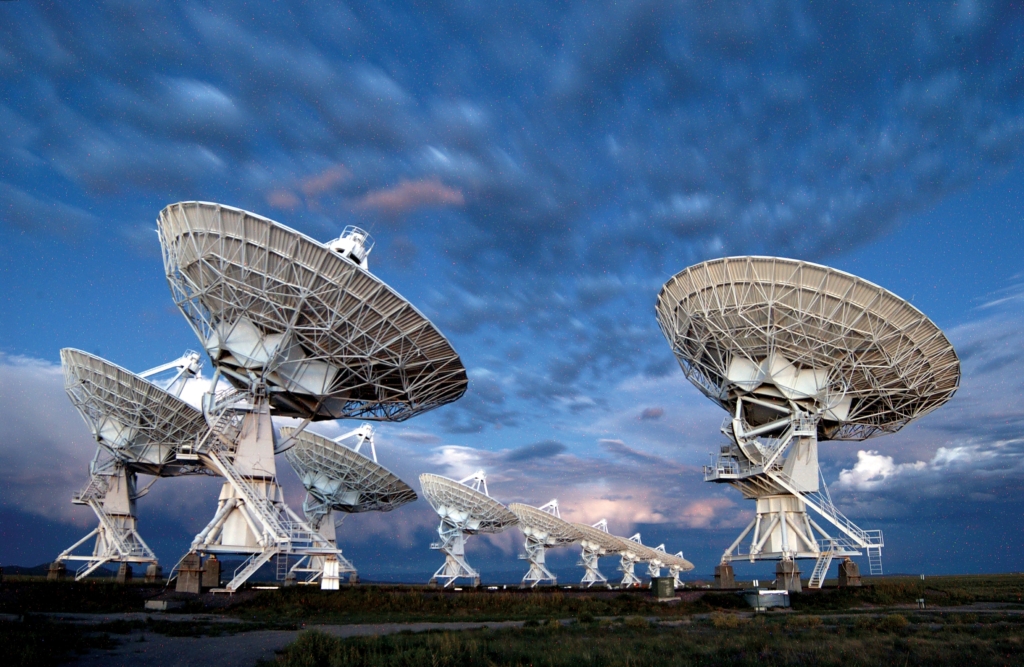
A Cloudy Twilight at the VLA
Clouds linger at twilight over the Karl G. Jansky Very Large Array in its most compact configuration.
Read more
ALMA Reveals Inner Web of Stellar Nursery
This spectacular and unusual image shows part of the famous Orion Nebula, a star formation region lying about 1350...
Read more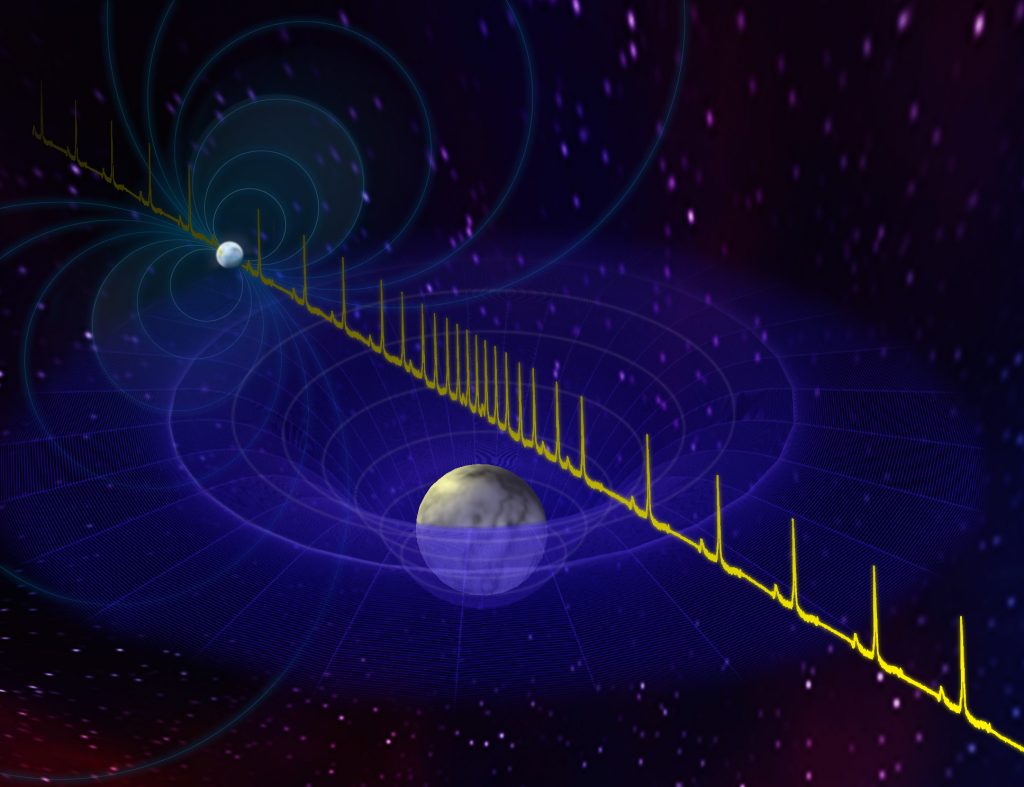
How to Weigh a Pulsar
Pulses from a neutron star (rear) are slowed as they pass near the foreground white dwarf star. The effect,...
Read more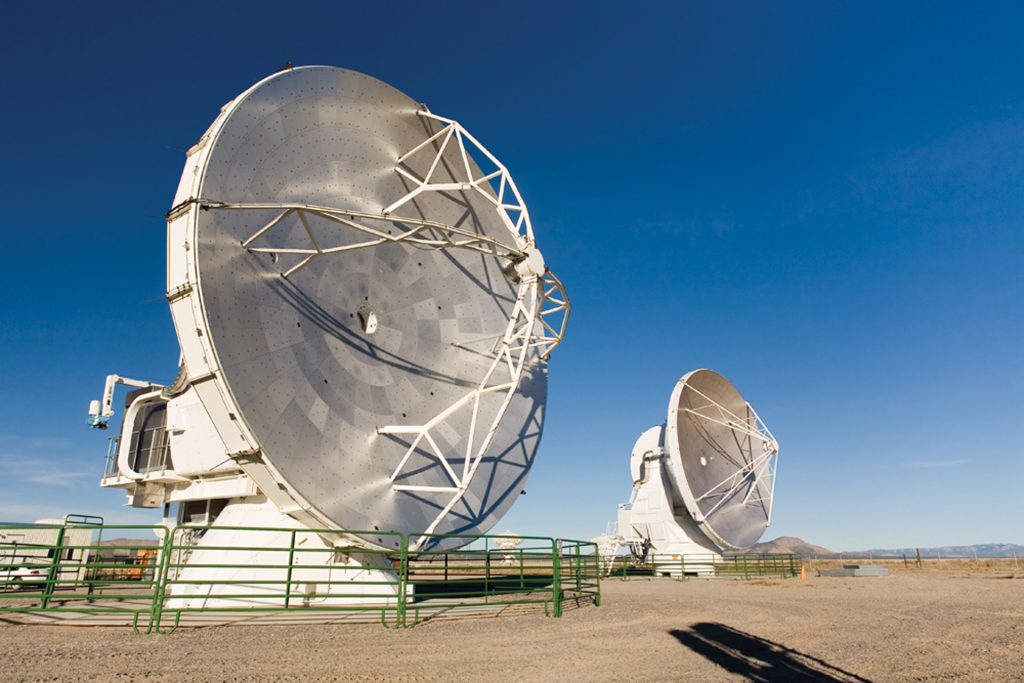
First Fringes of ALMA Prototypes
In March of 2007, two ALMA prototype antennas were linked together at the Very Large Array in New Mexico...
Read more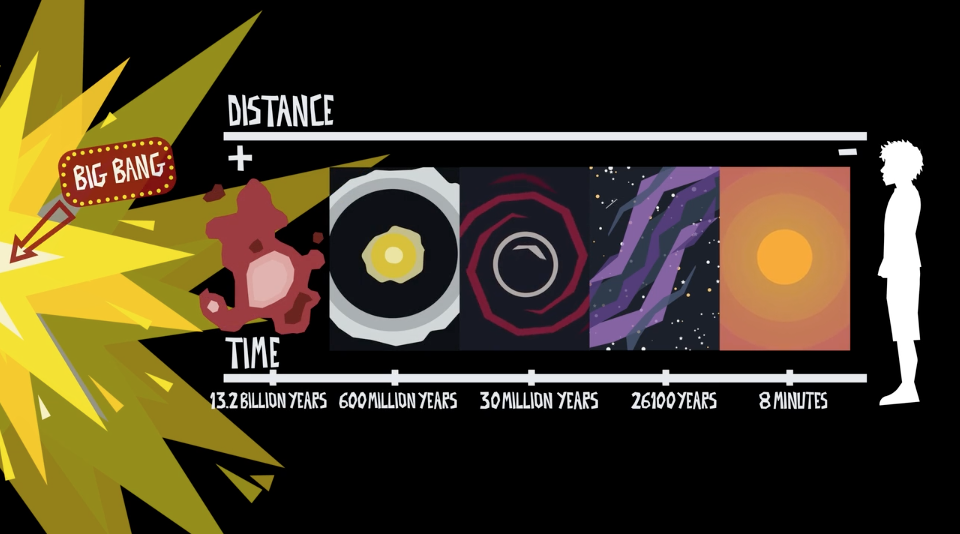
#WAWUA – ALMA is a Timemachine!
With colorful artwork and clever animations, these short videos delve into topics that explain the fundamentals of radio astronomy,...
Read more
#WAWUA – We are Stardust!
With colorful artwork and clever animations, these short videos delve into topics that explain the fundamentals of radio astronomy,...
Read more
VLBA Reveals First-Ever Black Hole “Visual Binary”
VLBA image of the central region of the galaxy 0402+379, showing the two cores, labeled C1 and C2, identified...
Read more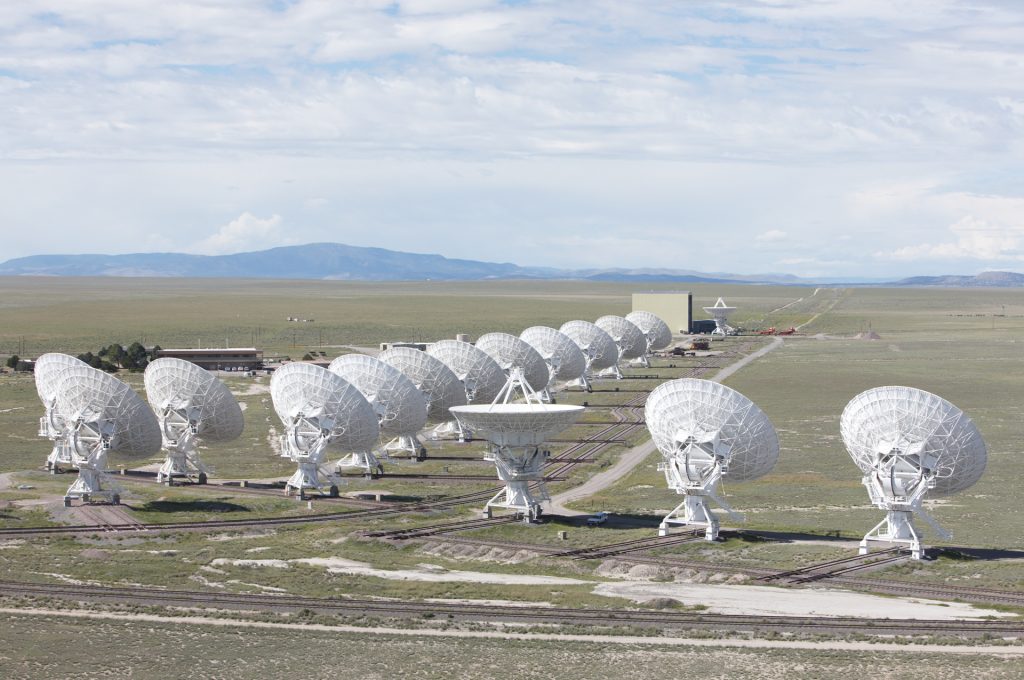
The Backs of the VLA Dishes
The Very Large Array antennas dip in formation to observe a target in the southwest sky. Radio telescopes can...
Read more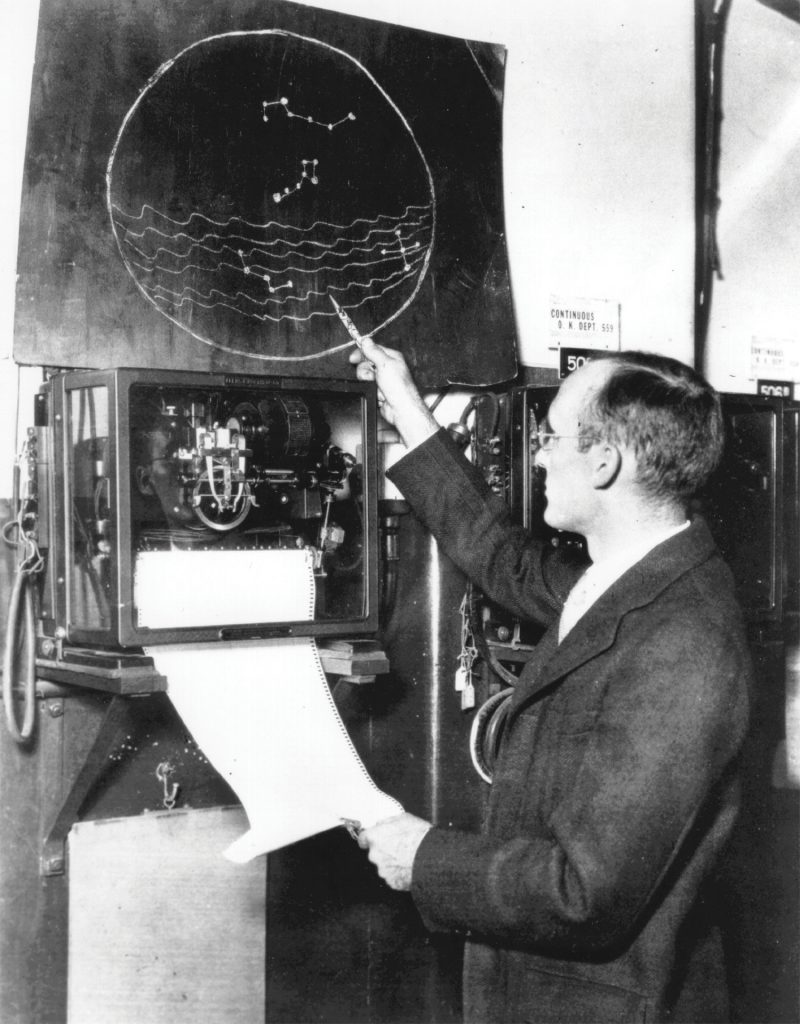
Karl Jansky with his Milky Way Map
Karl Guthe Jansky joined the staff of the Bell Telephone Laboratories in Holmdel, New Jersey in 1928. While hunting...
Read more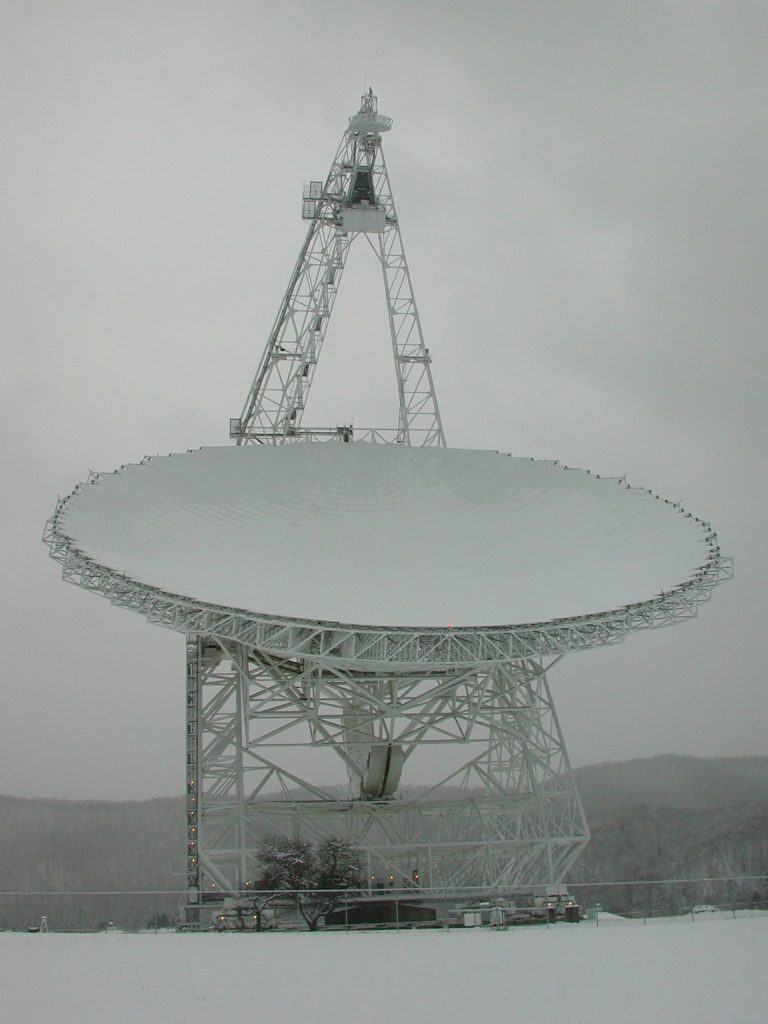
A Dish as White as Snow
The paint on the Green Bank Telescope (GBT) is a special blend that reflects sunlight, gives off heat to...
Read more
Scott Ransom: Part 10 Black Holes
Scott Ransom, an astronomer at NRAO, talks about black holes.
Read more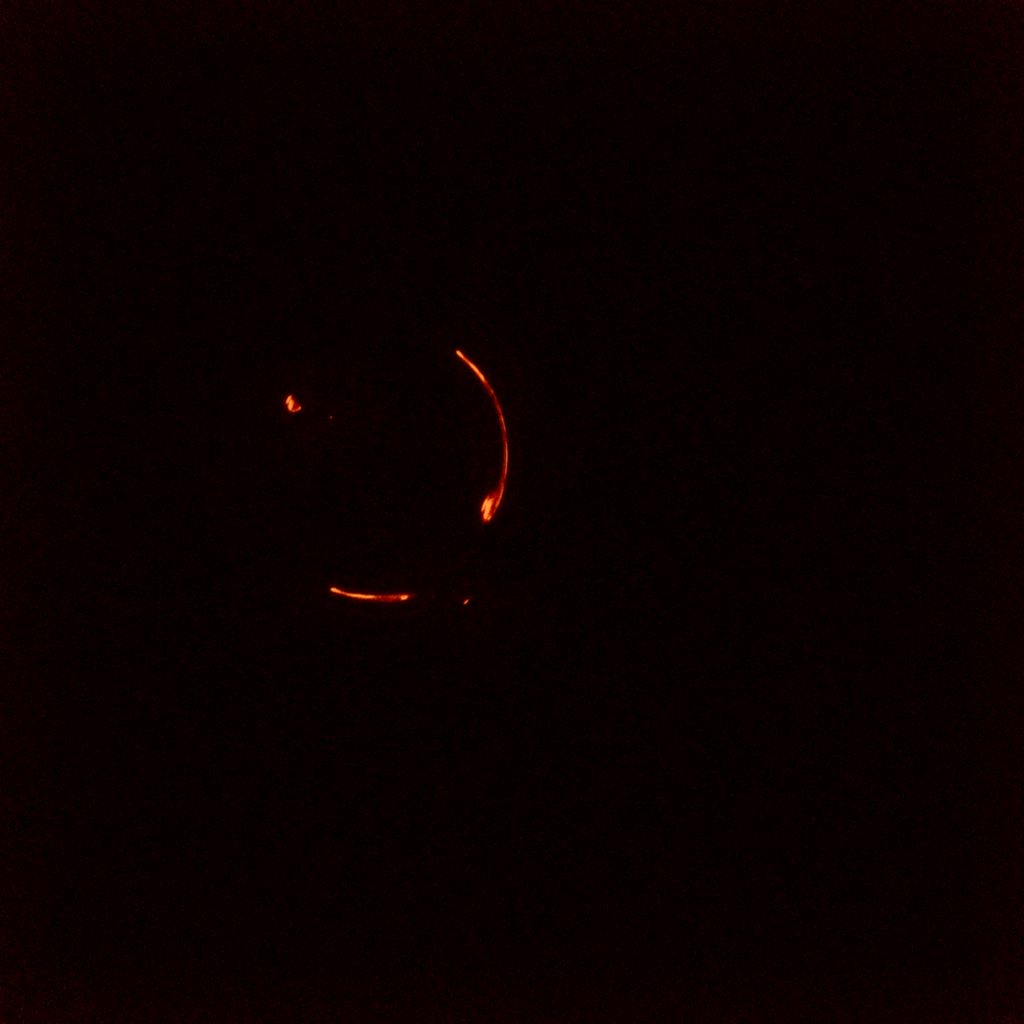
VLBI Network of Telescopes Bring Astronomers Closer to Understanding Dark Matter
Gravitational lensing allows astronomers to observe incredibly distant radio sources that cannot be directly detected. By observing how the...
Read more
Across the Milky Way (teal version)
A radio and infrared wave panorama of a section of the Milky Way in the constellations of Scutum and...
Read more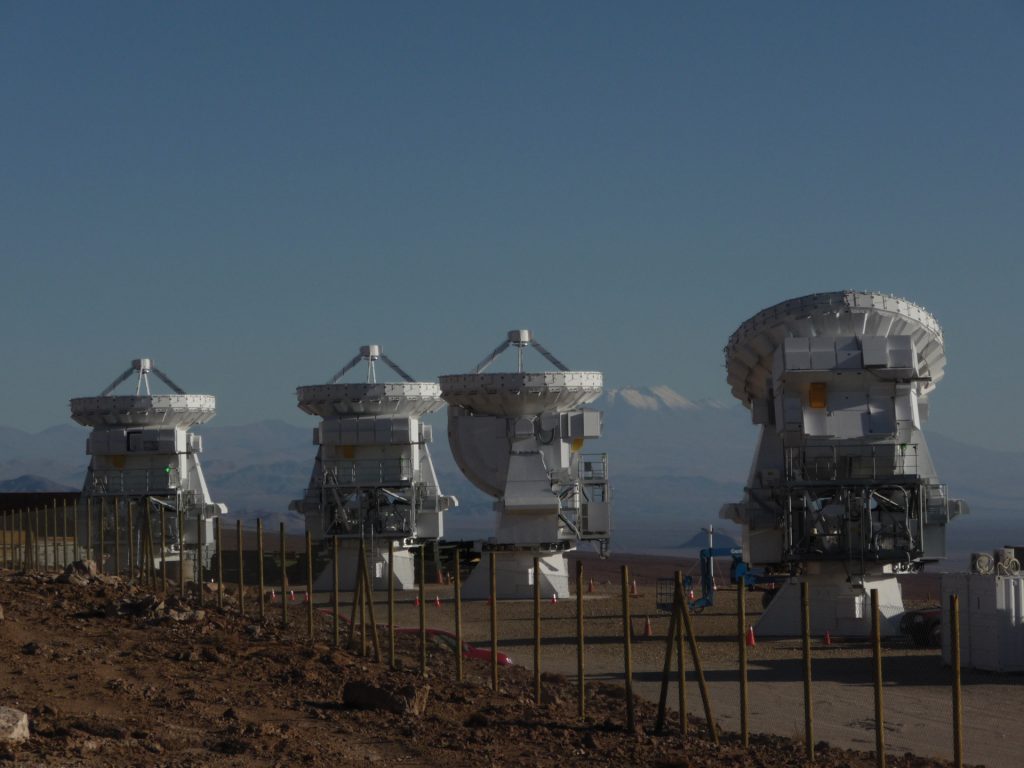
A Quartet of 7-meter Antennas
Four 7-meter Japanese ALMA telescopes are being readied for final testing and acceptance by ALMA at the Operations Support...
Read more





